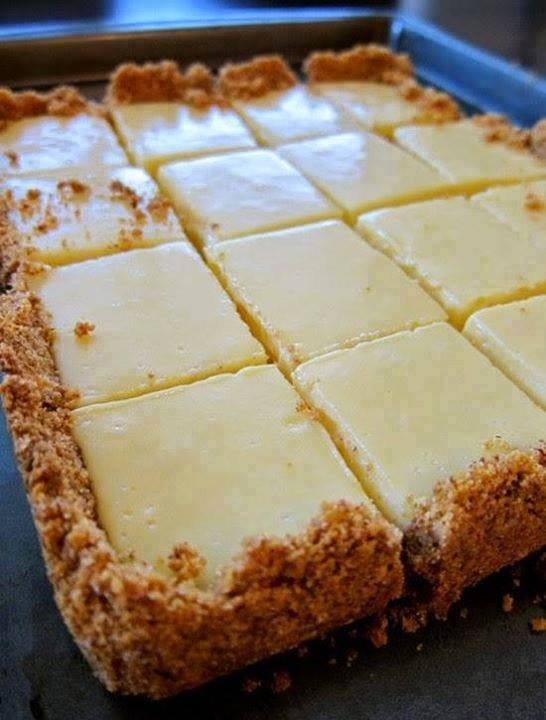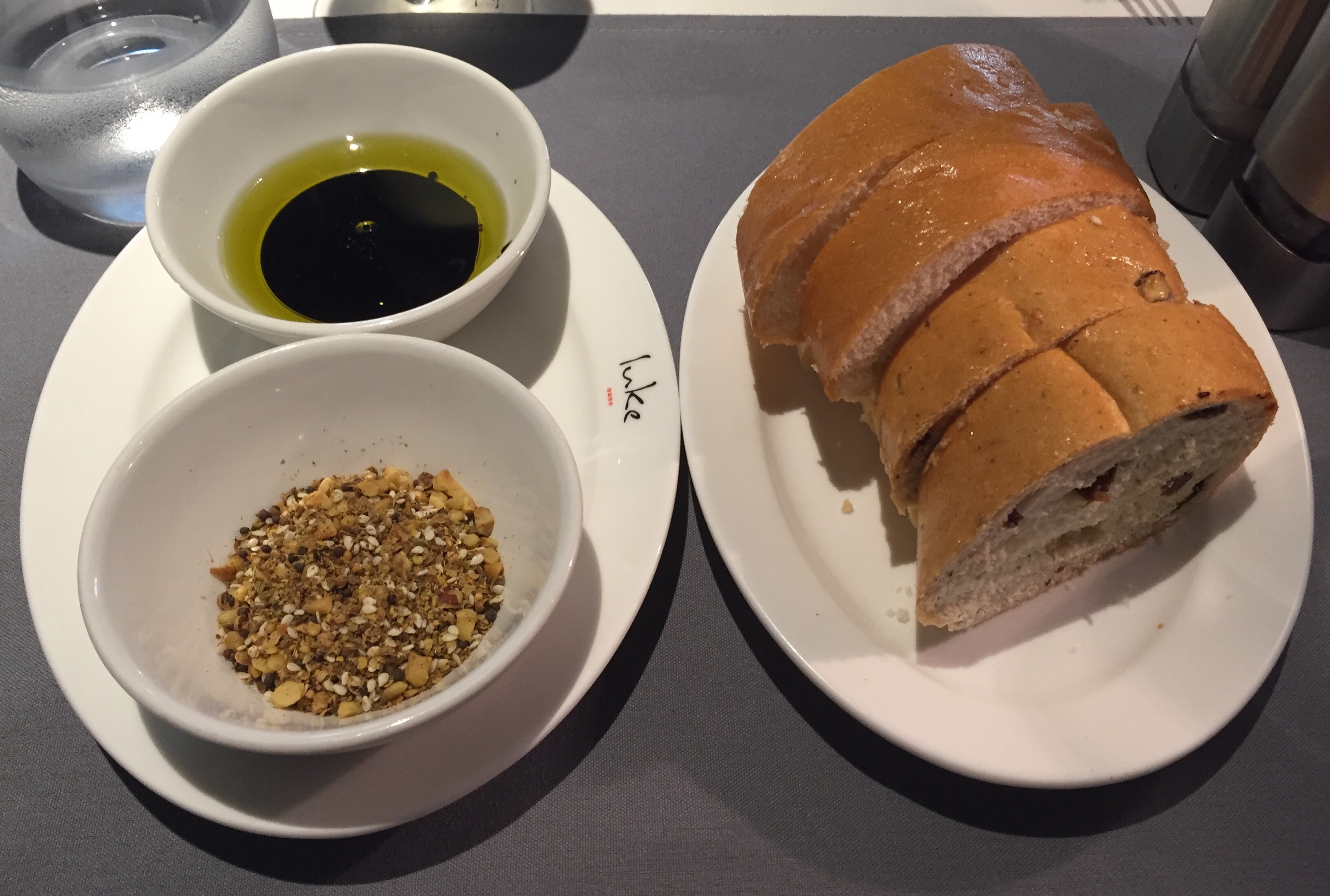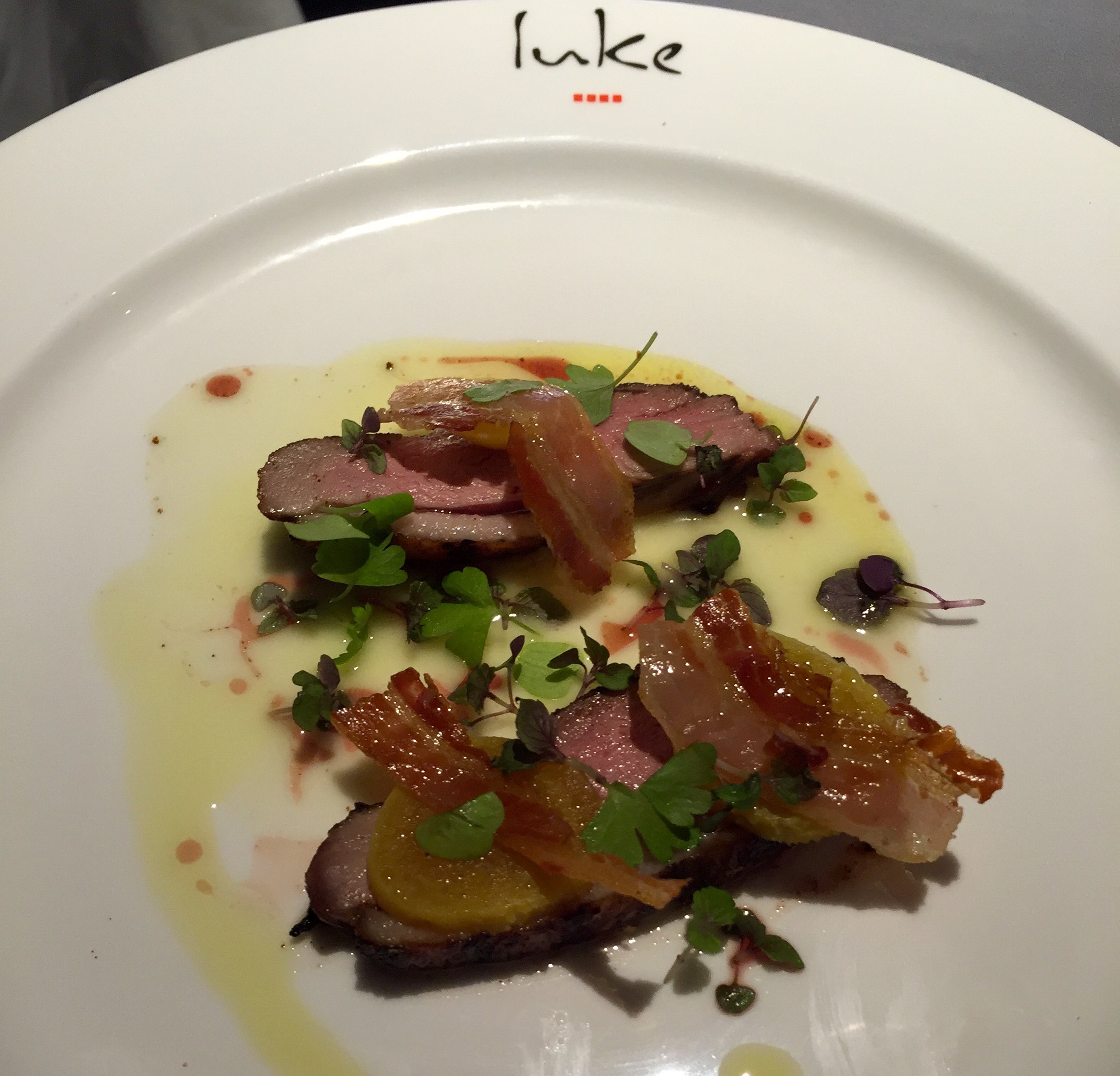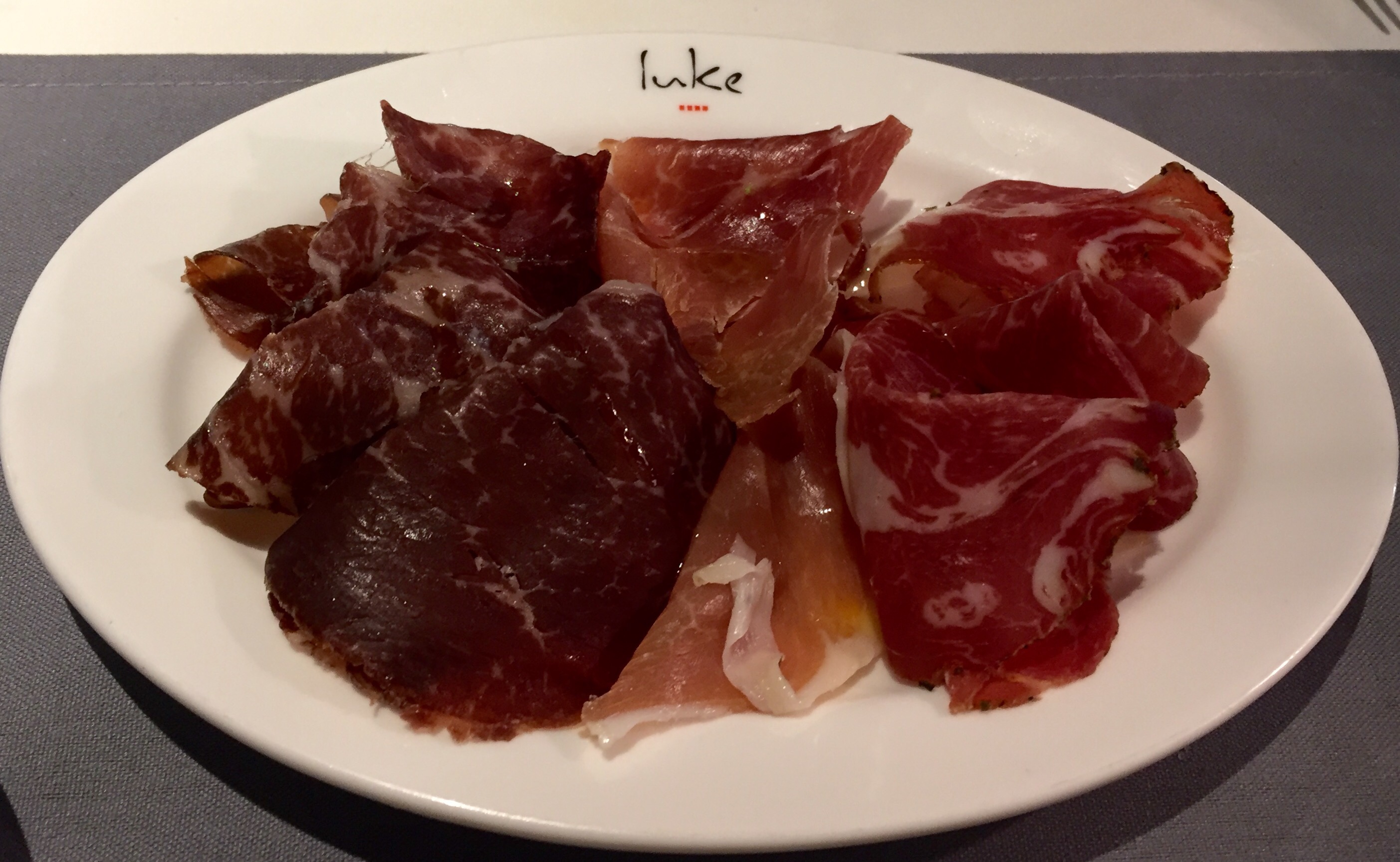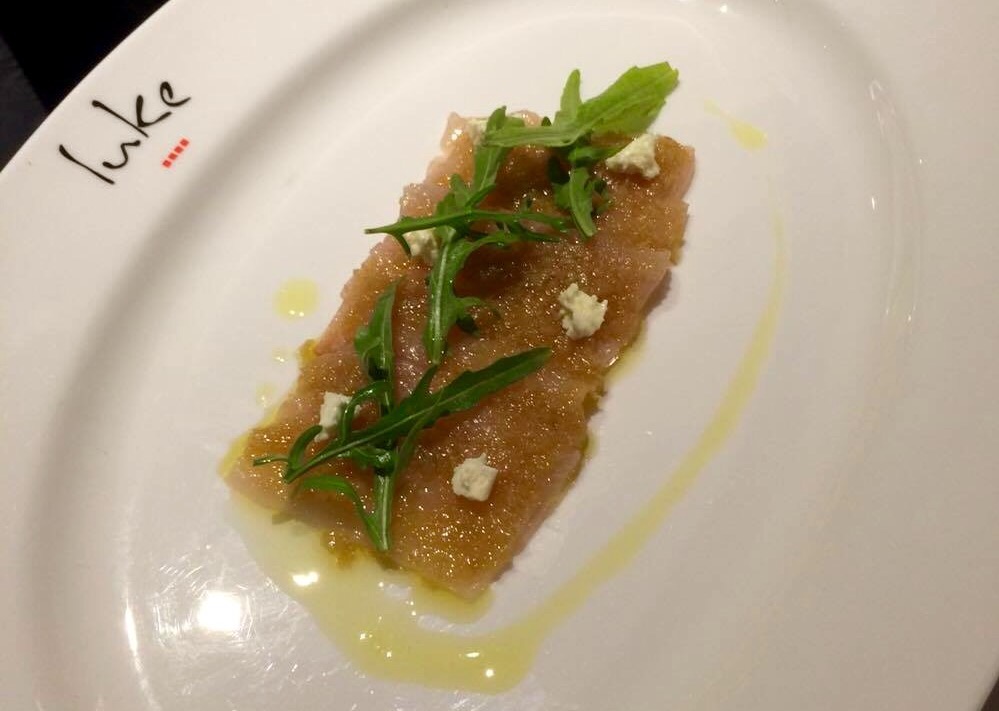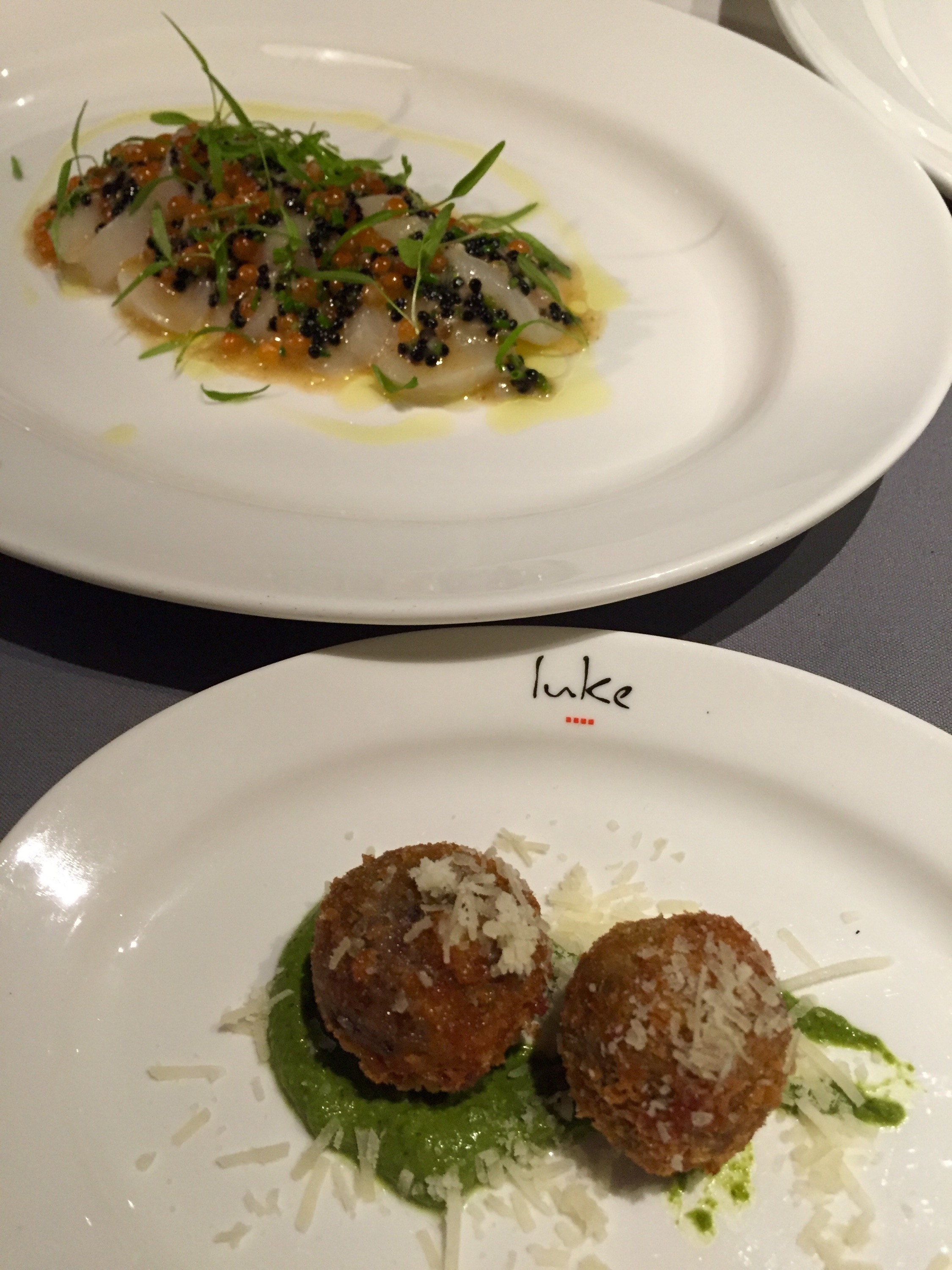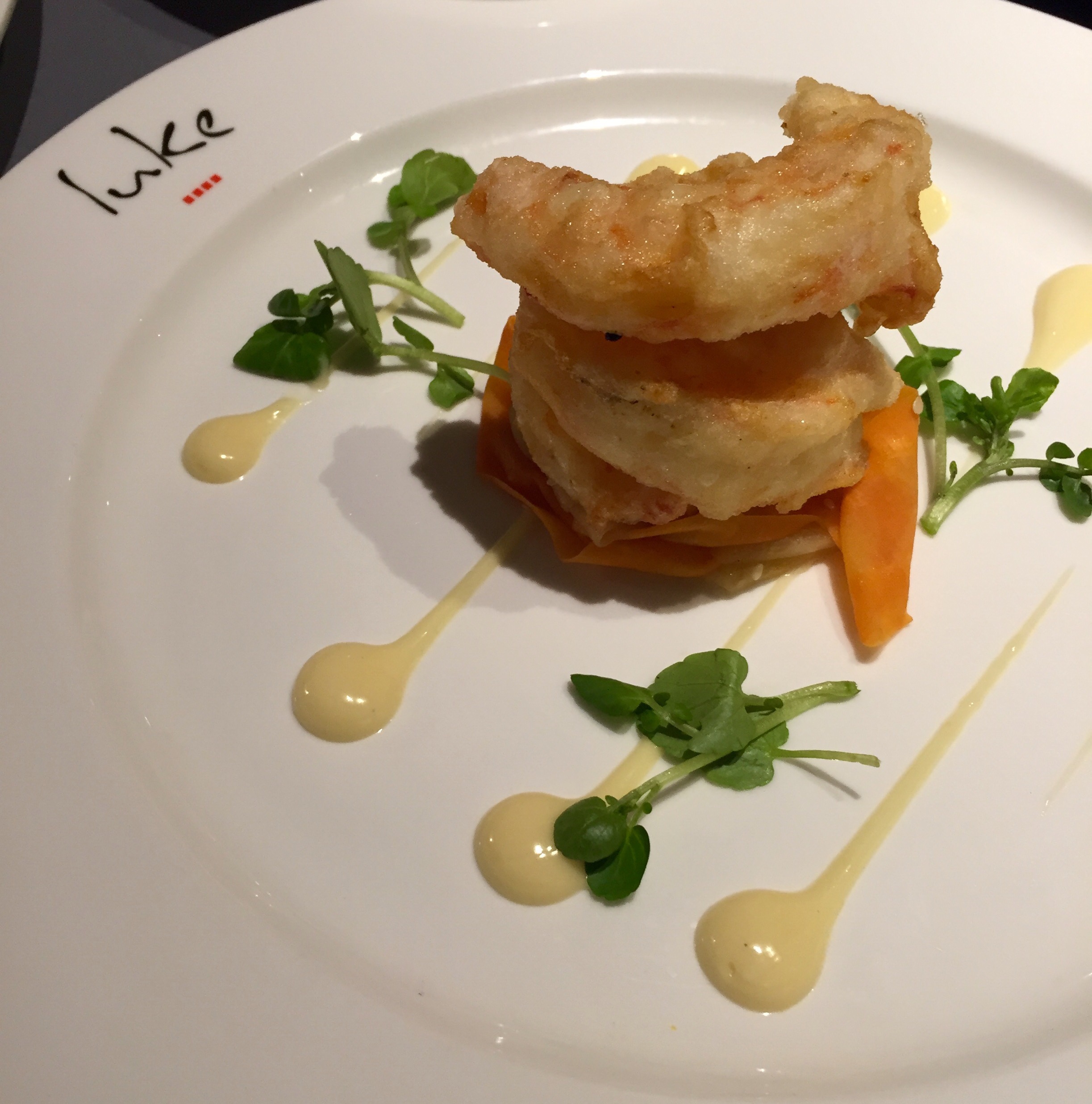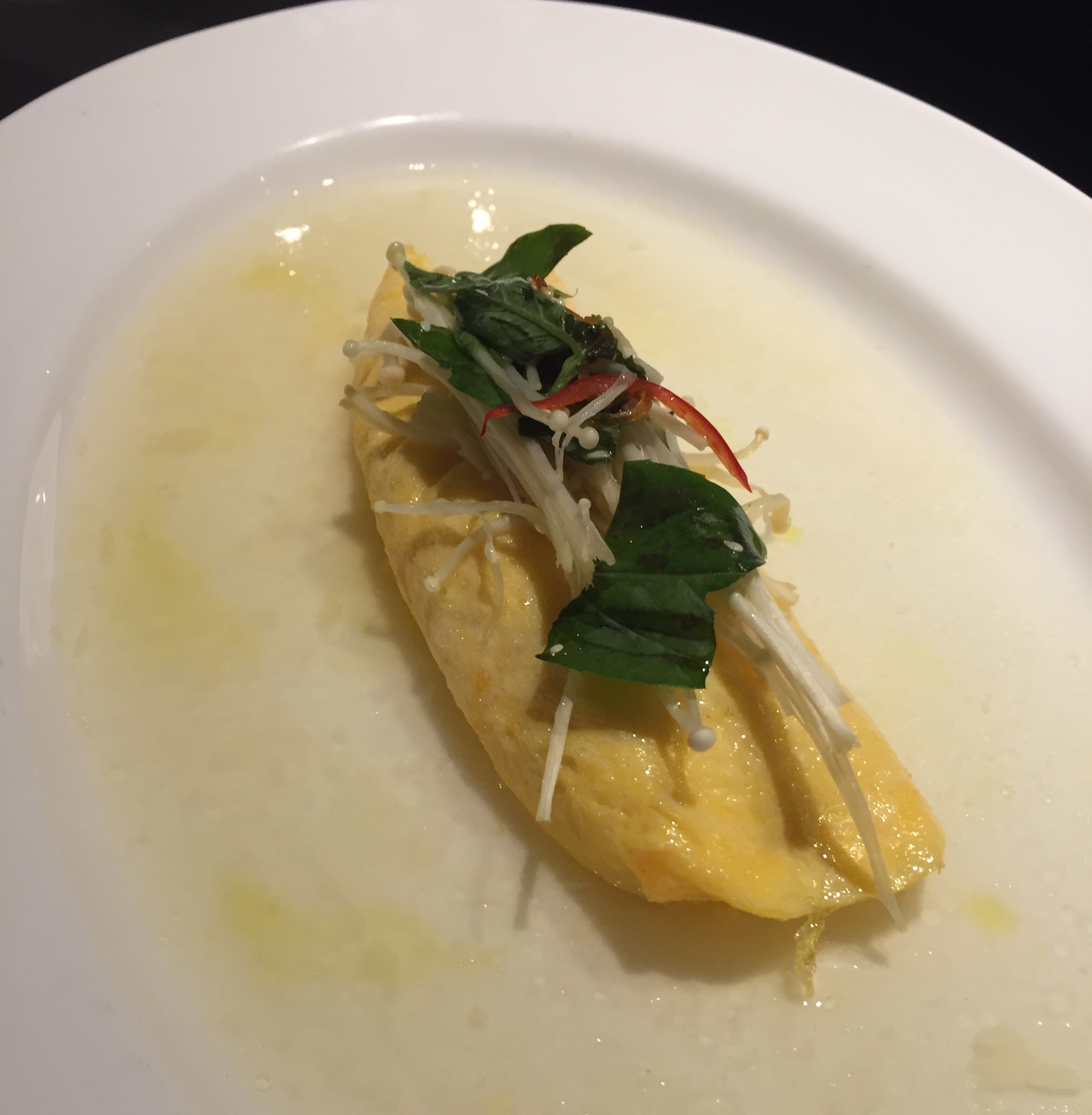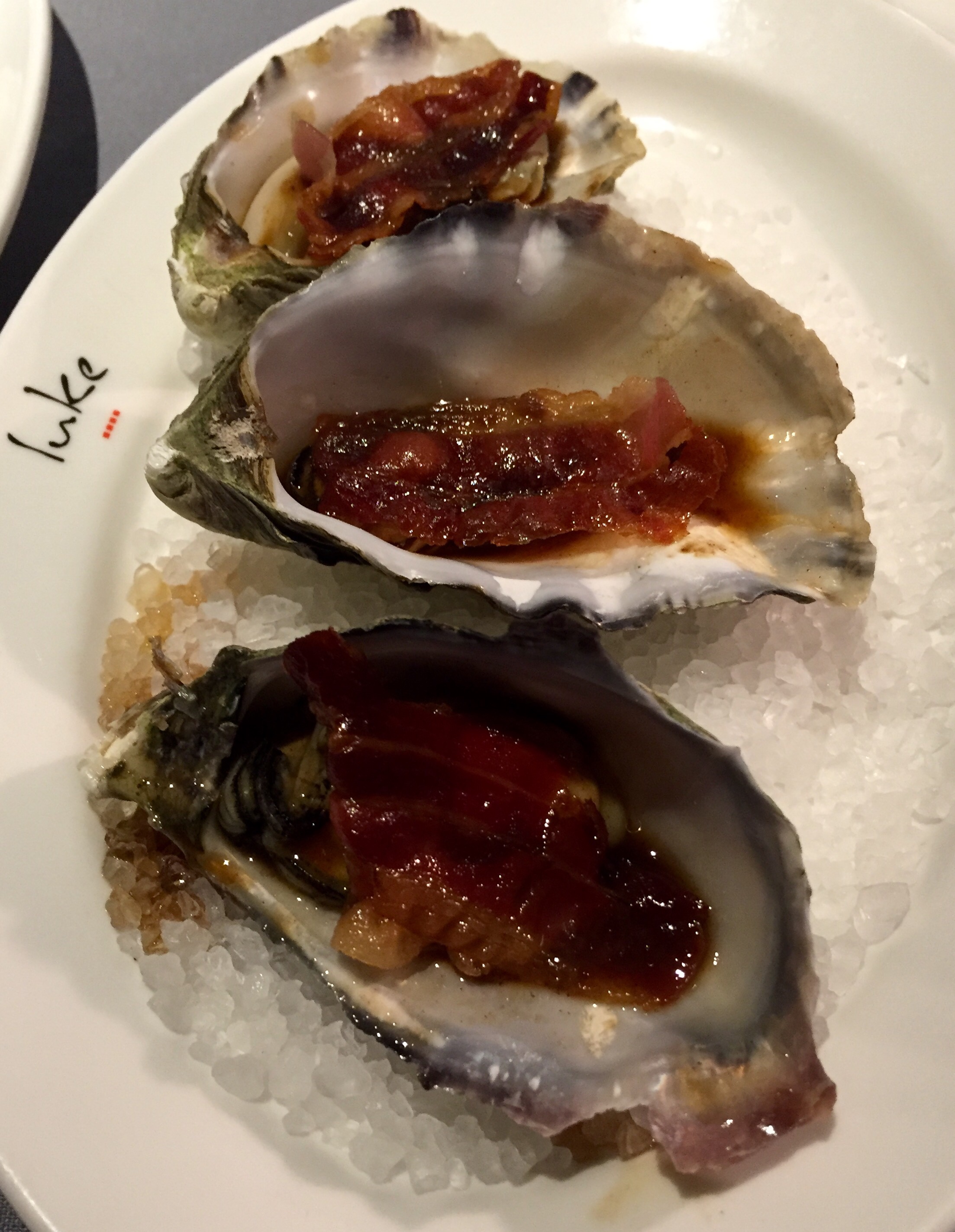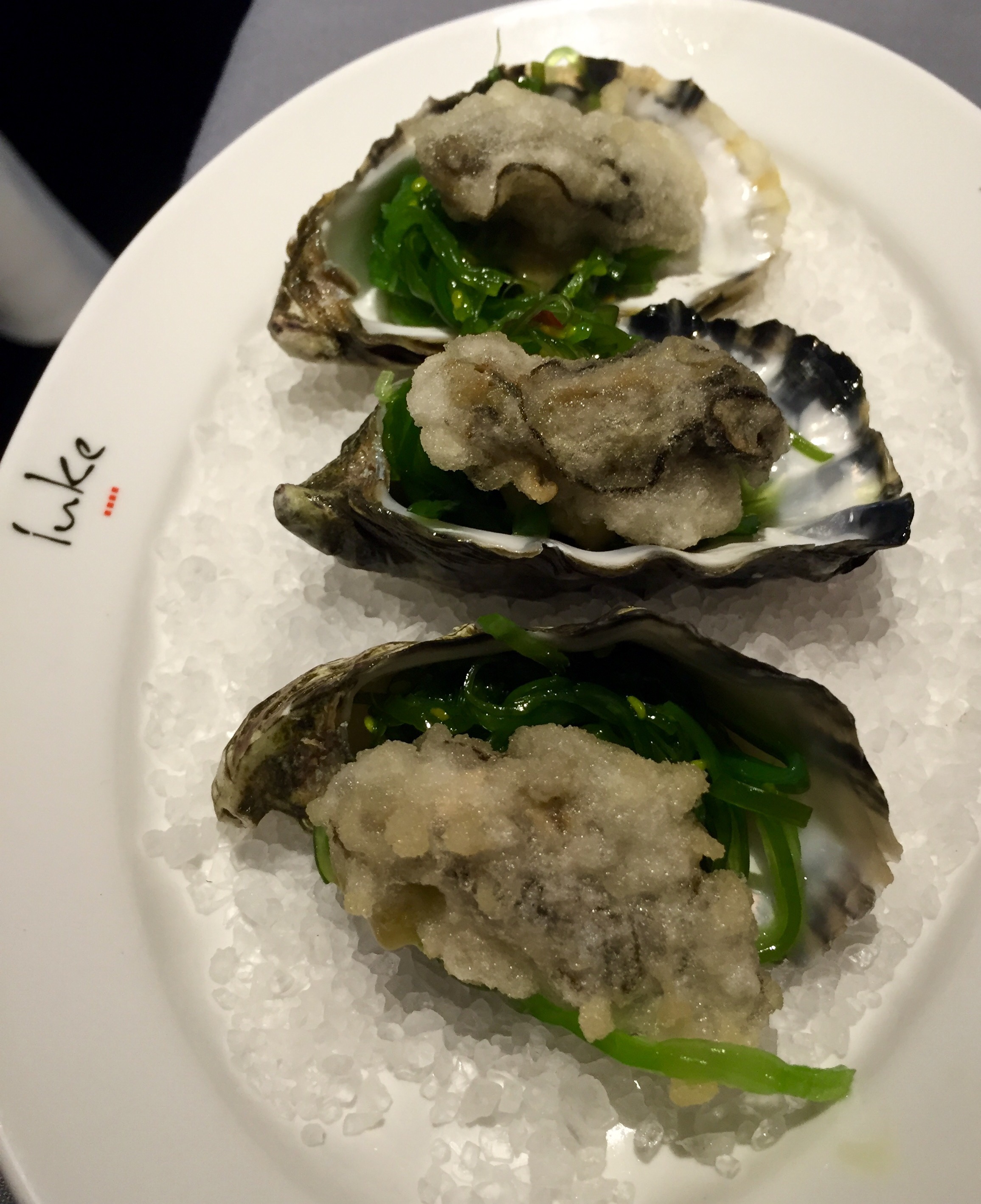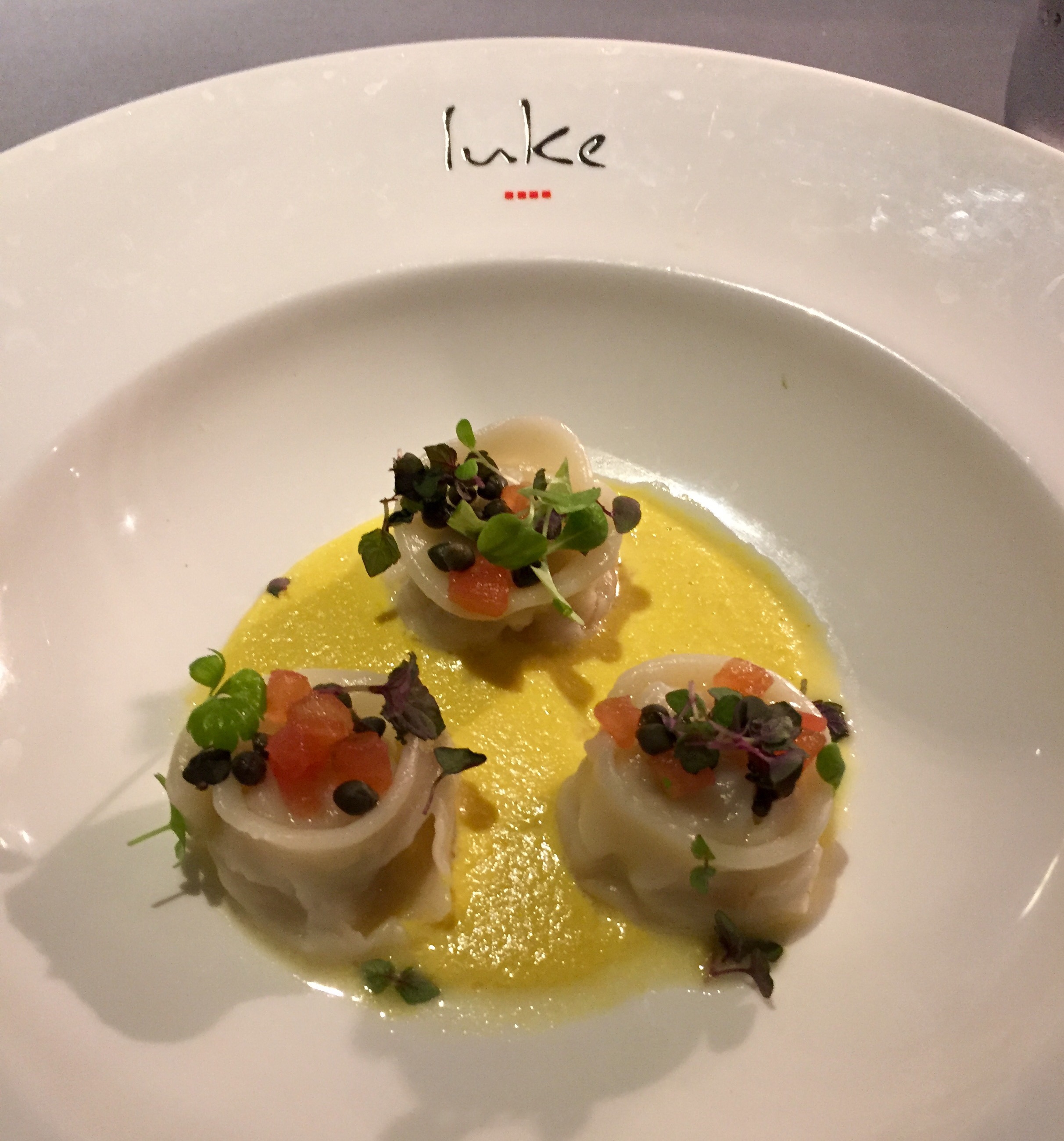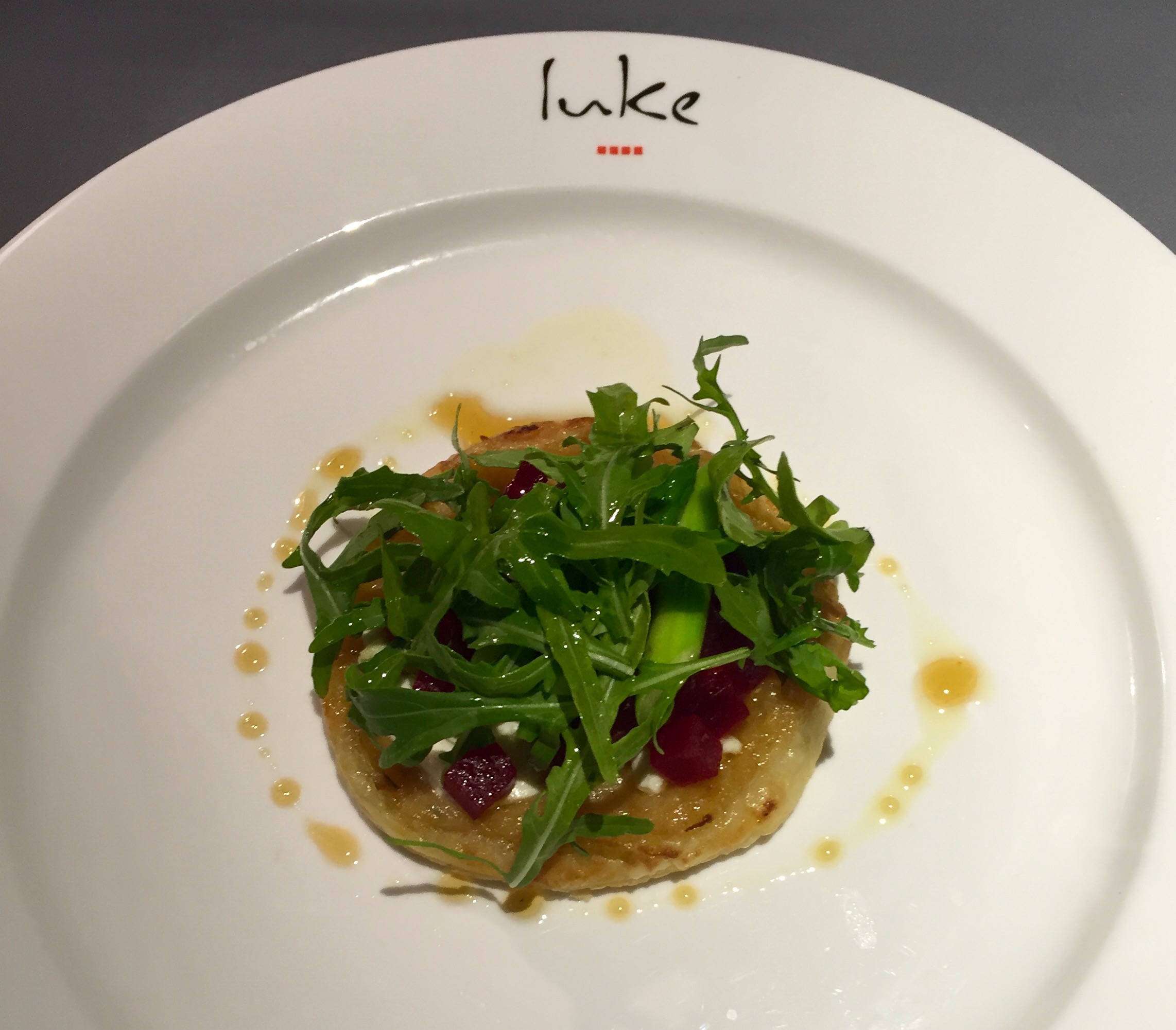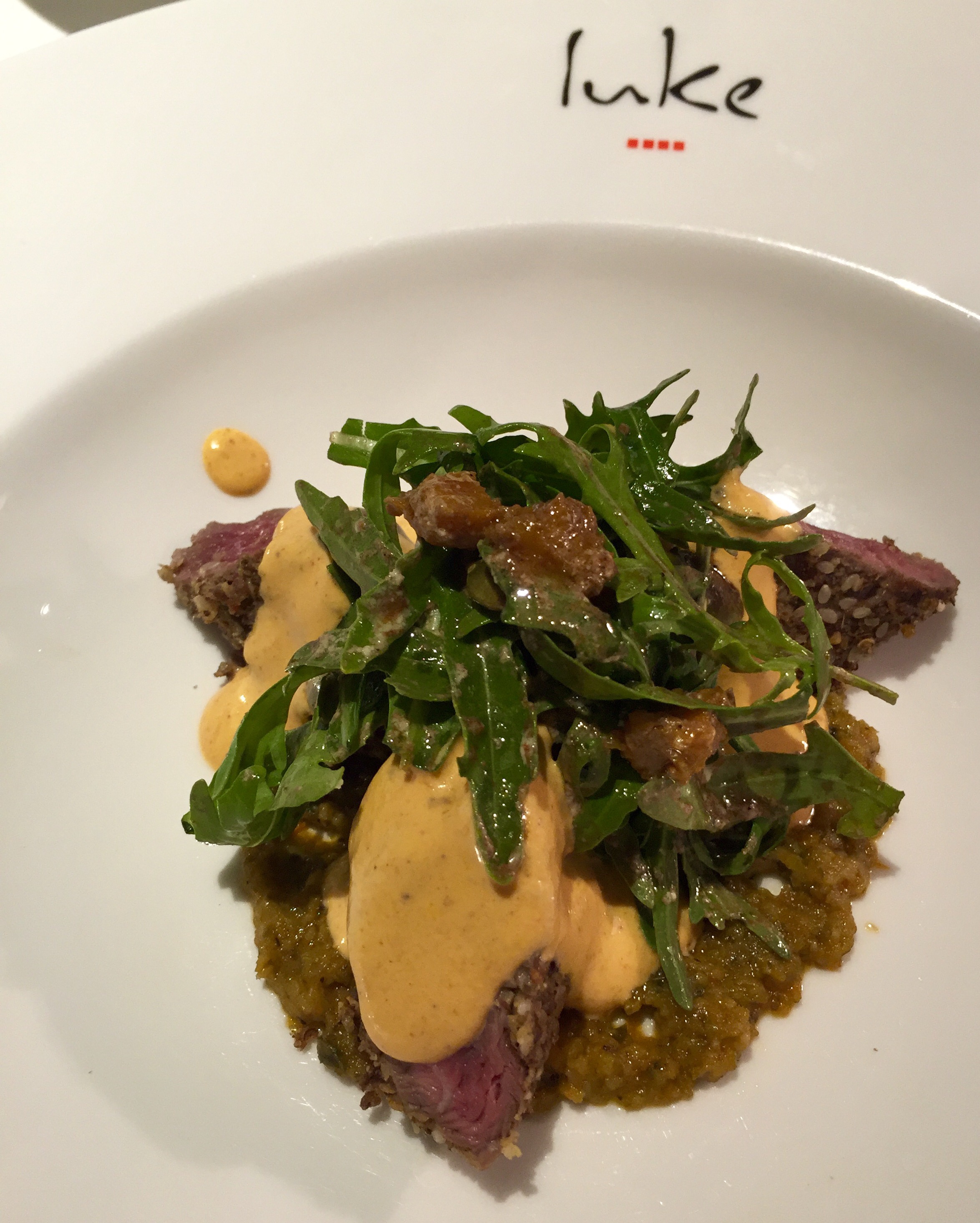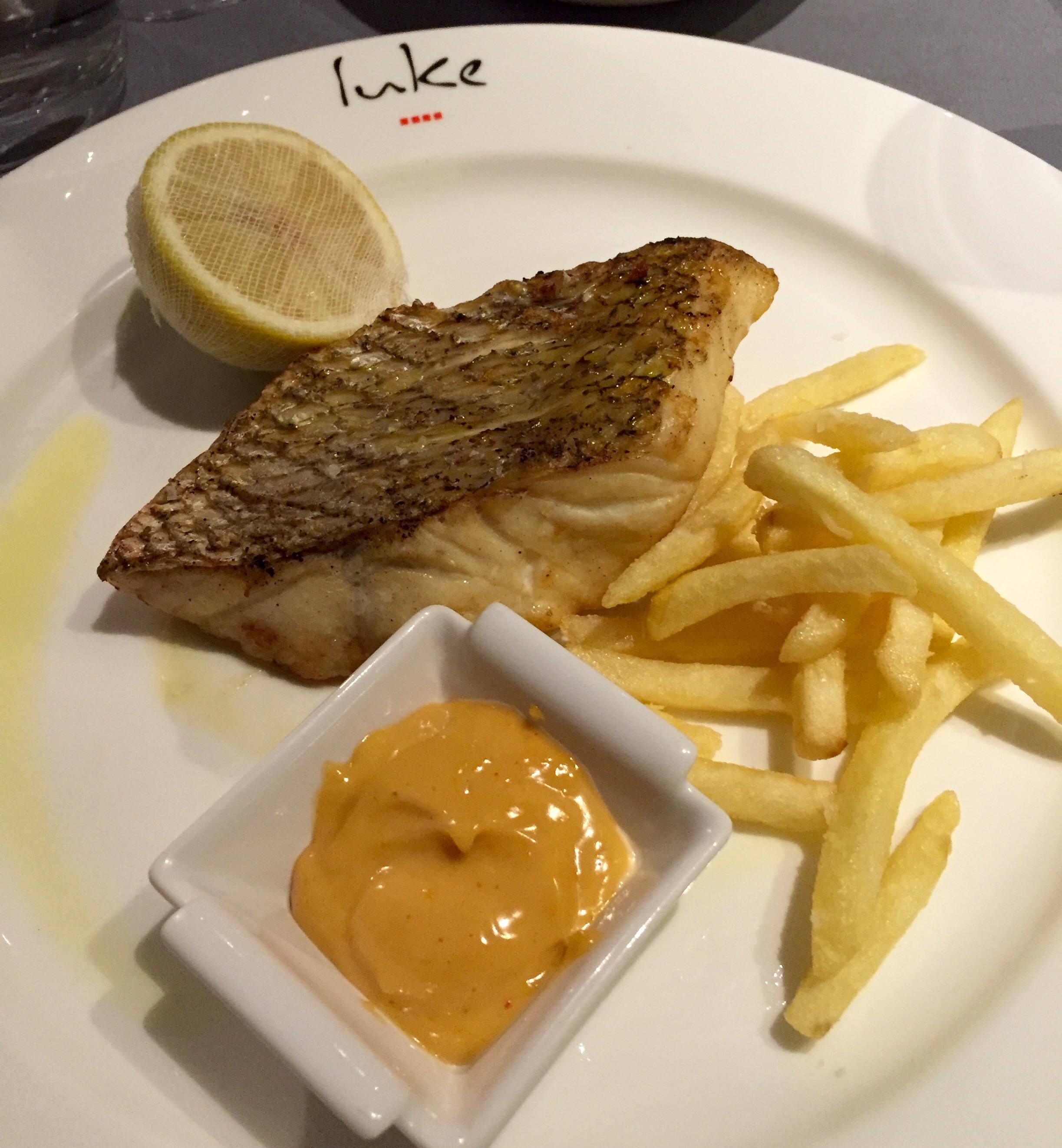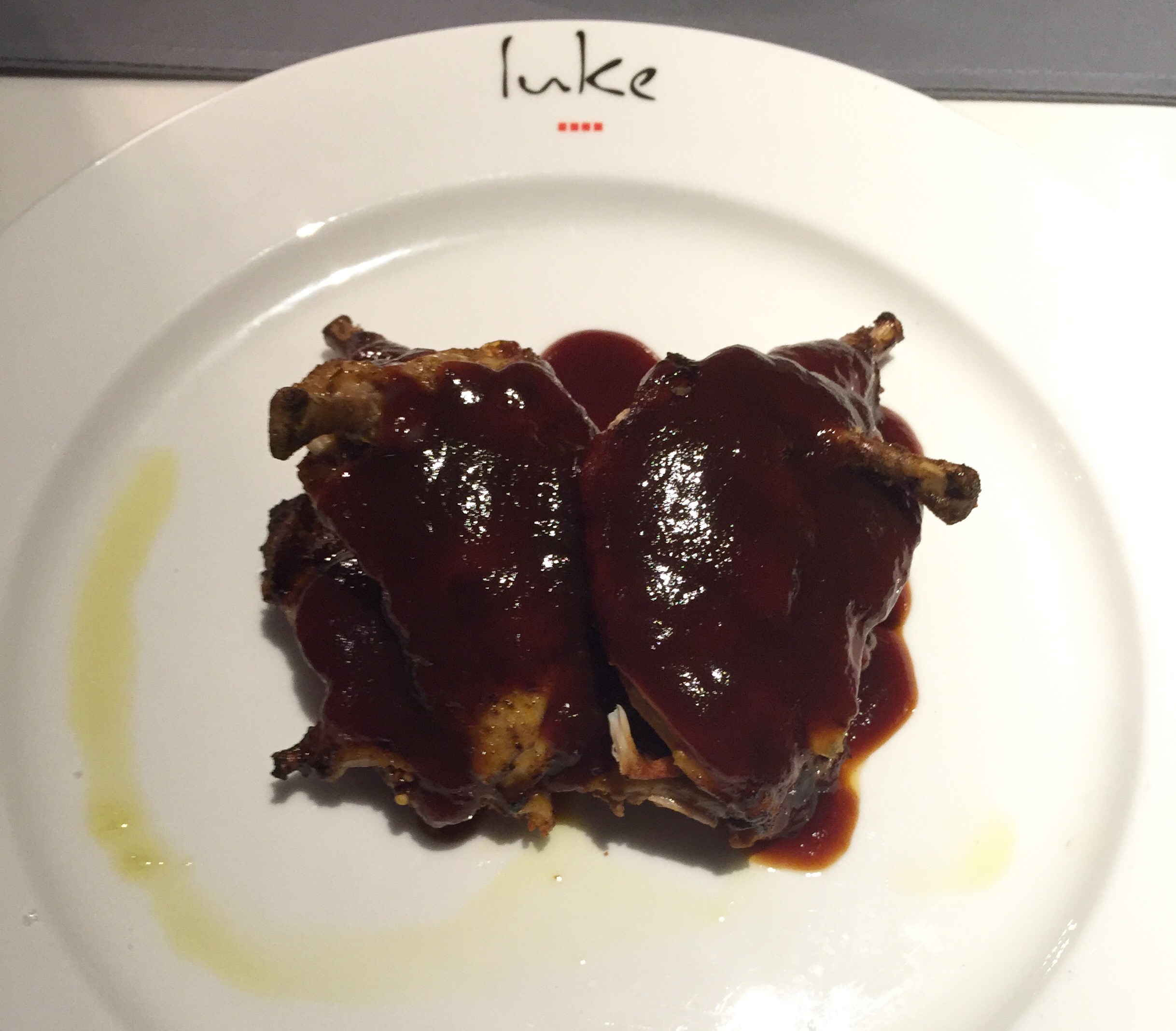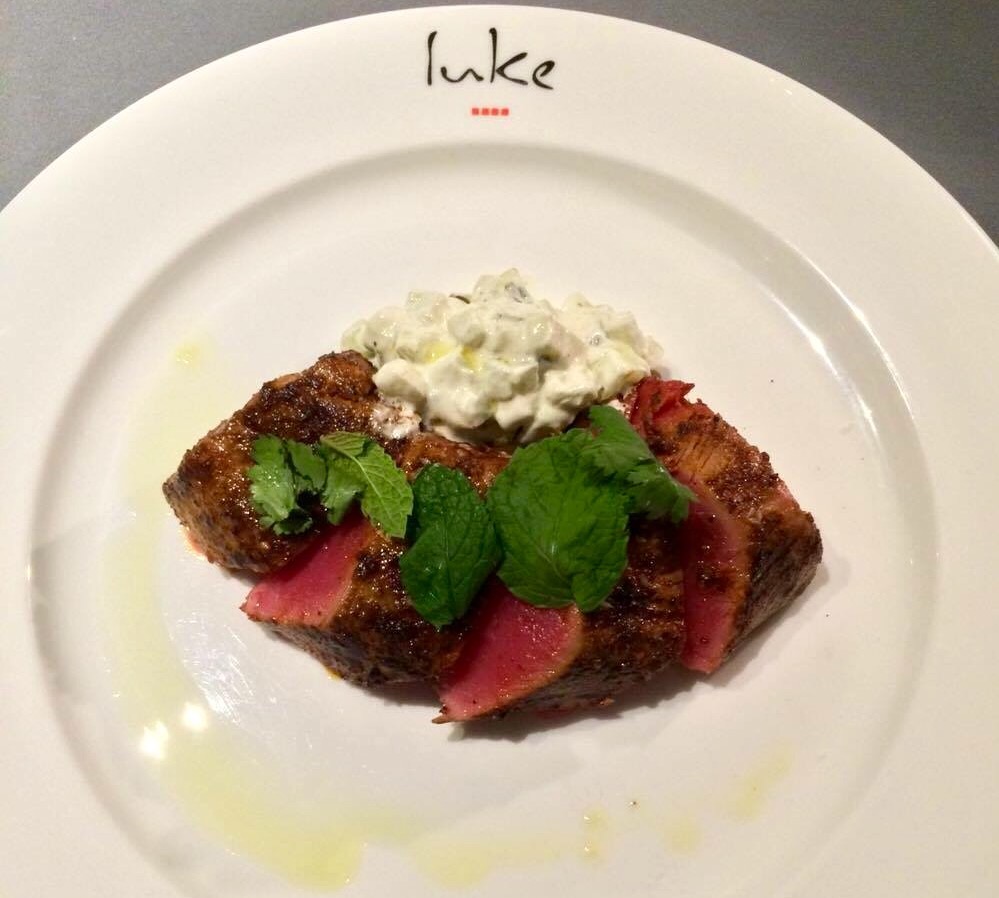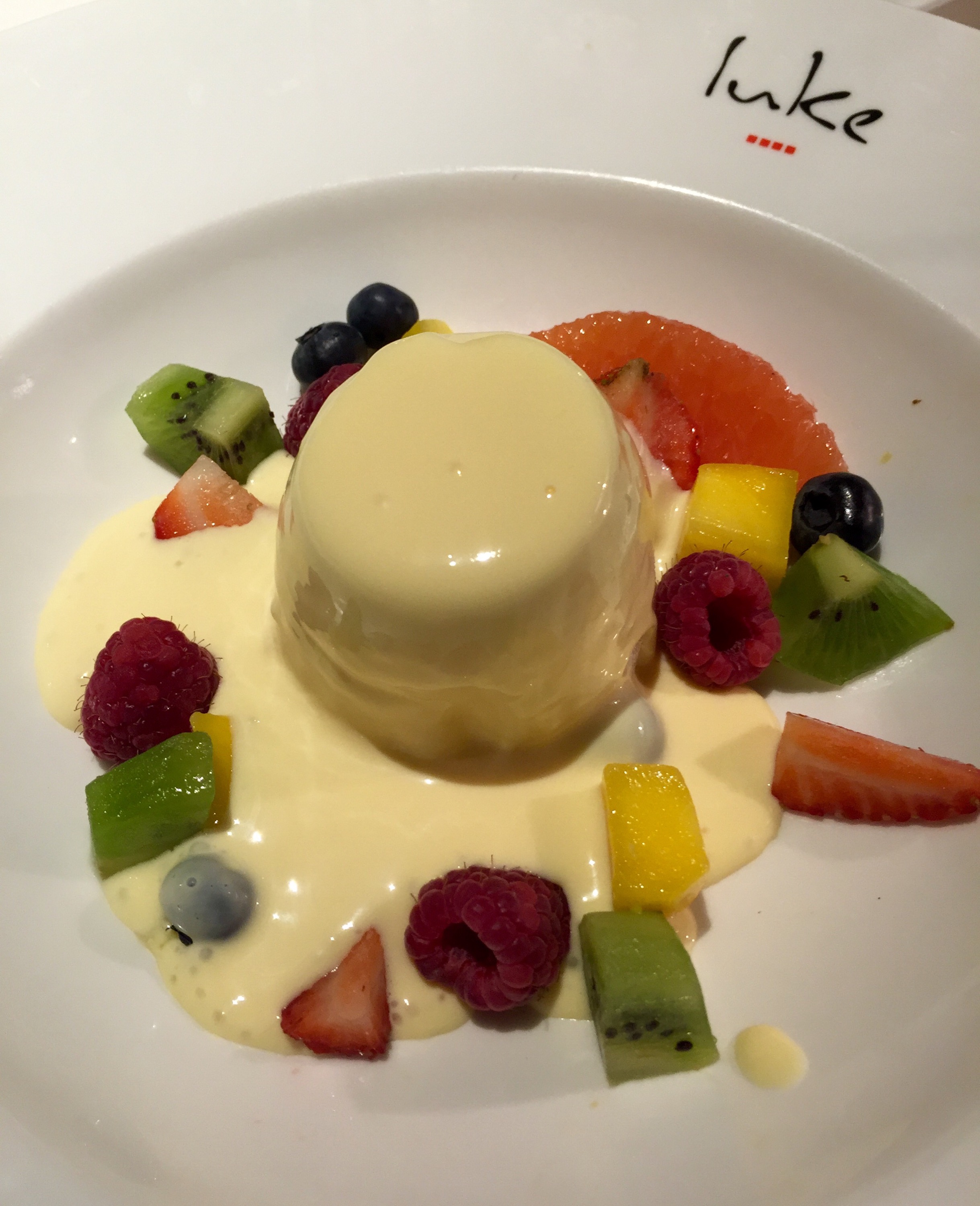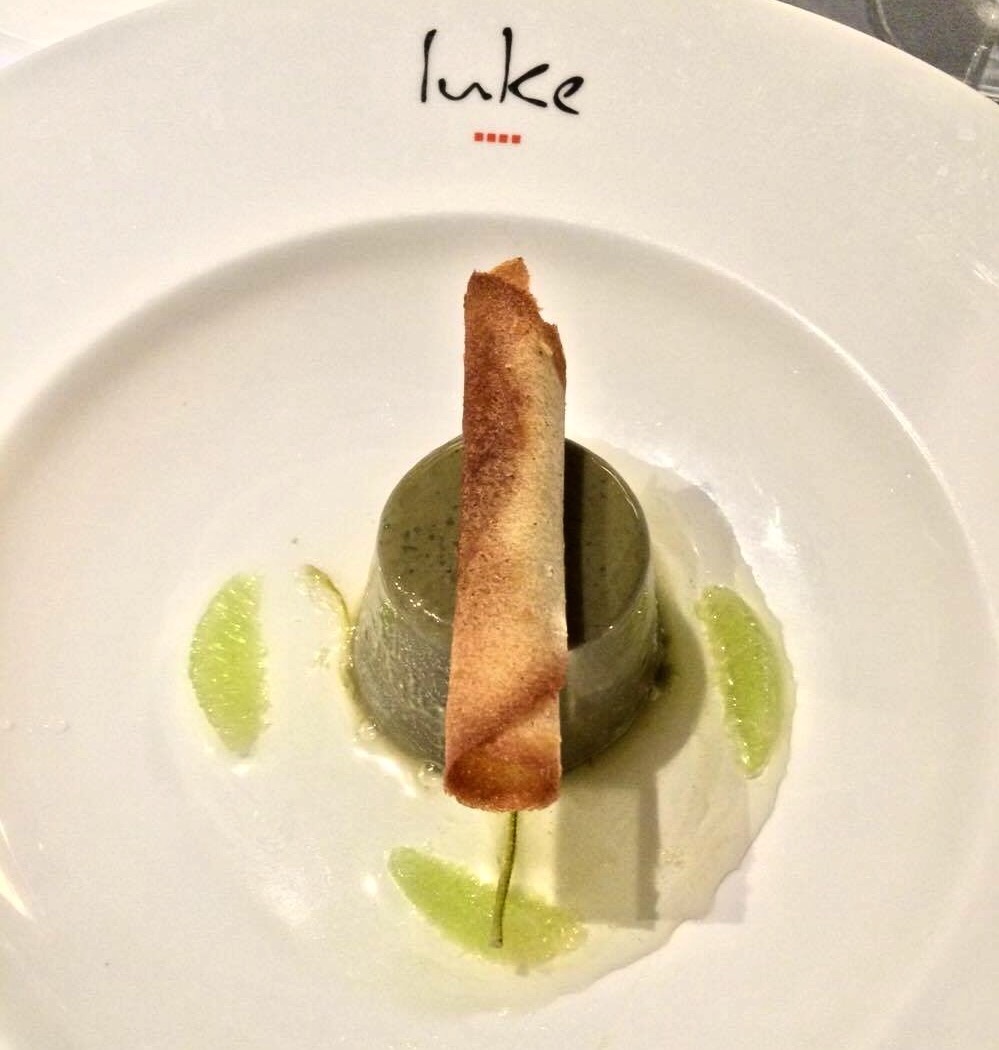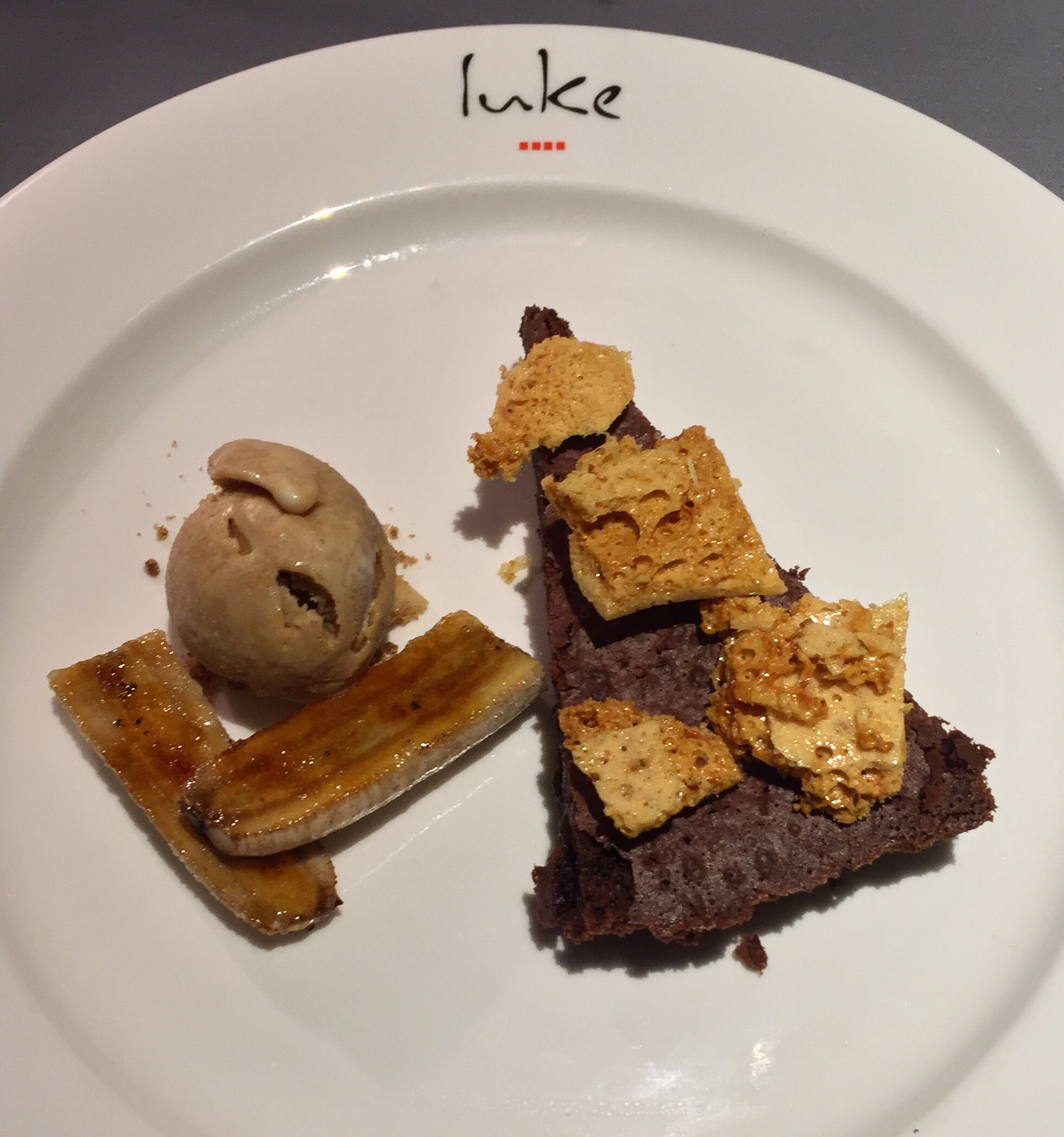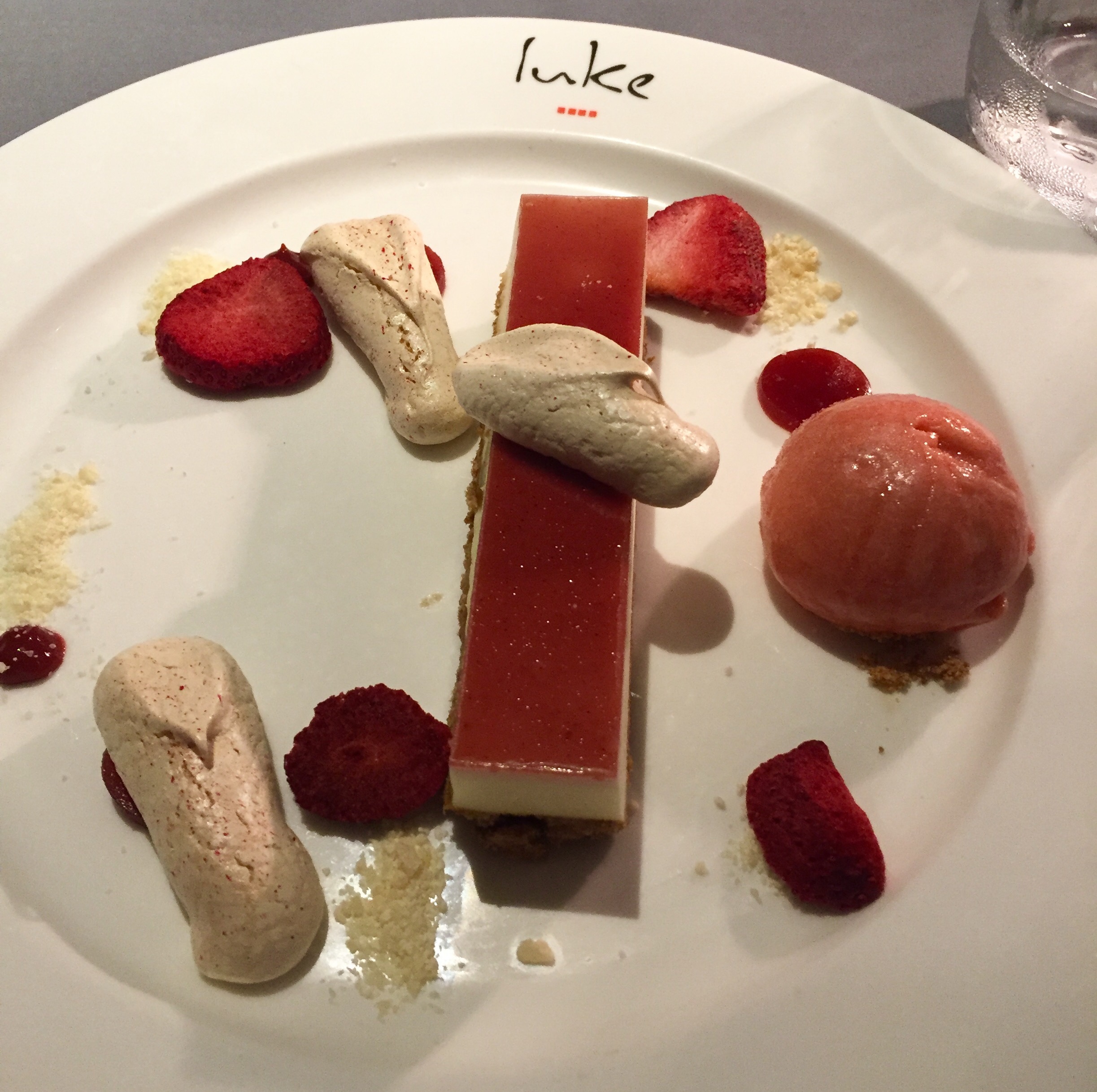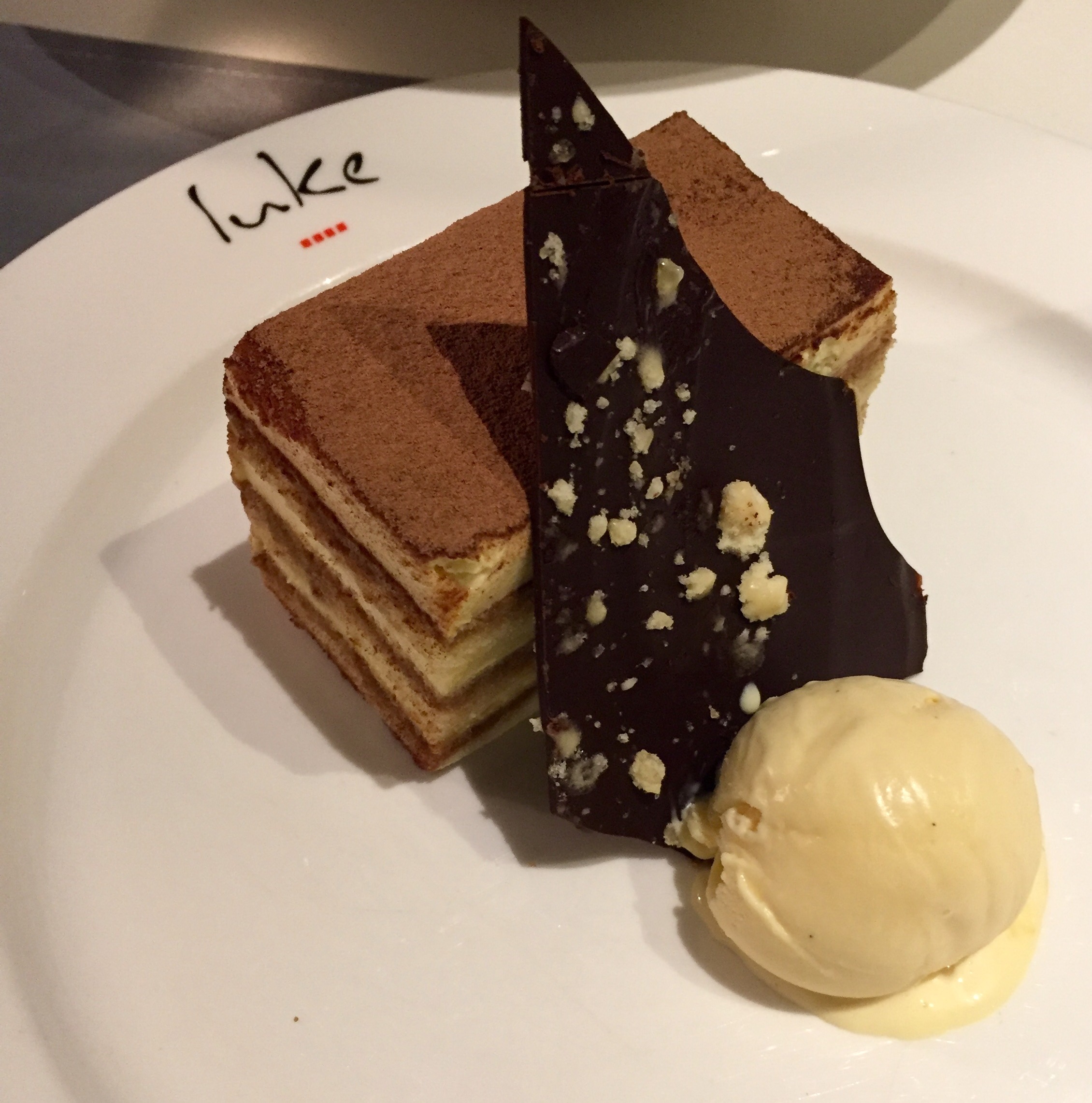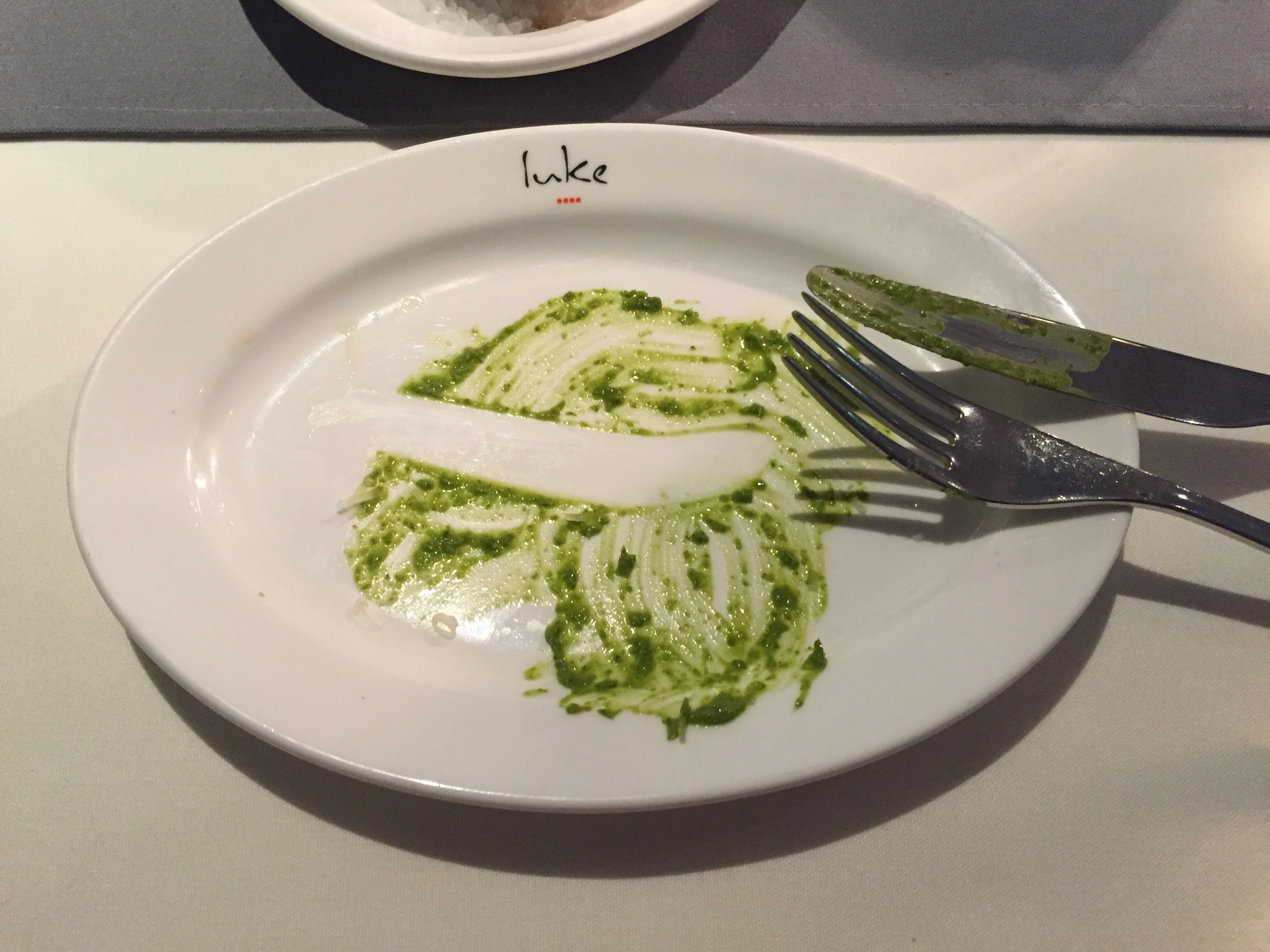Usually, we like to have a late traditional sitting in the Main Dining Room – but for some reason, when we booked this Baltic cruise from Australia using an Australian travel agent, we were unable to select traditional dining and the TA wasn’t able to alter it either. So we were down for Anytime Dining whether we liked it or not. We thought we’d change it when we got onboard but turns out that was not as easy as I had hoped. There were plenty of options to change to early sitting traditional, but late sitting, not so much. Oh well. Our first night in the MDR, the first thing I noticed was the HUGE portions.
I remember this from the Royal Princess in the Mediterranean, the meal sizes are much bigger than we are used to Down Under. This rib-eye steak meal, for example, was roughly about 60% this size on the Sea Princess earlier this year… maybe that is because when you’re on the ship for 80 day, they know you are not going to eat that big? 🙂 Or perhaps the Royal and the Regal are catering to a different demographic. Who knows?
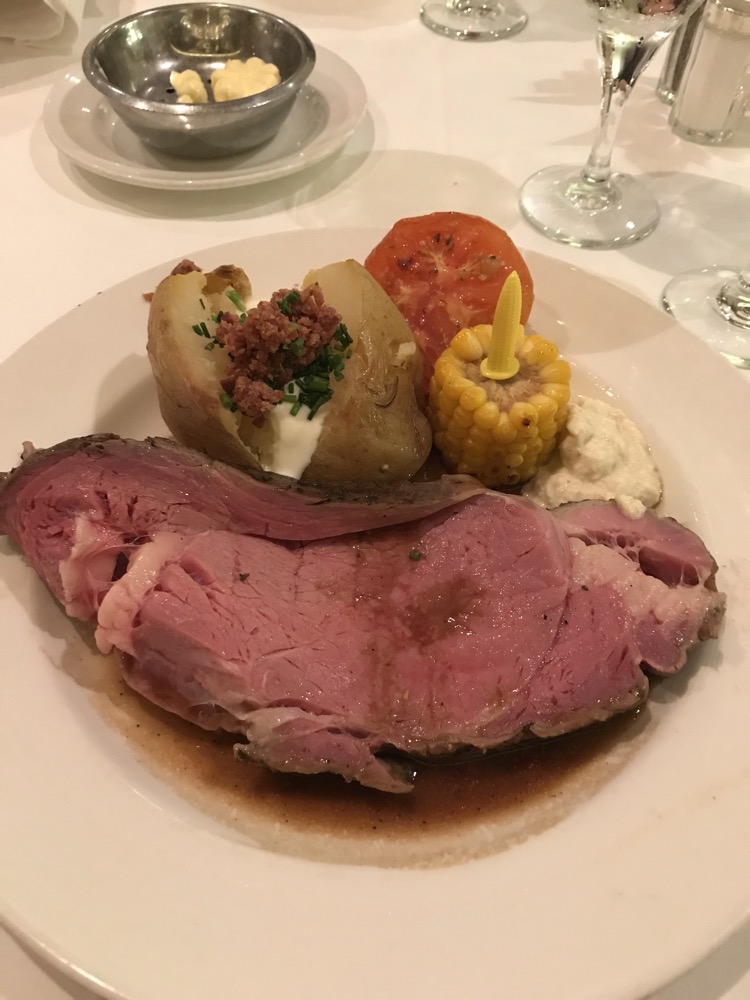
We had a couple of underwhelming experiences in the MDR this trip, partly because the rhythm of the anytime dining just doesn’t suit us – the wait staff don’t get to know you and your preferences, everyone at the tables near you are at varying stages of their meals, so the servers are often coming back and confirming what you are waiting for. It’s just a bit weird, and must be a lot of additional work for the wait staff compared to the traditional sittings.
We were planning on going to some of the specialty restaurants anyway, so we made some bookings early in the piece.
CROWN GRILL
The Crown Grill is a nice casual space near the Wheelhouse Bar on this ship, the only downside of its location is that it can be a bit noisy. And when seated near large groups of diners it can be even noisier still. All good though, the service this visit was a little rushed (they had three tables of 10+ near us), but the food of course, is wonderful.
Current Menus: 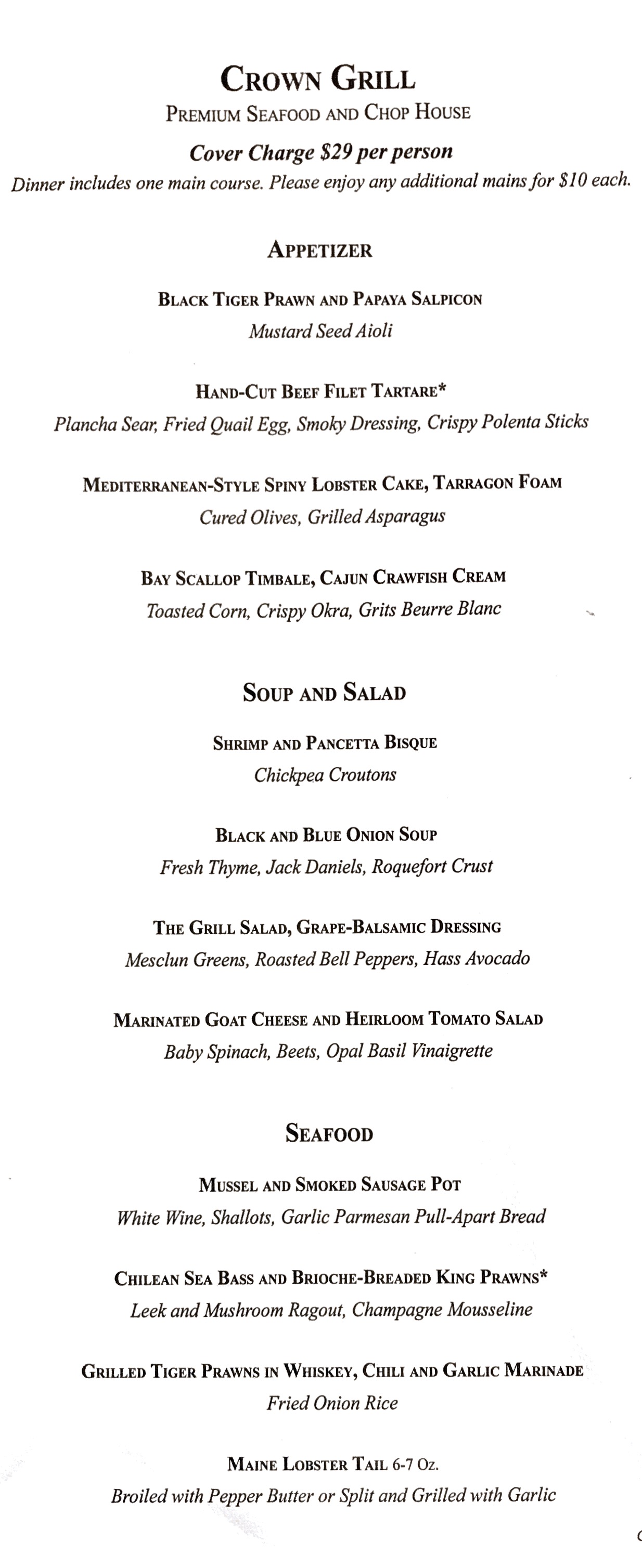
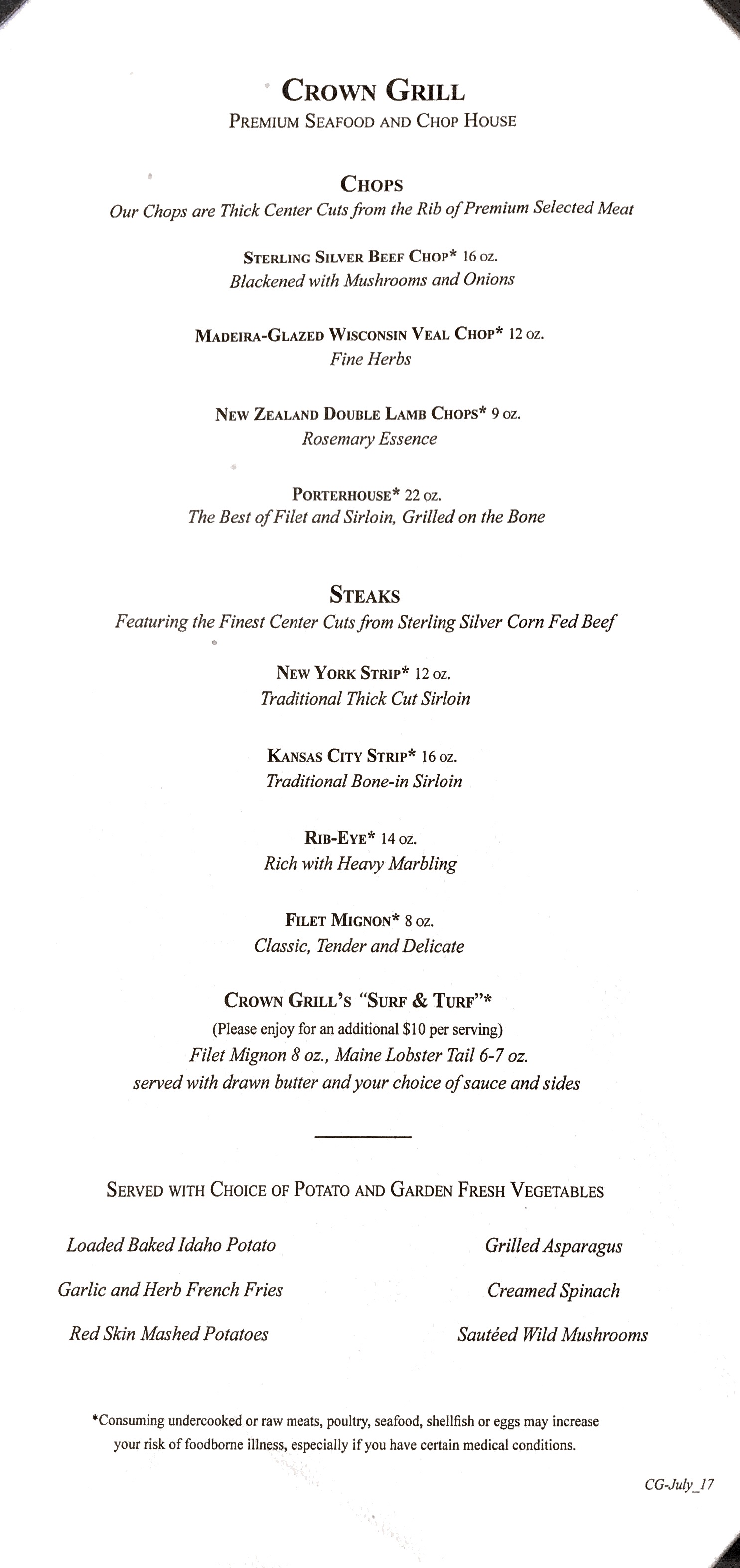
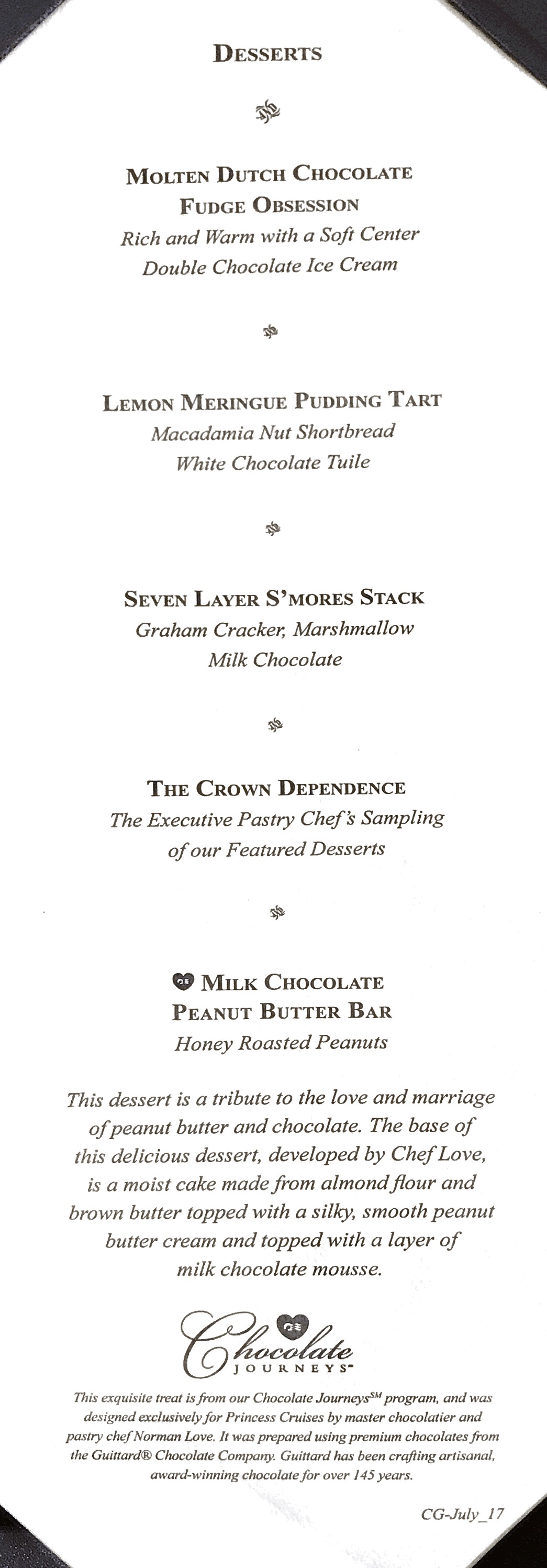 Mediterranean Style Spiny Lobster Cake…
Mediterranean Style Spiny Lobster Cake… Black Tiger Prawn and Papaya Salpicon…
Black Tiger Prawn and Papaya Salpicon… The Grill Salad with Grape Balamic Dressing…
The Grill Salad with Grape Balamic Dressing…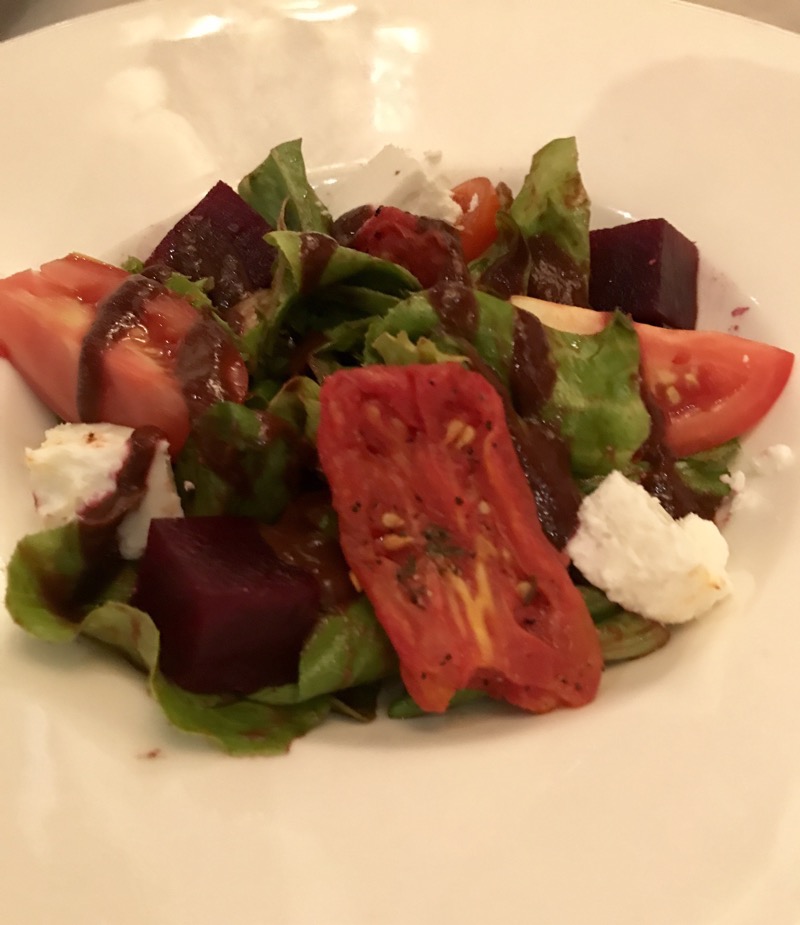 Black and Blue Onion Soup…
Black and Blue Onion Soup…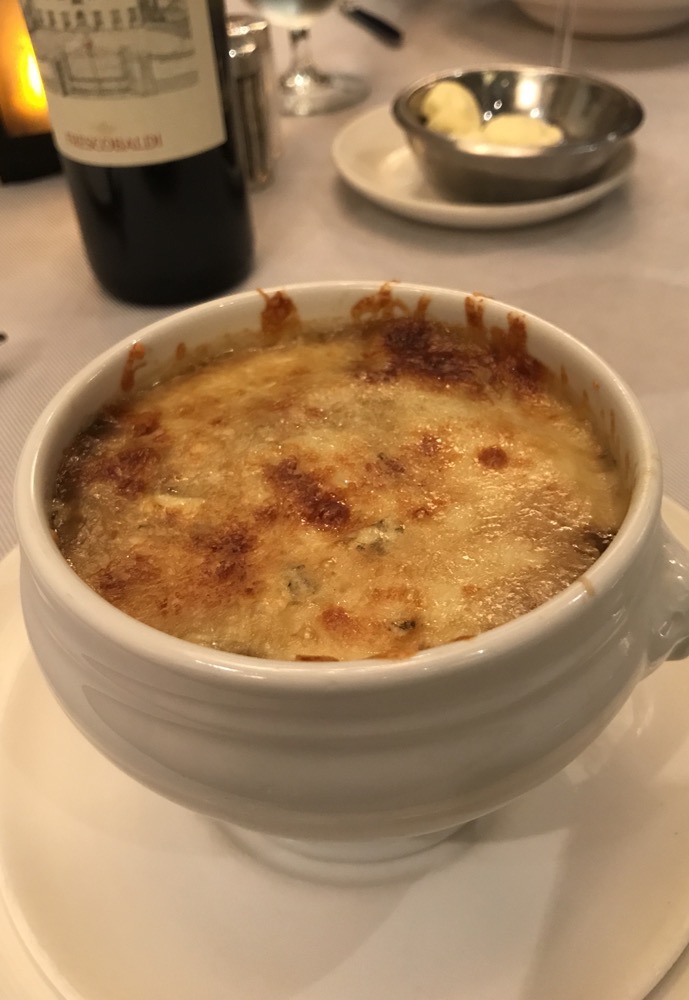 14oz Rib Eye…
14oz Rib Eye…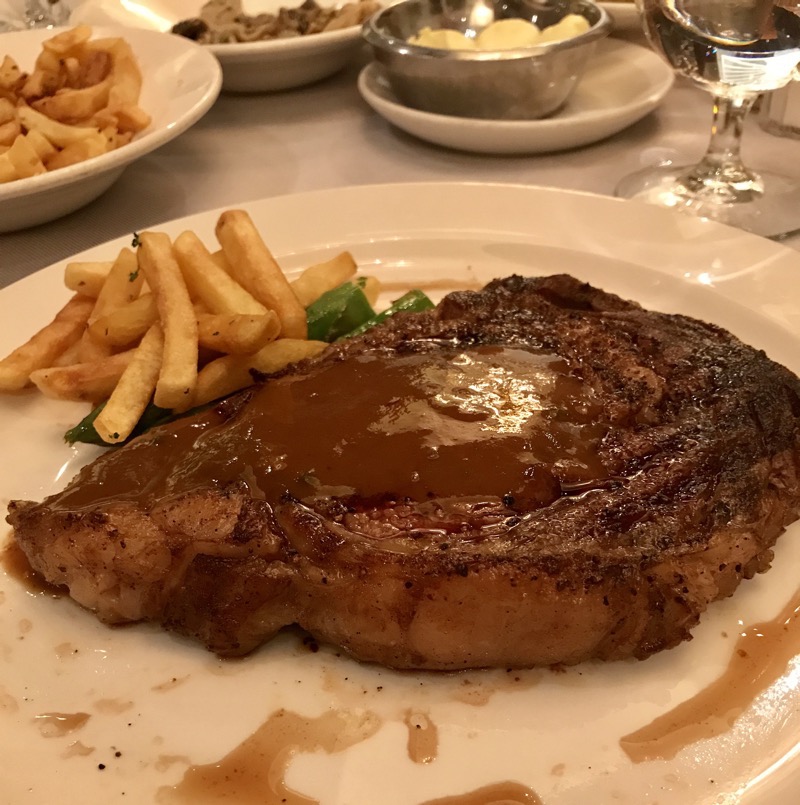 Filet Mignon…
Filet Mignon…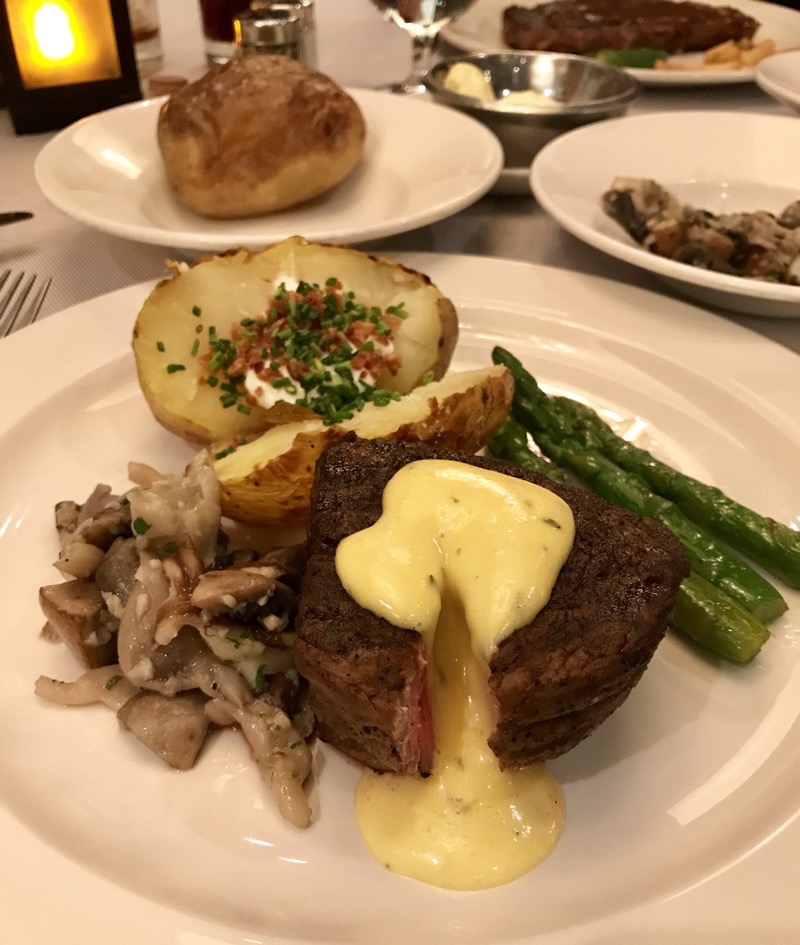 The Crown Dependence Dessert Selection…
The Crown Dependence Dessert Selection…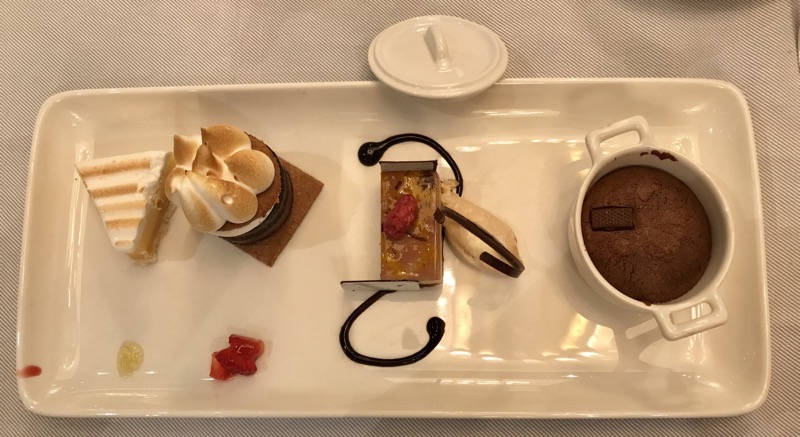 Lemon Meringue Pudding Tart…
Lemon Meringue Pudding Tart…
(which btw, might be the best lemon meringue pie I’ve ever tried!)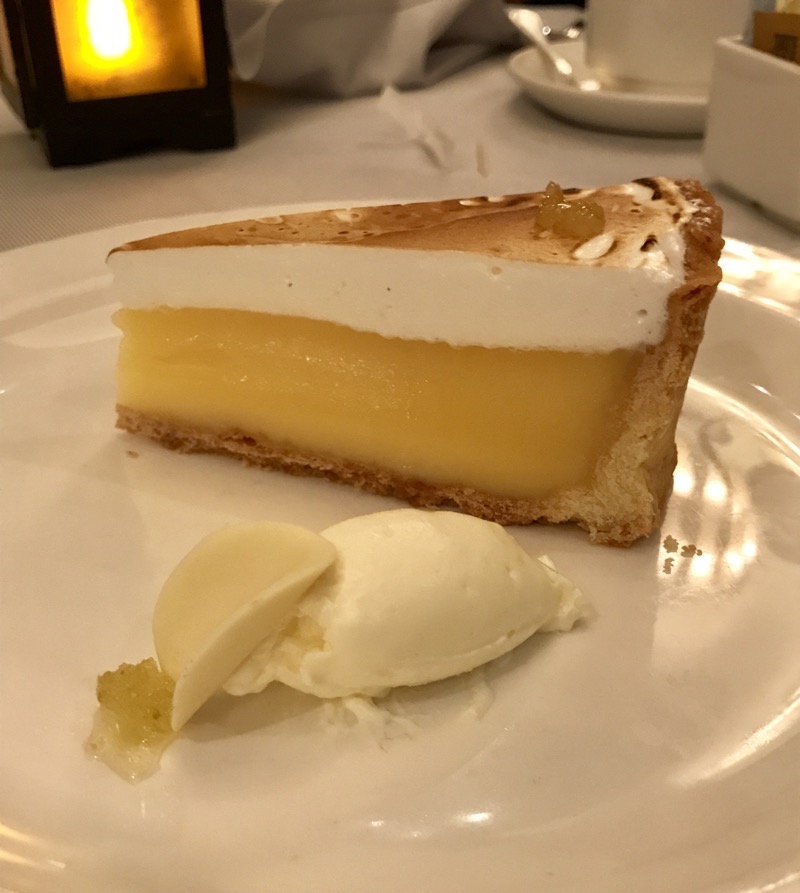
SABATINI’S
We always love Sabatini’s, and have dined there on the Royal, the Diamond and now the Regal. I have heard rumours that they are going to update or change Sabatini’s somehow, but I hope they don’t diverge too much from the wonderful Italian restaurant they’re known for. Everything was delicious, the service was excellent and the ambiance in the restaurant was quieter and less rushed. Love it!
Current Menus: 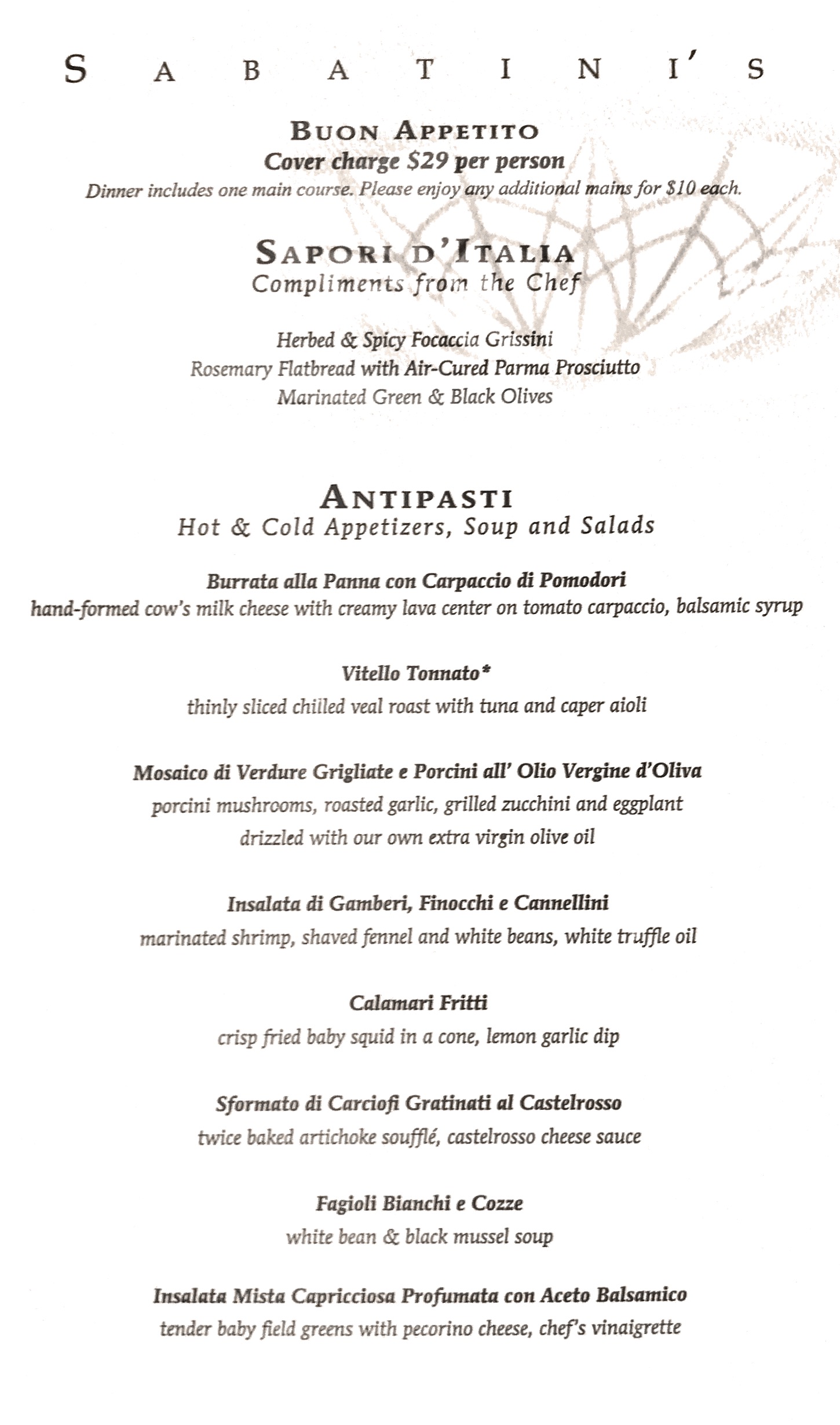
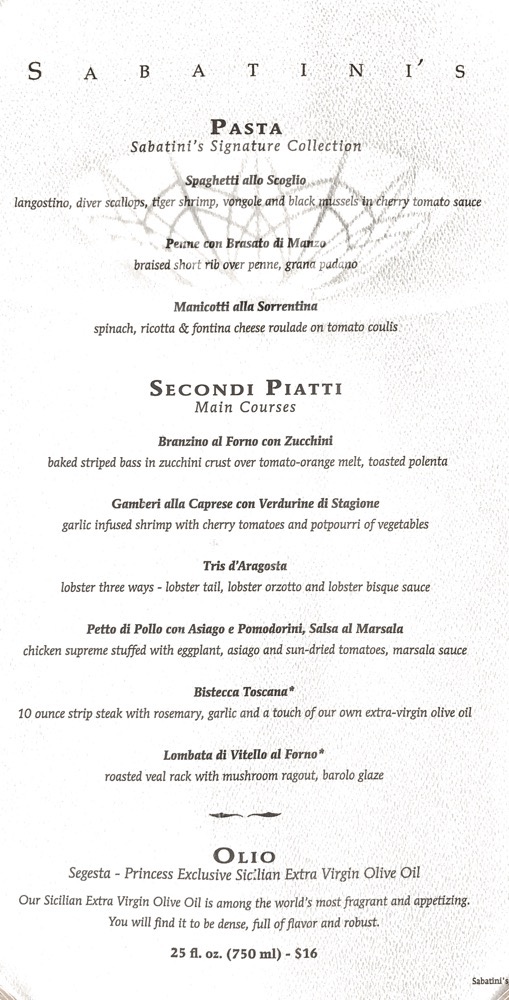
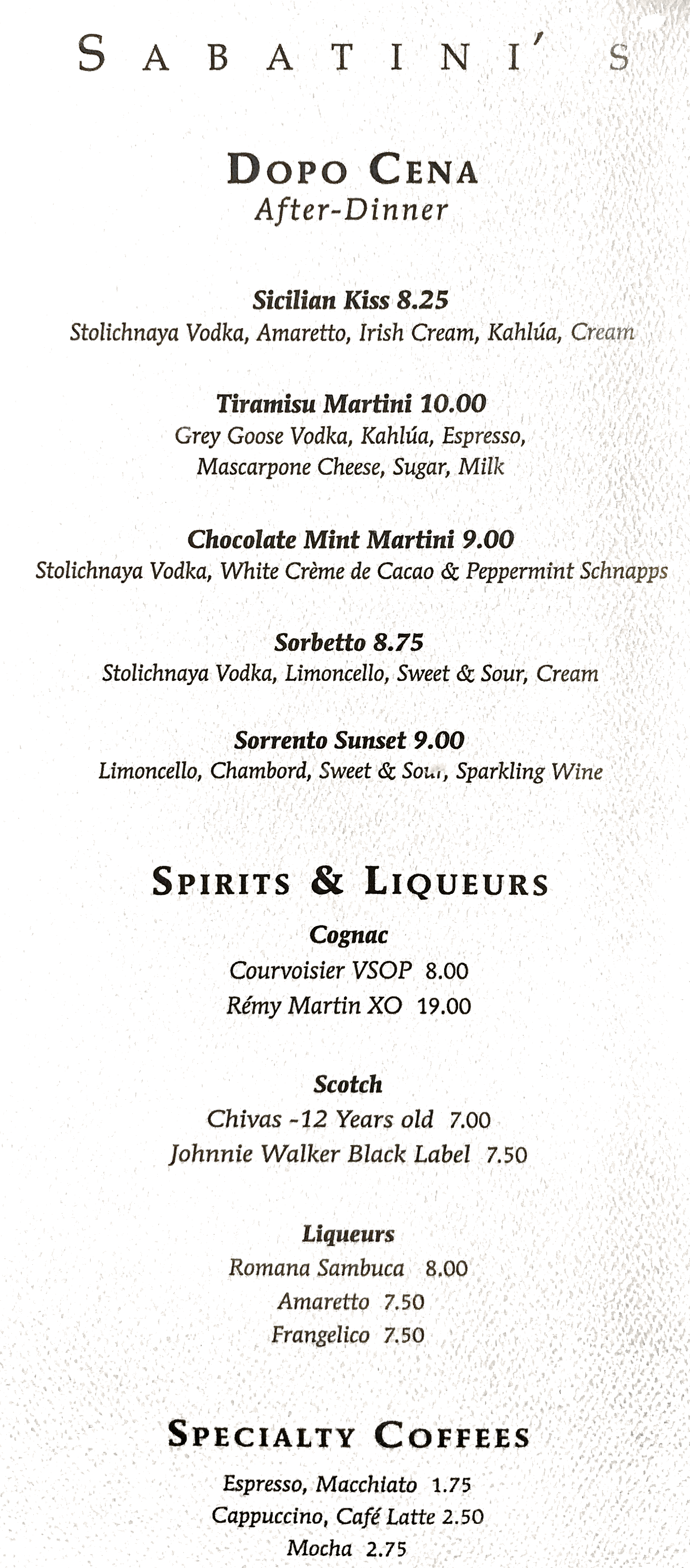
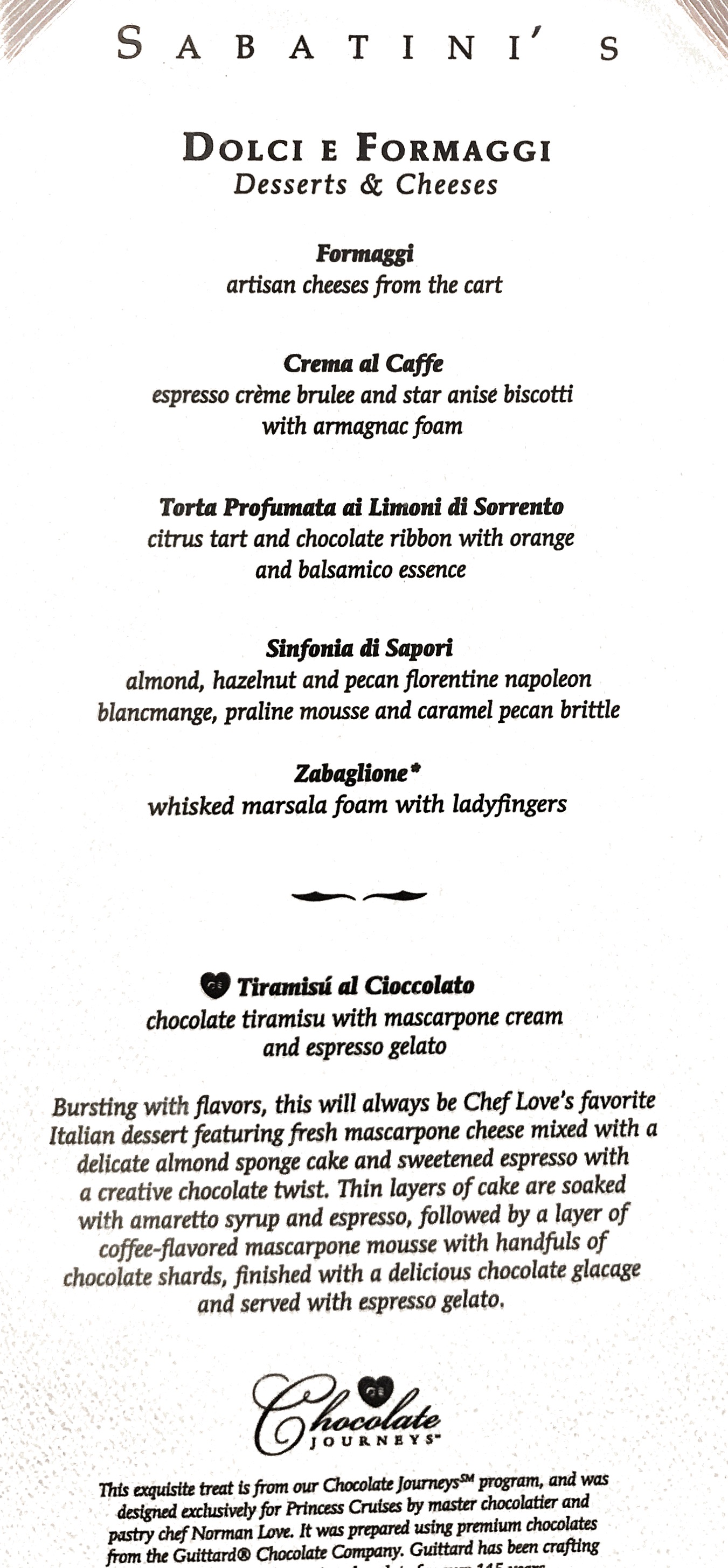 Burrata alla Panna con Carpaccio de Pomodori…
Burrata alla Panna con Carpaccio de Pomodori…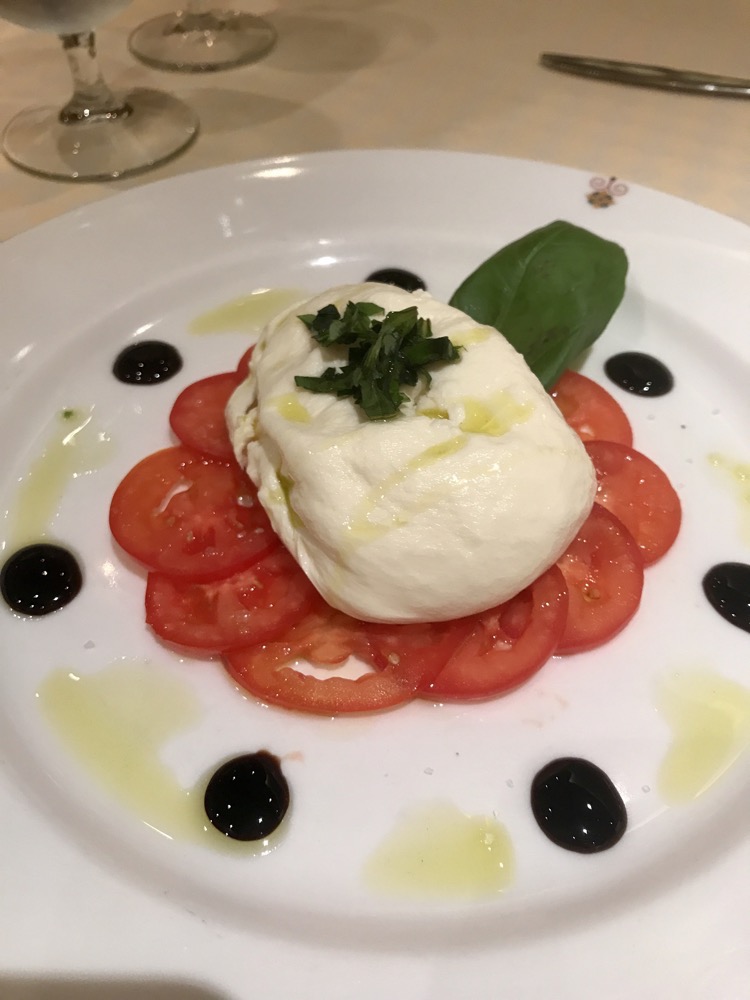 Vitello Tonnato…
Vitello Tonnato…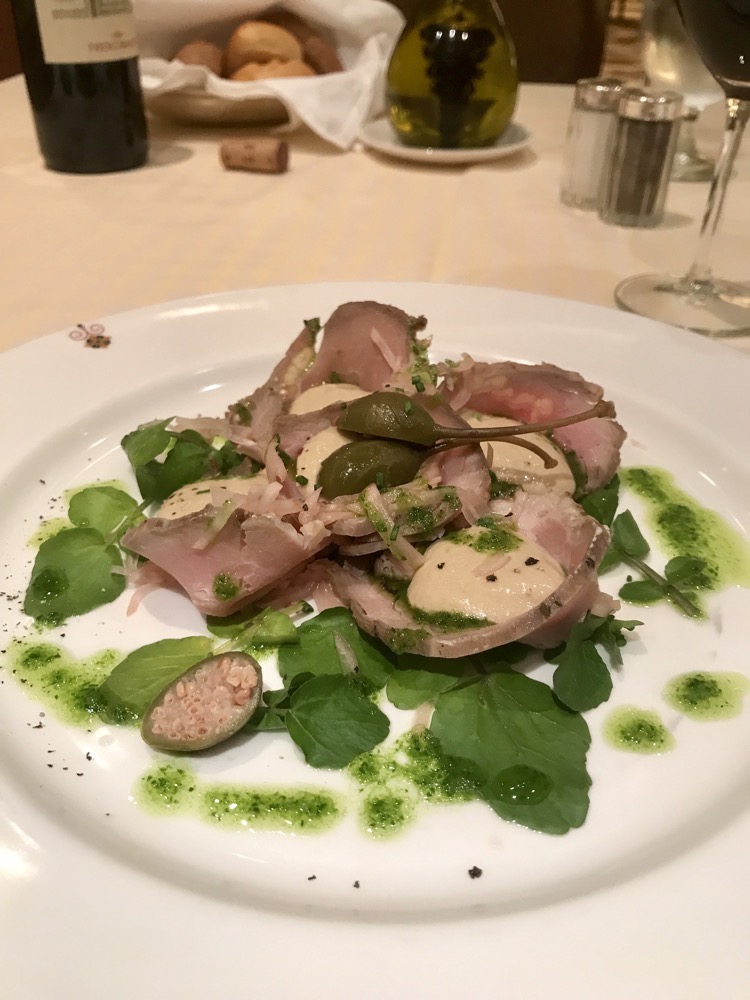 Spaghetti allo Scoglio…
Spaghetti allo Scoglio…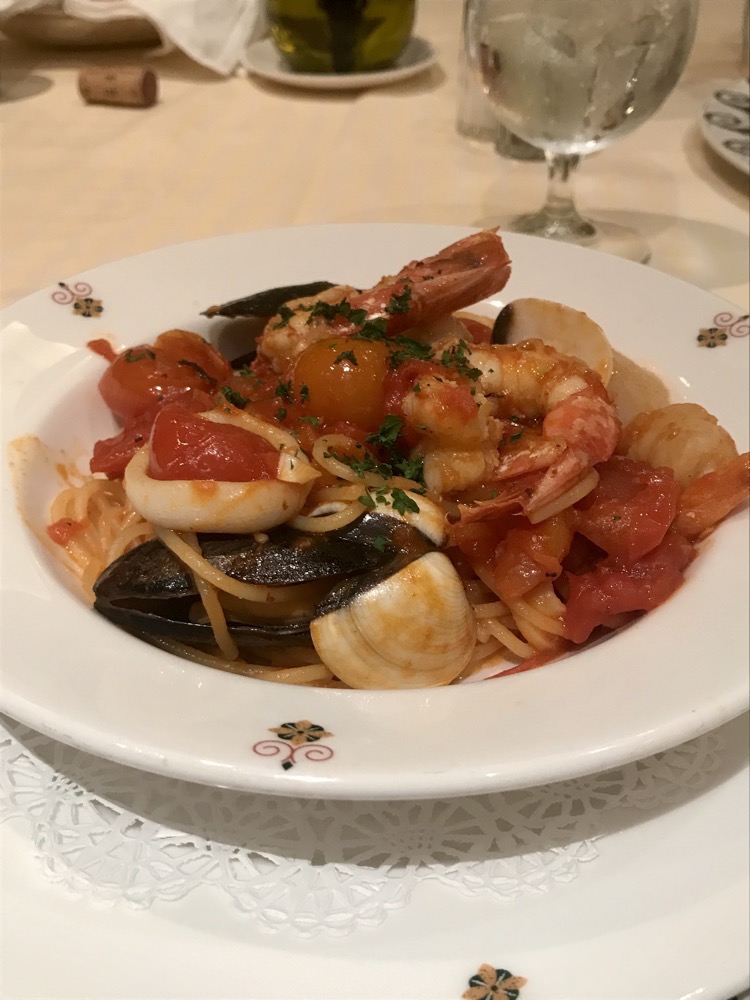 Penne con Brascato de Manzo…
Penne con Brascato de Manzo…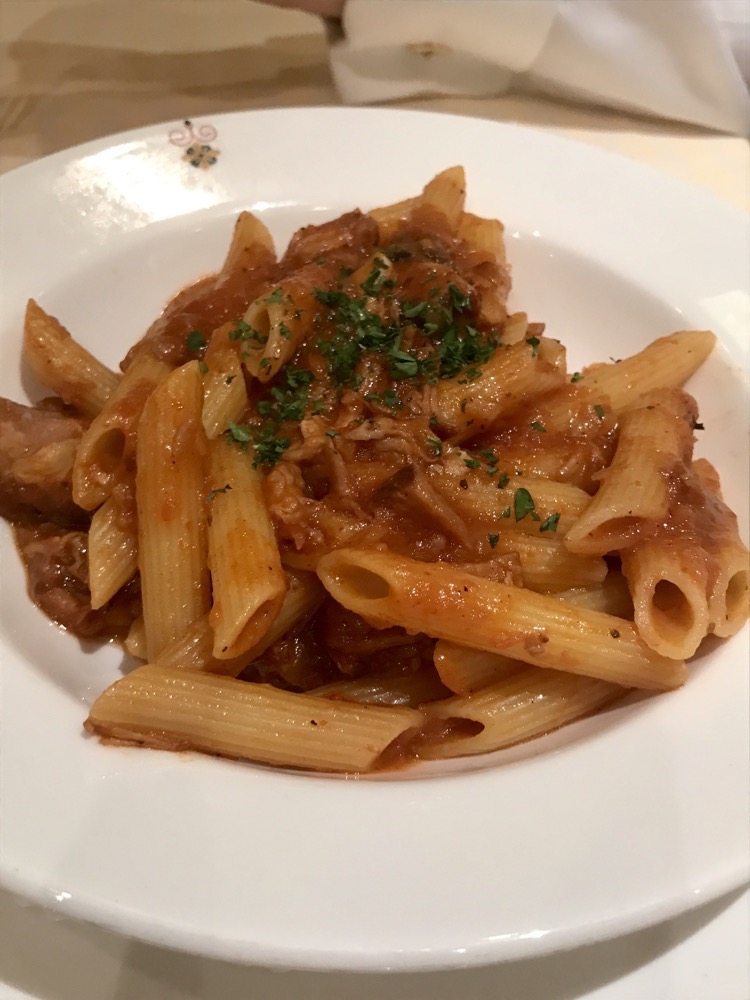 Tris d’Aragosta…
Tris d’Aragosta… Lombata di Vitello al Forno…
Lombata di Vitello al Forno…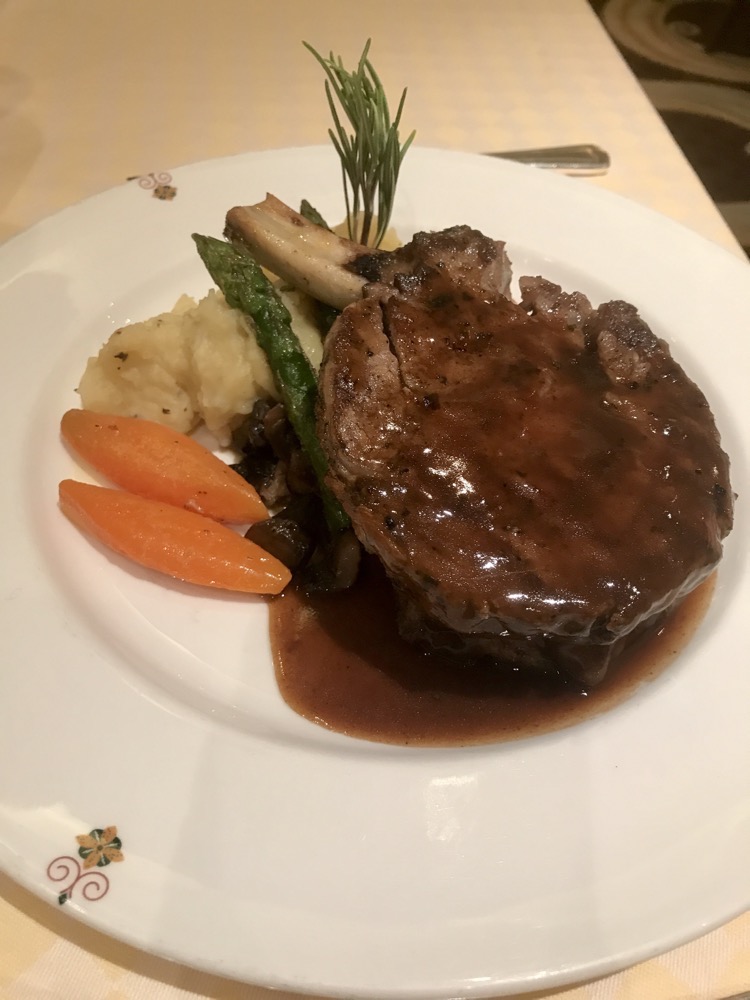 Zabaglione…
Zabaglione…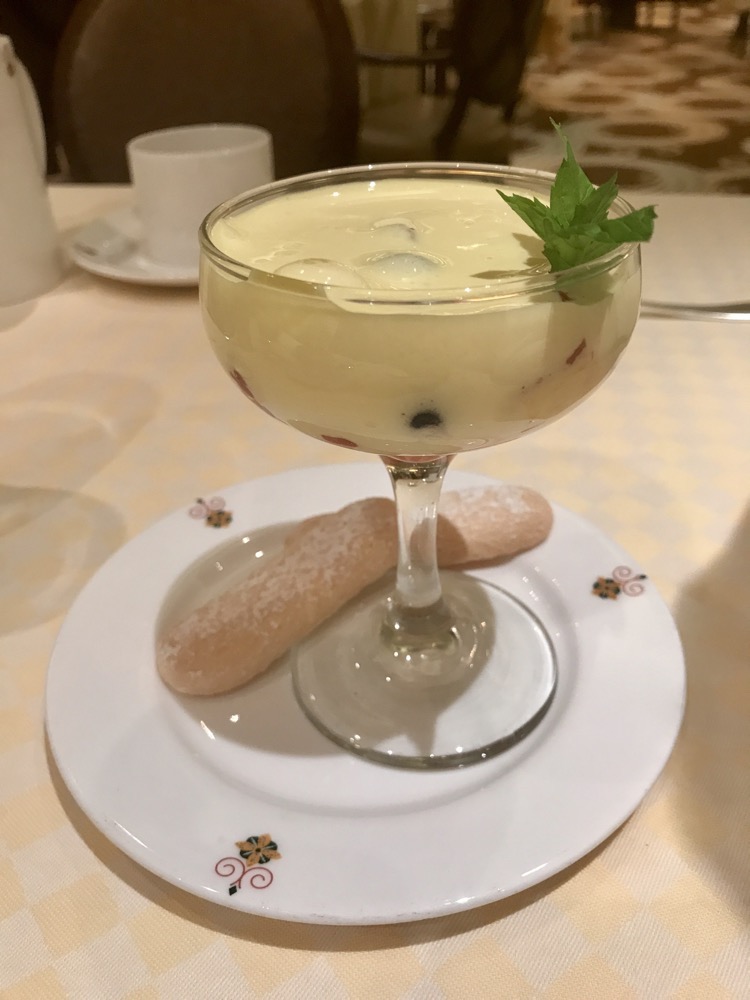 Torta Profumata ai Limoni di Sorrento…
Torta Profumata ai Limoni di Sorrento…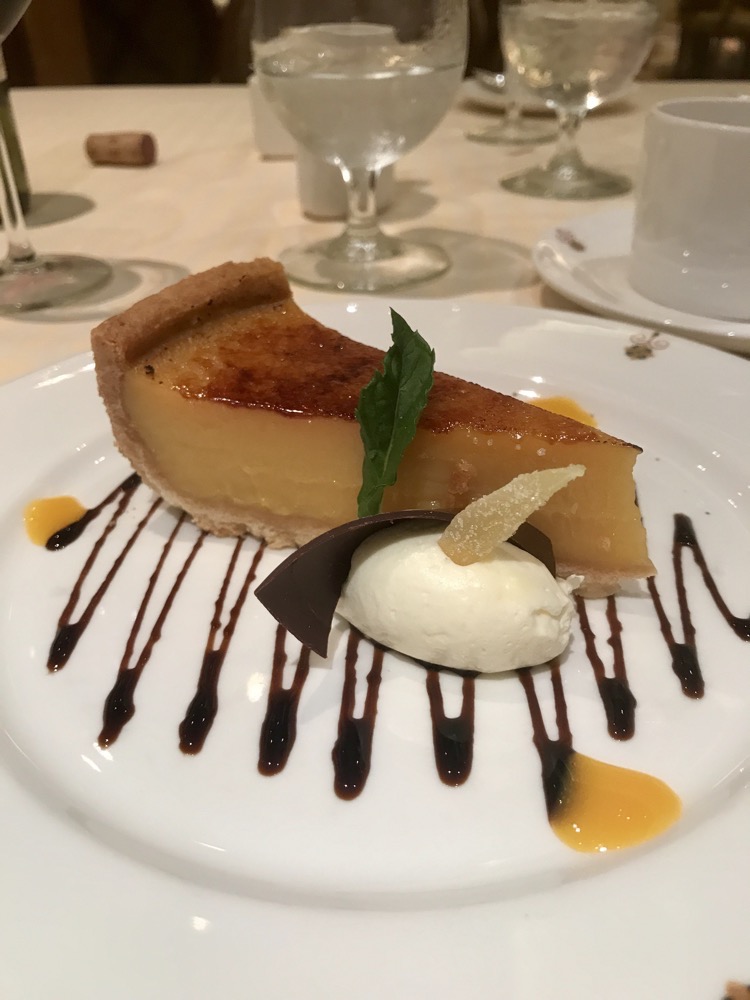
AFTERNOON TEA IN THE CABIN
We did get back to the ship after one of our ports at 3:30pm, as per the scheduled itinerary, and I called Room Service to request some Engish Breakfast tea for two (as is our habit after a long day ashore). I had forgotten about the hour, and when I was offered Afternoon Tea in the room, I thought – why not? Afternoon Tea in the cabin is one of those little loyalty perks that Princess offers their Elite passengers, but it’s one of those things we rarely remember. So when all this, turned up… I was somewhat surprised. A little bit of overkill for two people, but a nice touch.
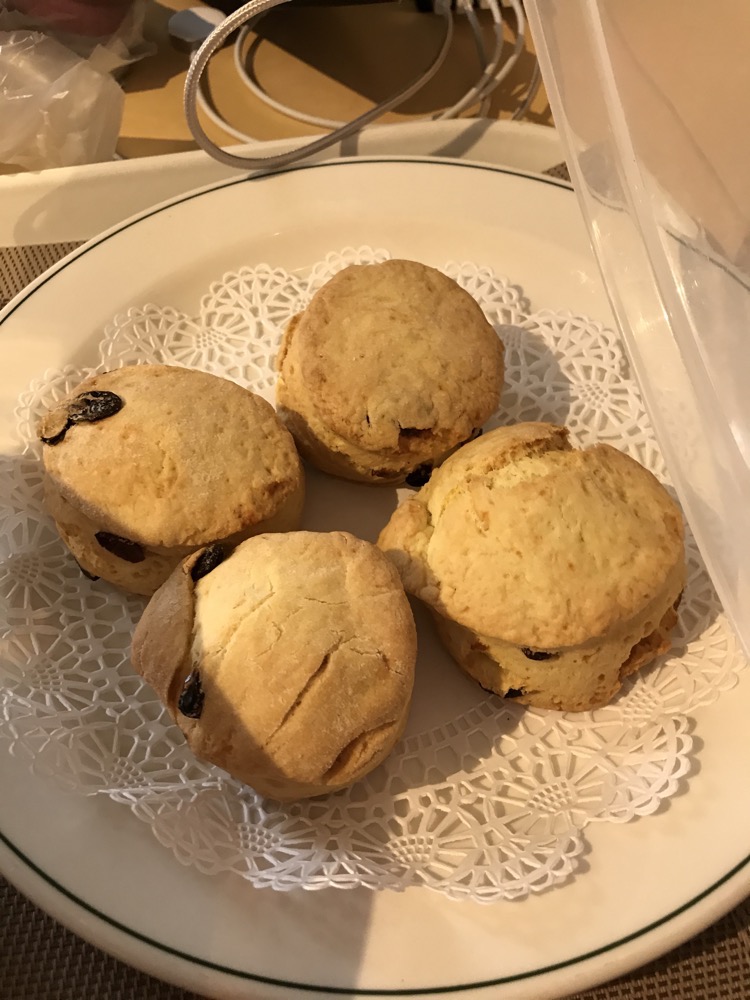
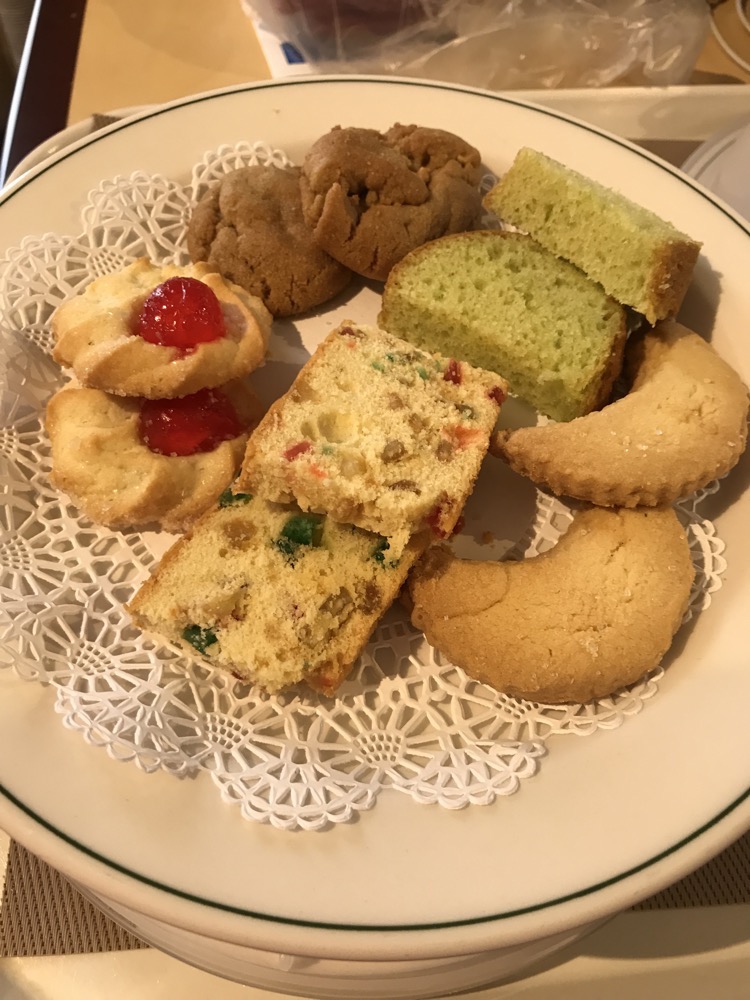
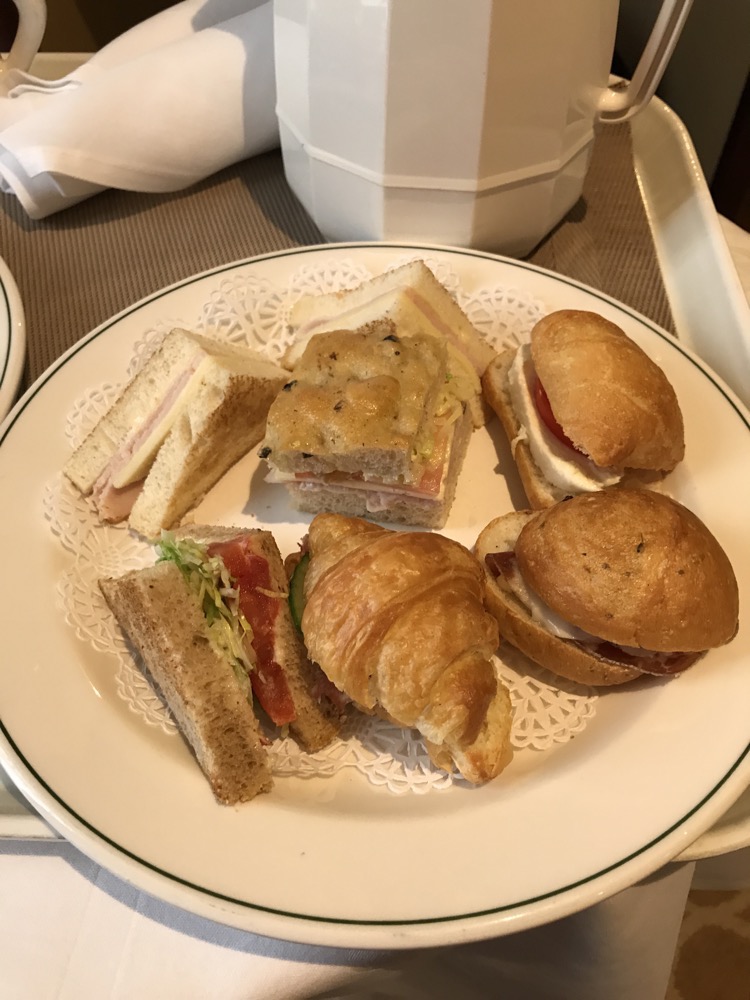

My husband loves his pizza slices up on the Lido deck, and usually, goes for a few slices of pepperoni on each cruise. Personally, I prefer the pizza from the pizzeria. Thankfully Princess is loudly applauded for having the best pizza at sea – so hopefully these options won’t change anytime soon.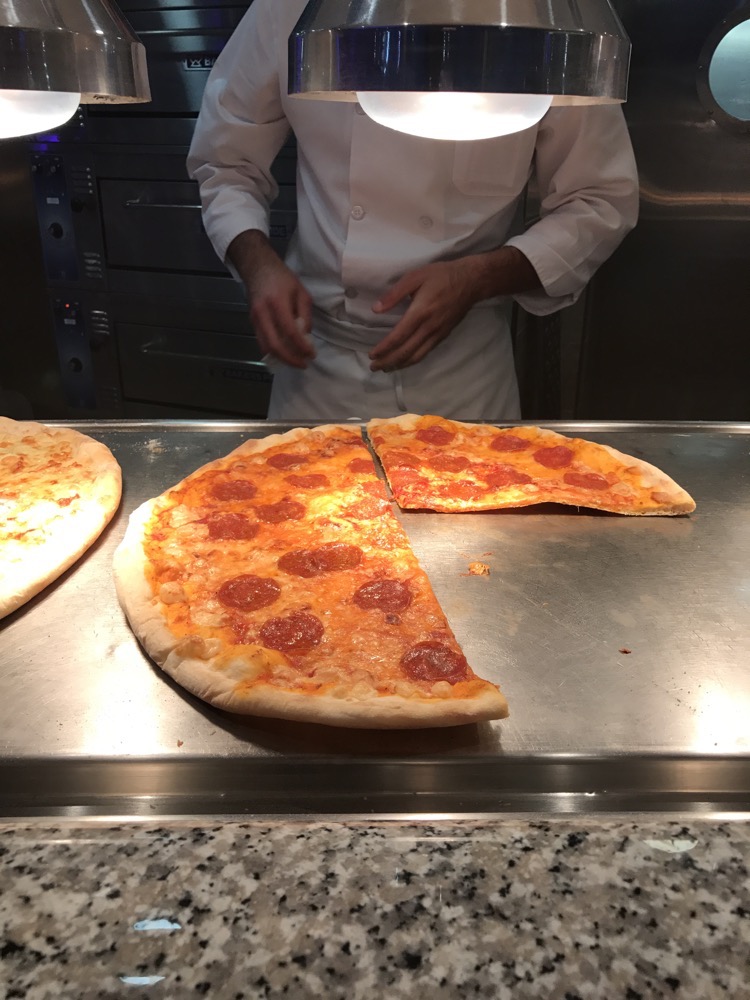
 Made to order – Hawaiian with shrimp and anchovies! 😛
Made to order – Hawaiian with shrimp and anchovies! 😛 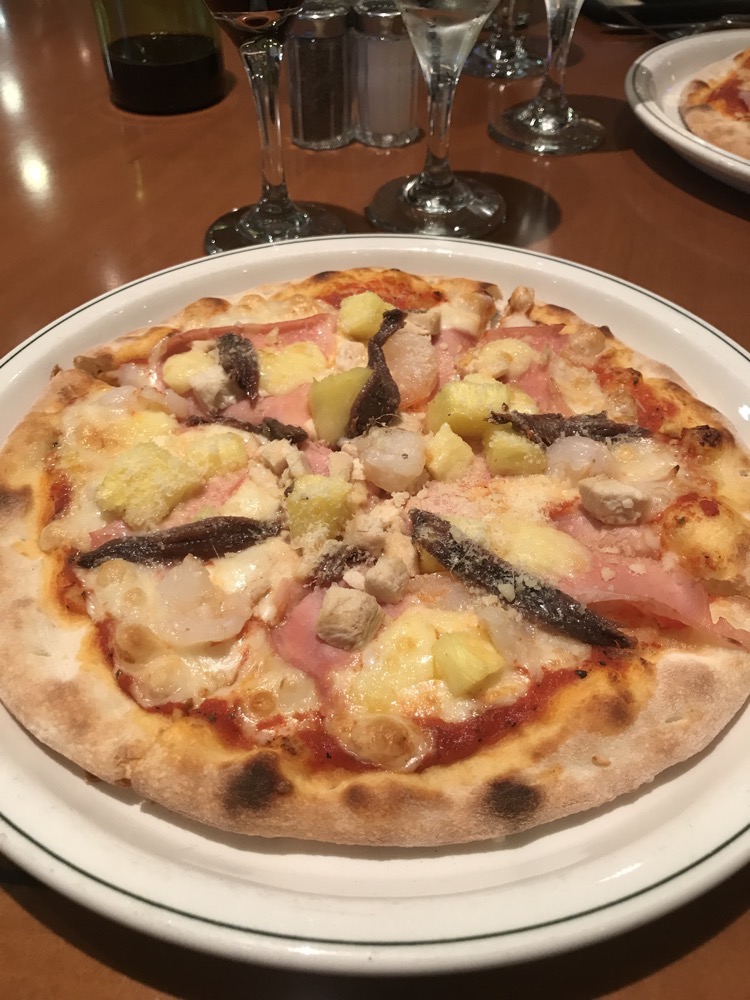
CHEF’S TABLE, LUMIERE
This cruise, to celebrate Mr K’s birthday, I had wanted to book us onto the Chef’s Table. I’ve done it before on the Caribbean Princess, and it was an enjoyable evening of seeing behind the scenes, having some interesting conversations with other foodies, and getting to know the Executive head Chef and Maitre D’Hotel. So I had called to request a booking on the Chef’s Table as soon as we boarded the ship – literally, got to the room, put some things in the safe and called Dining Reservations, first thing. It was a wonderful evening to celebrate a special occasion.
It starts in the galley with an introduction to the head chef, some champage and canapes.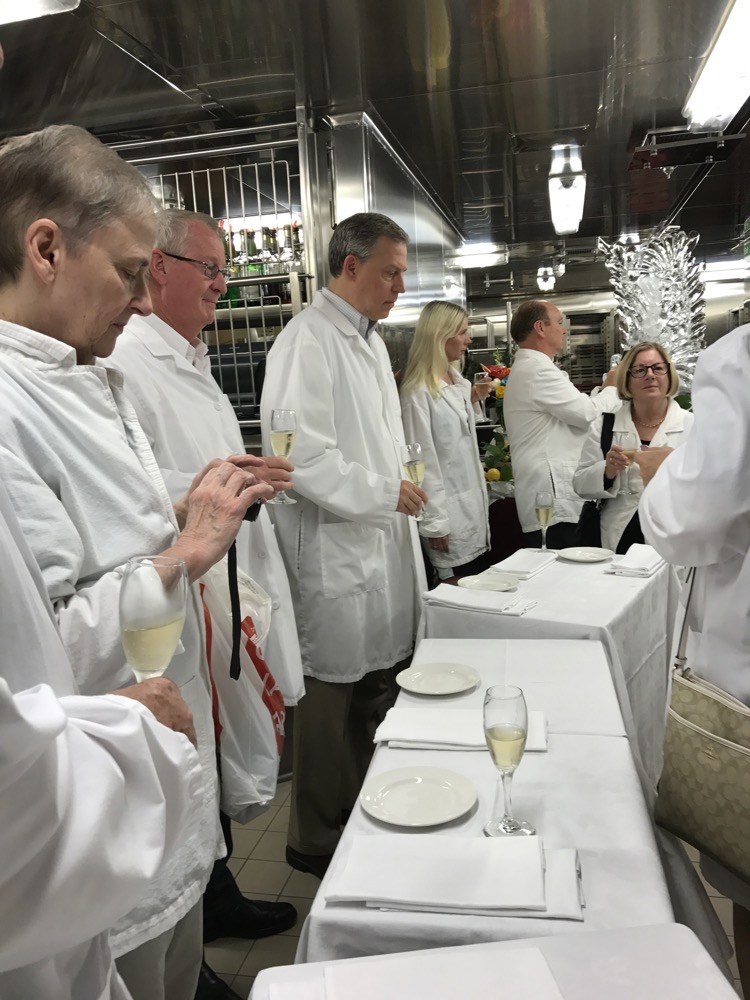 Carving displays.
Carving displays.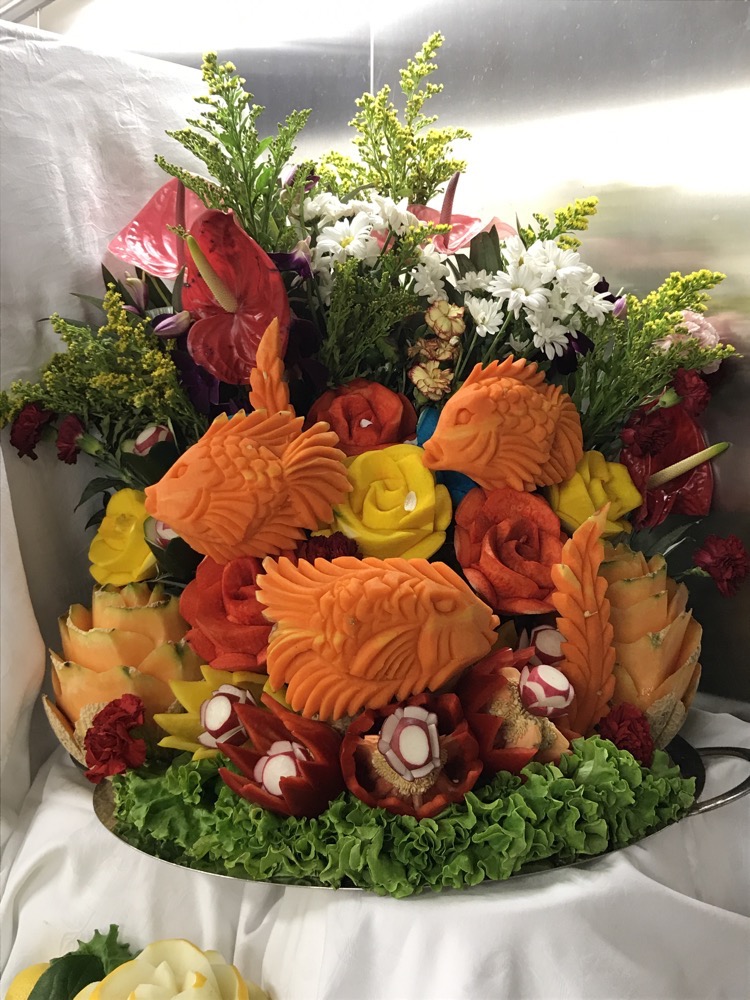
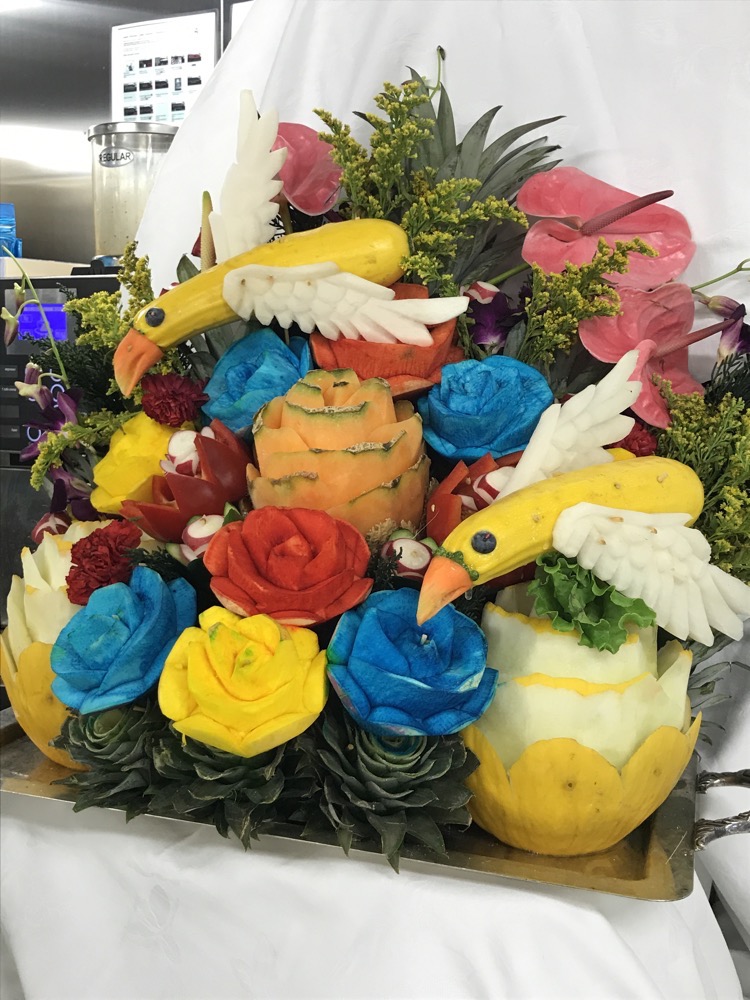
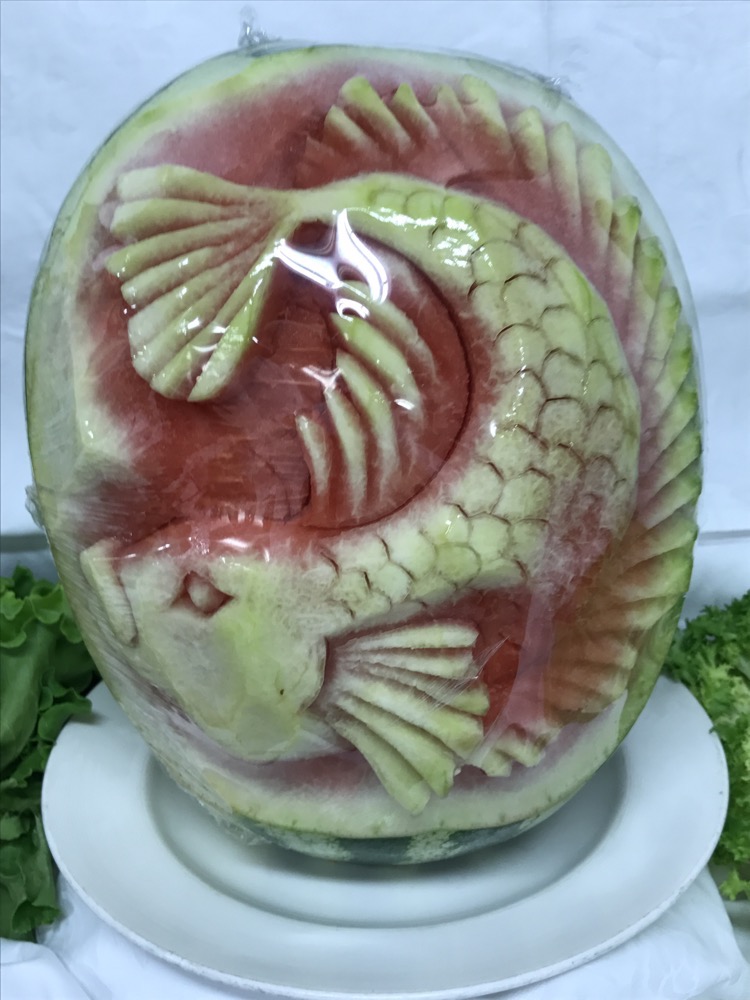
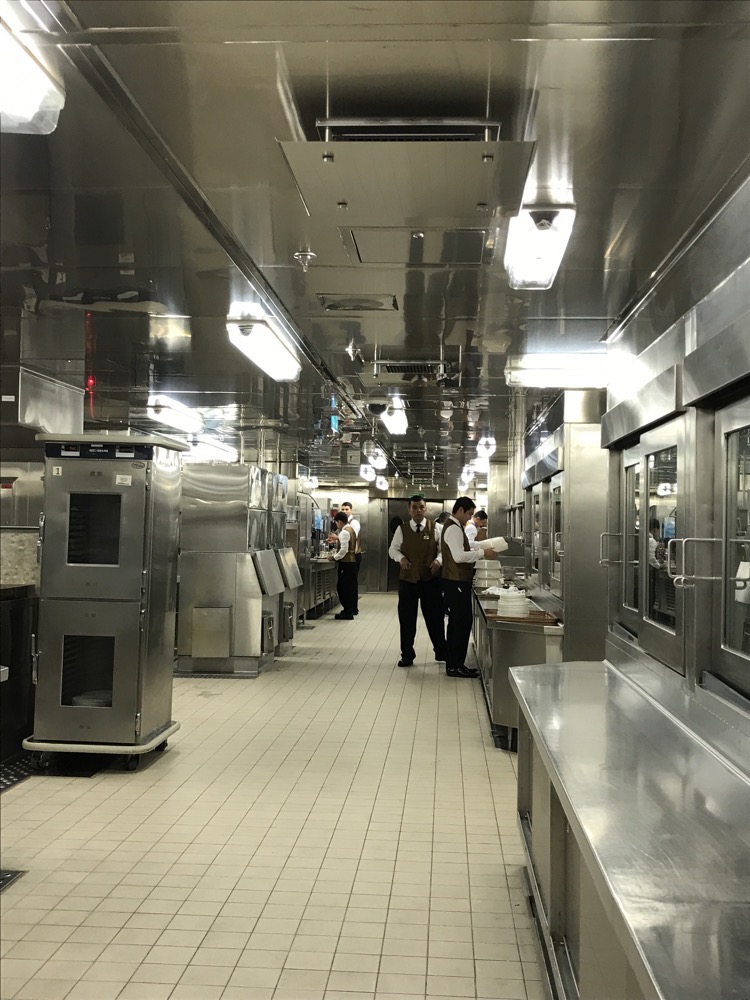 Working hard hustling out up 1200 meals at a time!
Working hard hustling out up 1200 meals at a time!
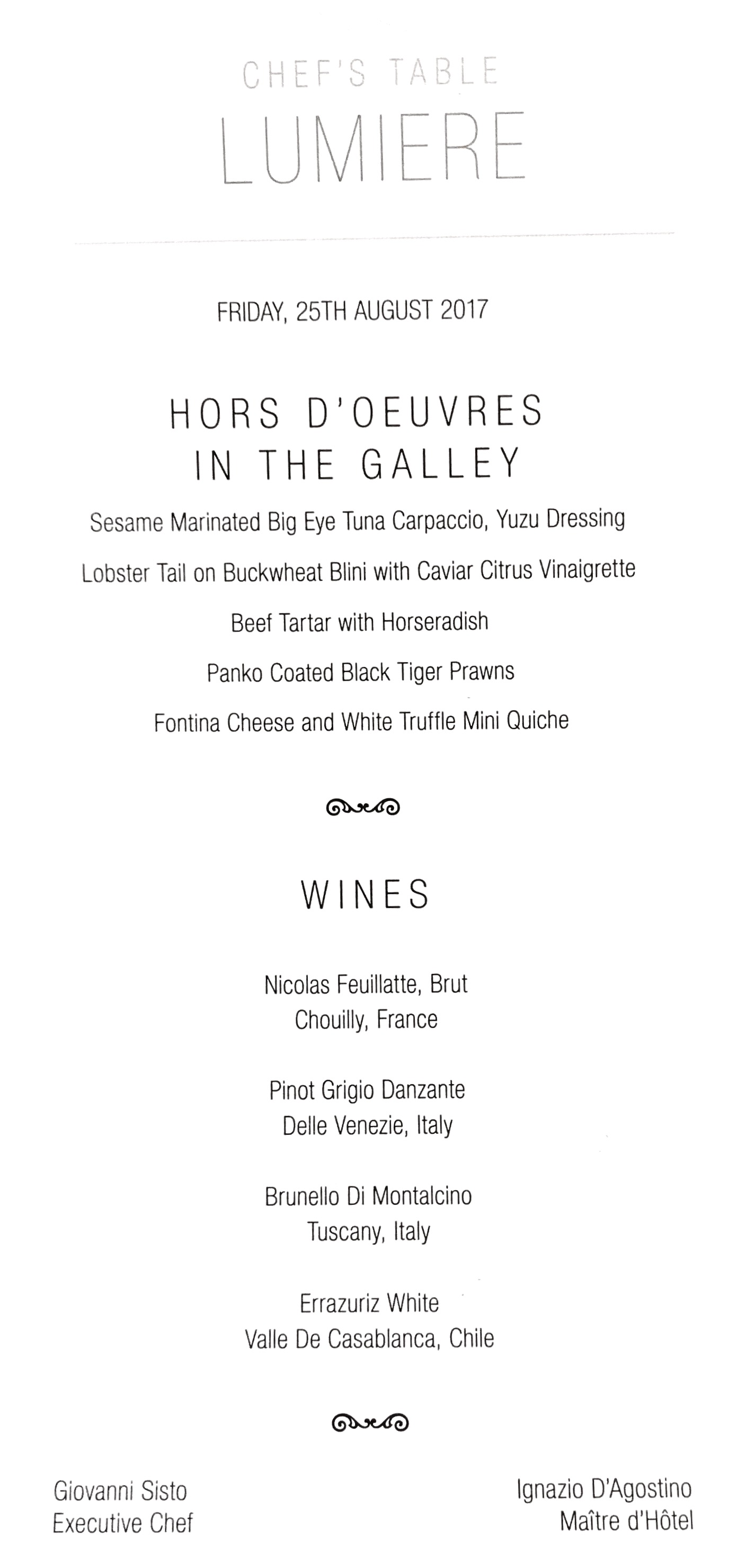
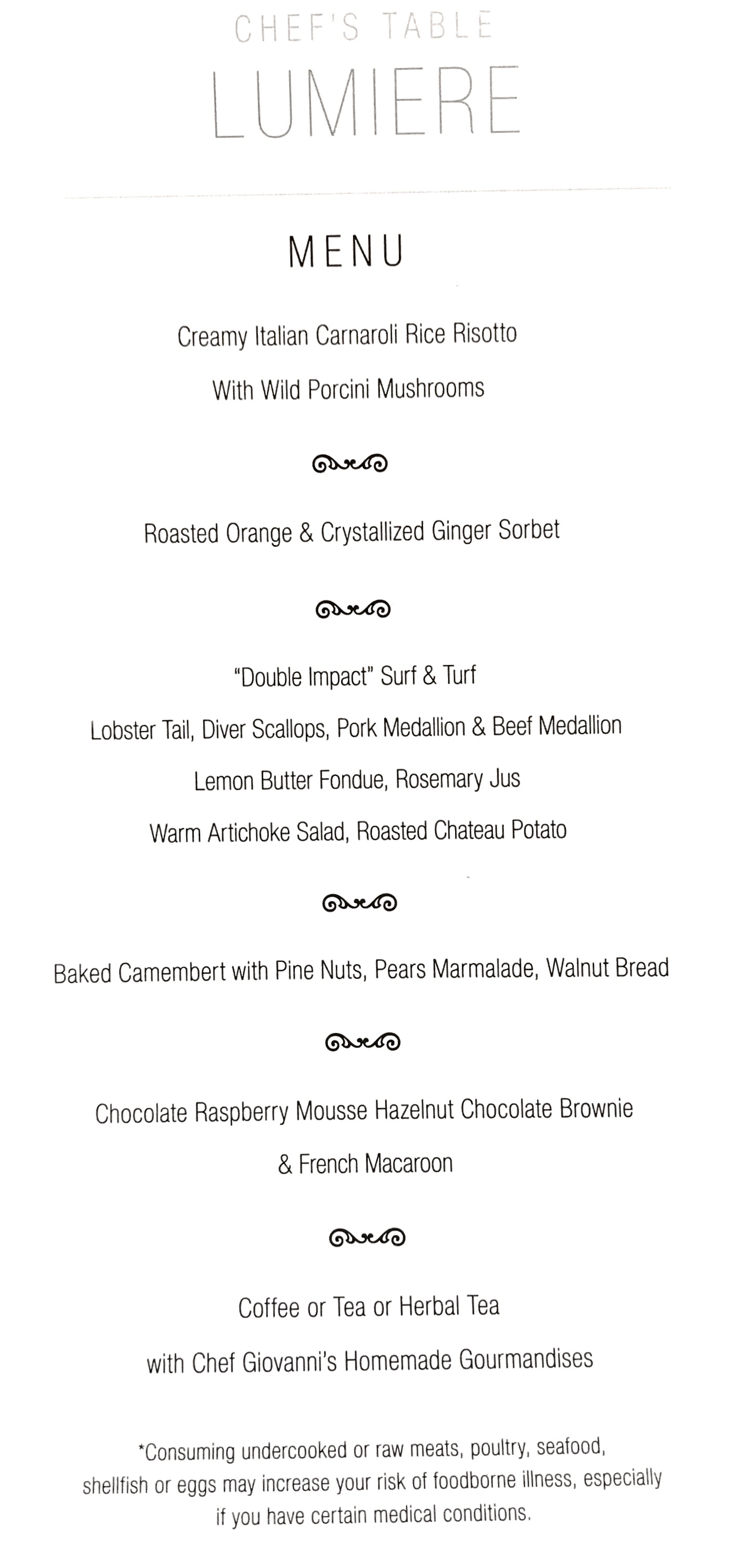 Sesame Marinated Big Eye Tuna Carpaccio, Yuzu Dressing…
Sesame Marinated Big Eye Tuna Carpaccio, Yuzu Dressing…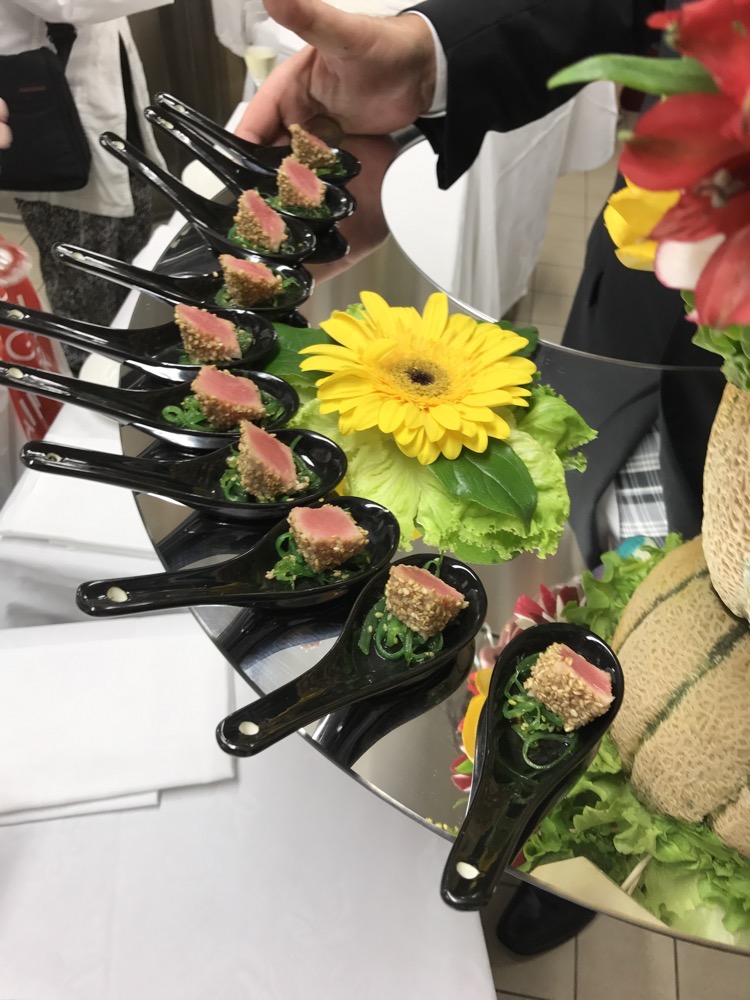
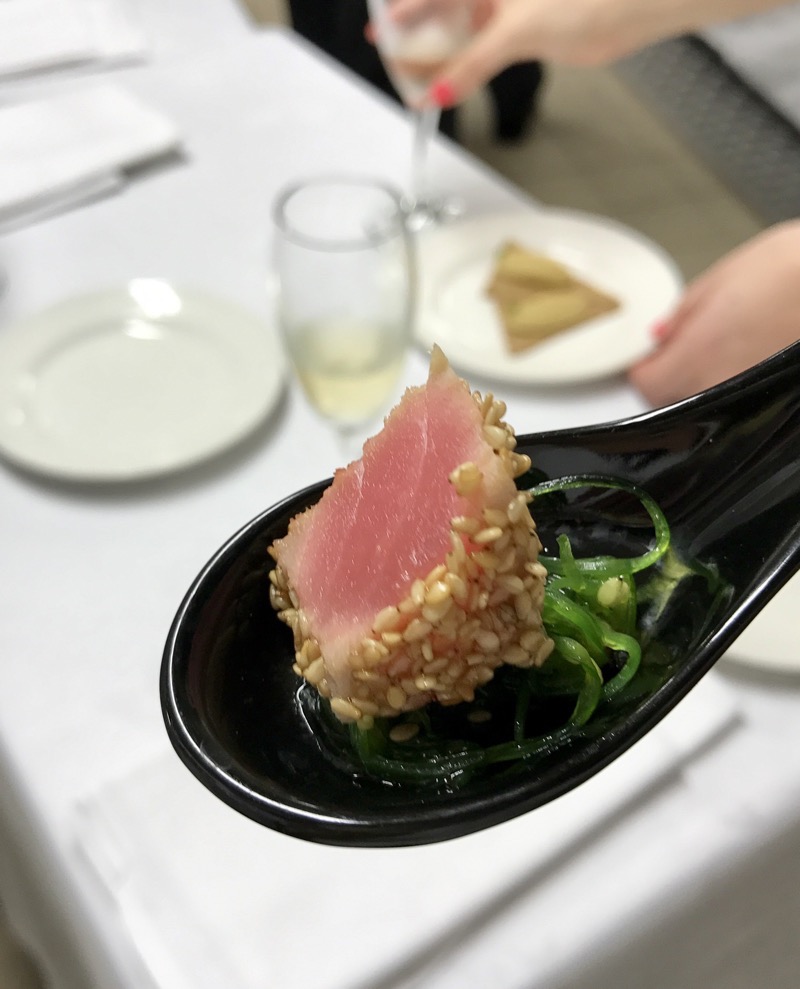 Lobster Tail on Buckwheat Blini with Caviar Citrus Vinaigrette…
Lobster Tail on Buckwheat Blini with Caviar Citrus Vinaigrette…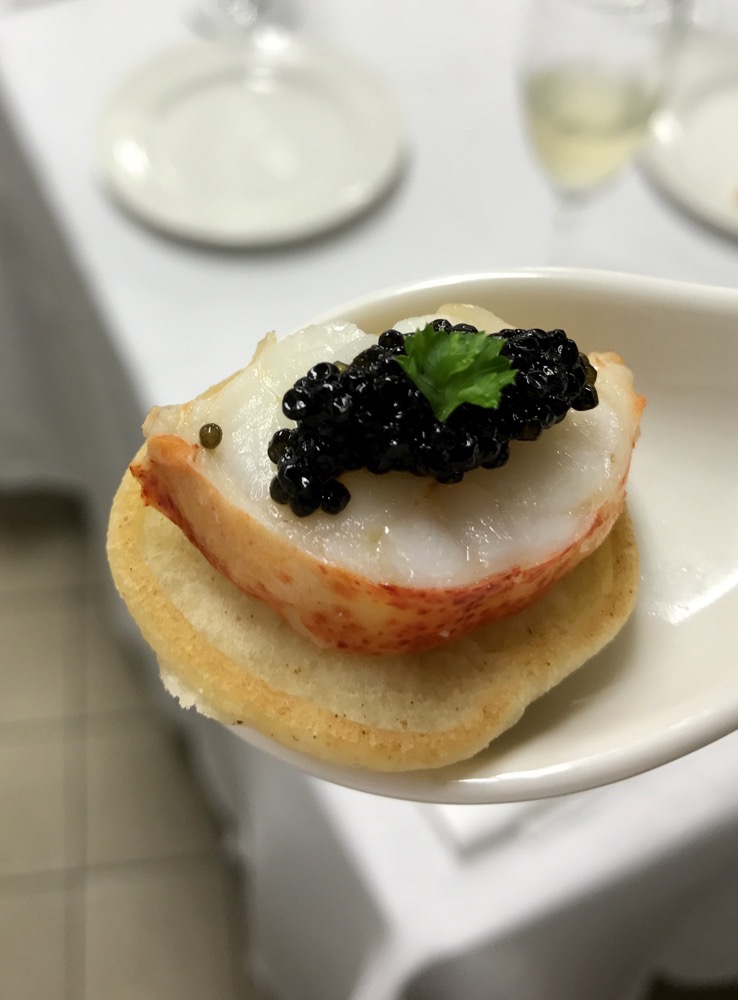 Beef Tartar with Horseradish…
Beef Tartar with Horseradish… Panko Coated Black Tiger Prawns…
Panko Coated Black Tiger Prawns…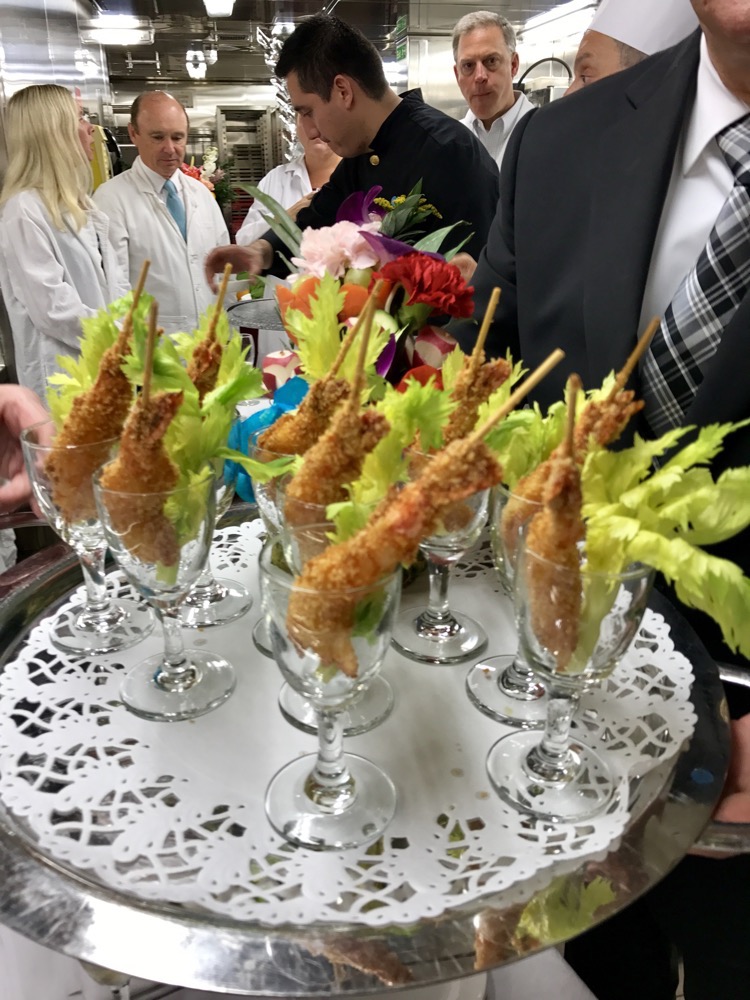 Fortina Cheese and White Truffle Mini Quiche…
Fortina Cheese and White Truffle Mini Quiche…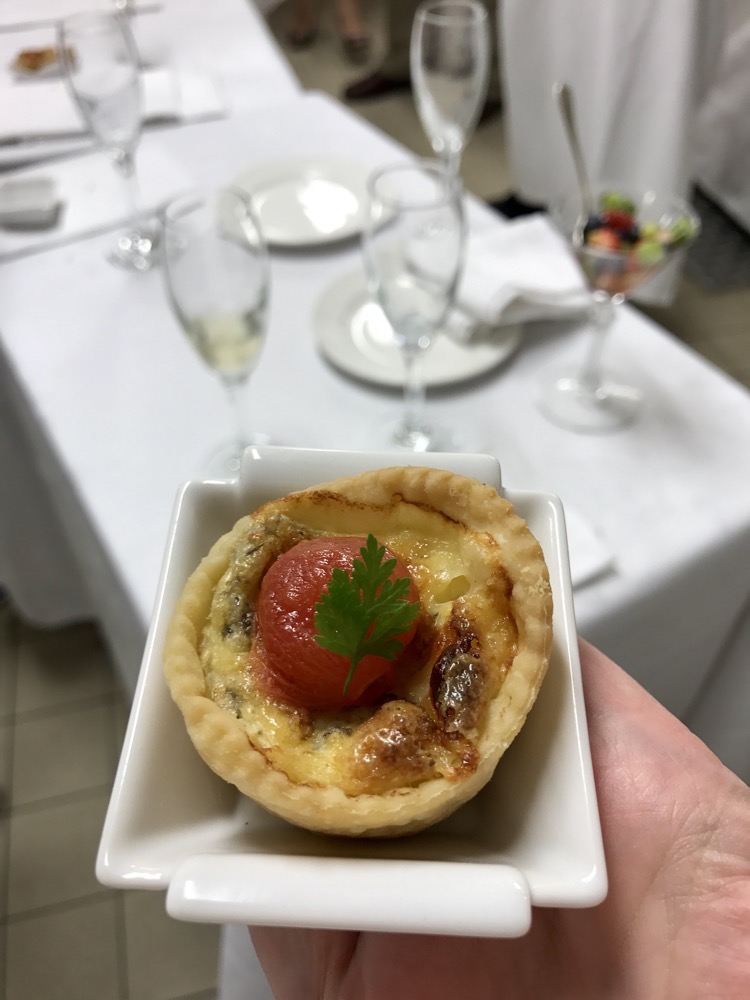
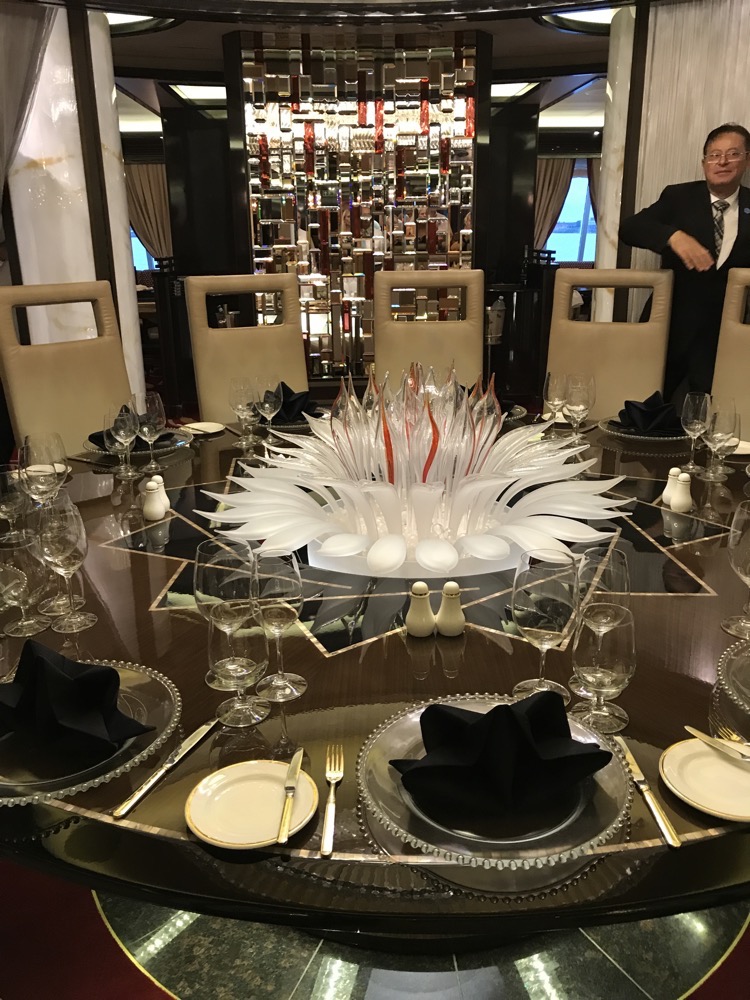
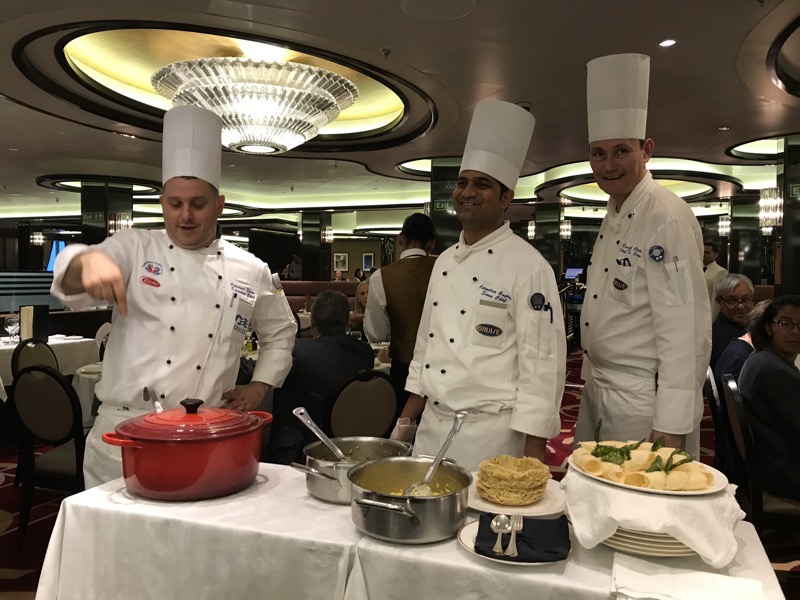
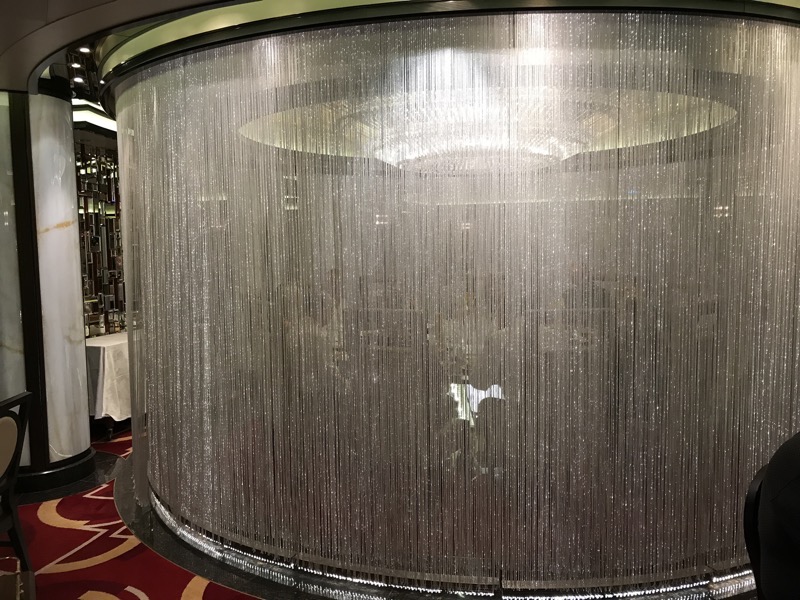 Creamy Italian Carnaroli Rice Rissotto with Wild Porcini Mushrooms…
Creamy Italian Carnaroli Rice Rissotto with Wild Porcini Mushrooms…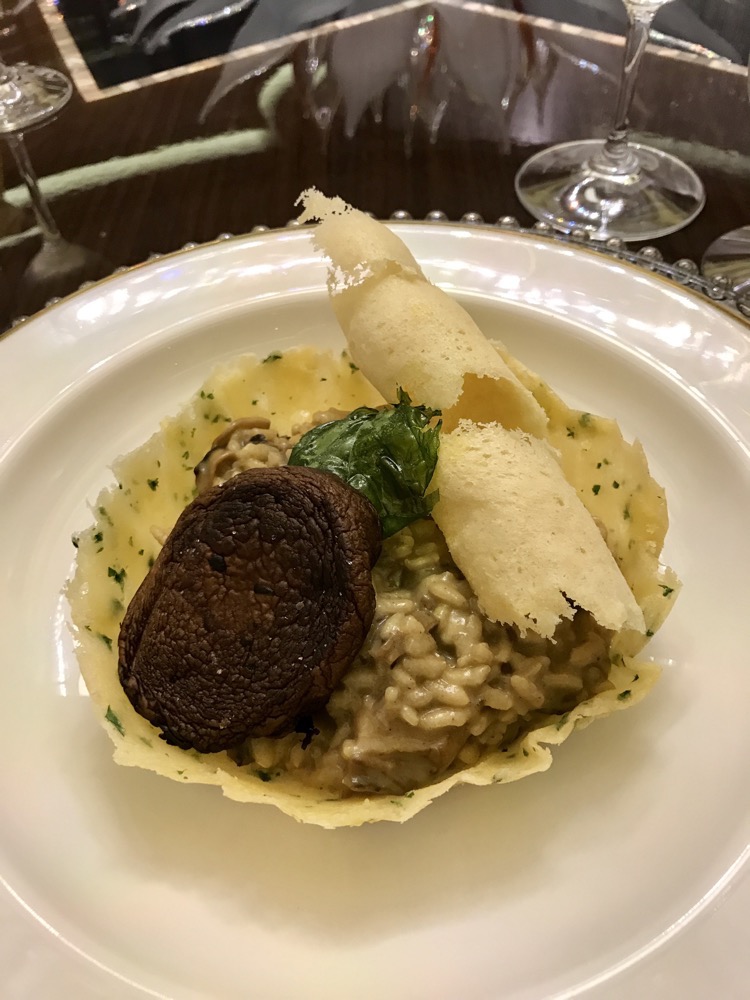 Roasted Orange & Crystallized Ginger Sorbet
Roasted Orange & Crystallized Ginger Sorbet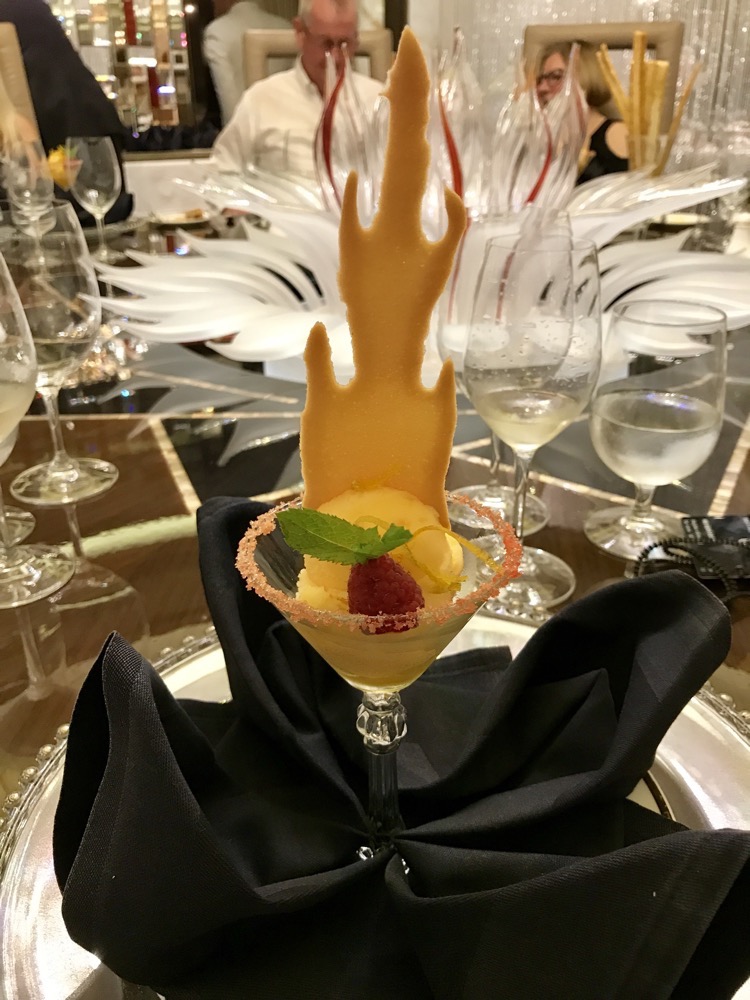 Double Impact Surf & Turf
Double Impact Surf & Turf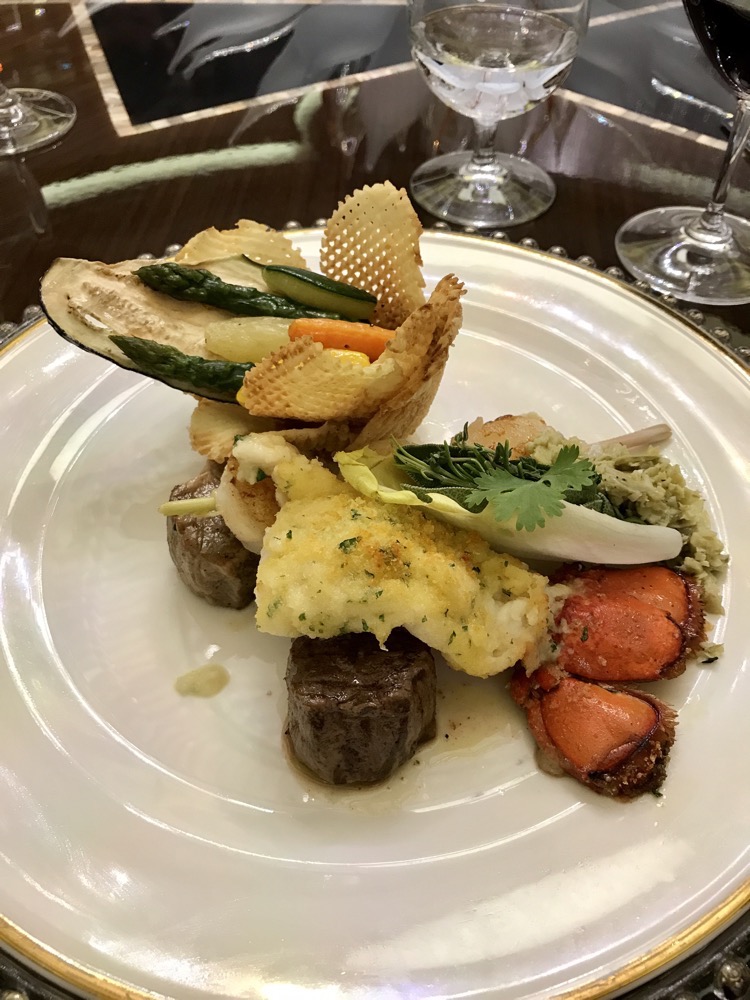 Baked Cambert with Pinenuts…
Baked Cambert with Pinenuts…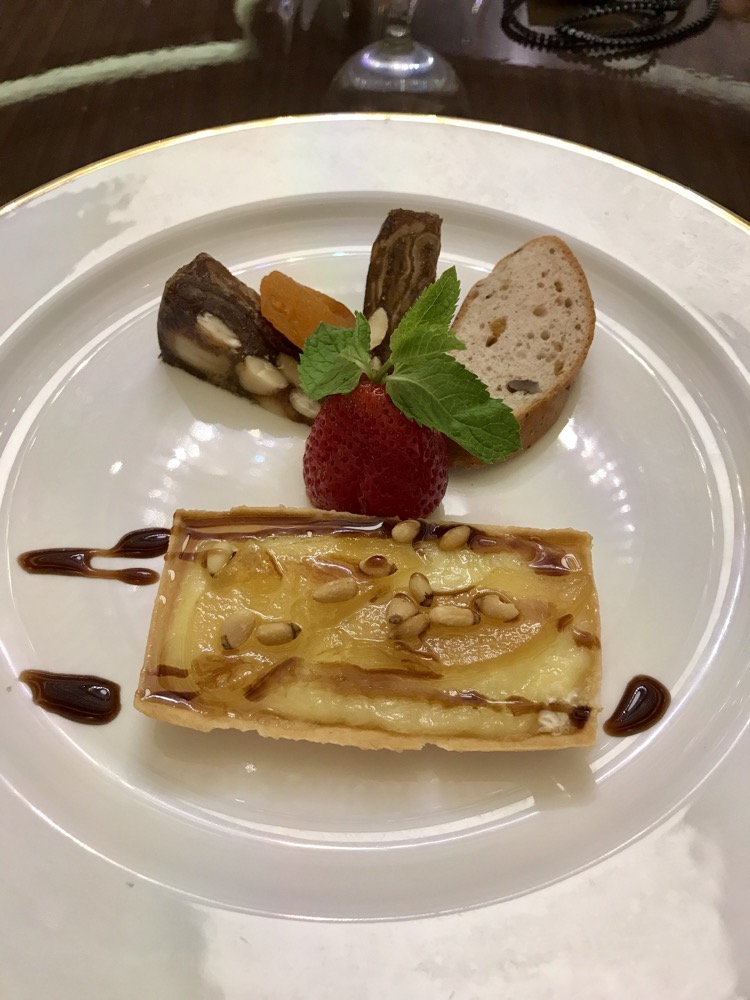 Chocolate Raspberry Mousse and Hazelnut Brownie, and French Macaroon…
Chocolate Raspberry Mousse and Hazelnut Brownie, and French Macaroon…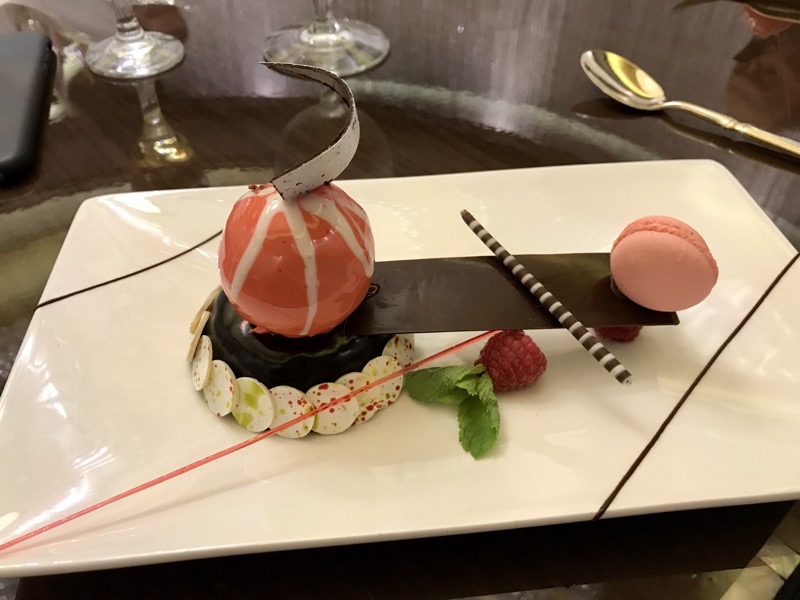 And this? Well I have no idea what this is. The Maitre D’ was speaking to some people about dietary requirements (we had one vegetarian and two no seafood and two no lactose on the table), he turned to me and asked if I had any dietary requirements, and I said to him, “No allergies at all, sir. Though I have a particular dislike for all things chocolate!” Which 1) raised some looks of incredulity from my fellow diners, “How can you not like chocolate?”, and 2) was information that was obviously filed by the Maitre D’ and they made me a special non-chocolate dessert! I have no idea what it was, but it was fabulous, something vanilla mousse-like in layers of soft caramel biscuit thing. Delicious, and so very thoughtful.
And this? Well I have no idea what this is. The Maitre D’ was speaking to some people about dietary requirements (we had one vegetarian and two no seafood and two no lactose on the table), he turned to me and asked if I had any dietary requirements, and I said to him, “No allergies at all, sir. Though I have a particular dislike for all things chocolate!” Which 1) raised some looks of incredulity from my fellow diners, “How can you not like chocolate?”, and 2) was information that was obviously filed by the Maitre D’ and they made me a special non-chocolate dessert! I have no idea what it was, but it was fabulous, something vanilla mousse-like in layers of soft caramel biscuit thing. Delicious, and so very thoughtful. 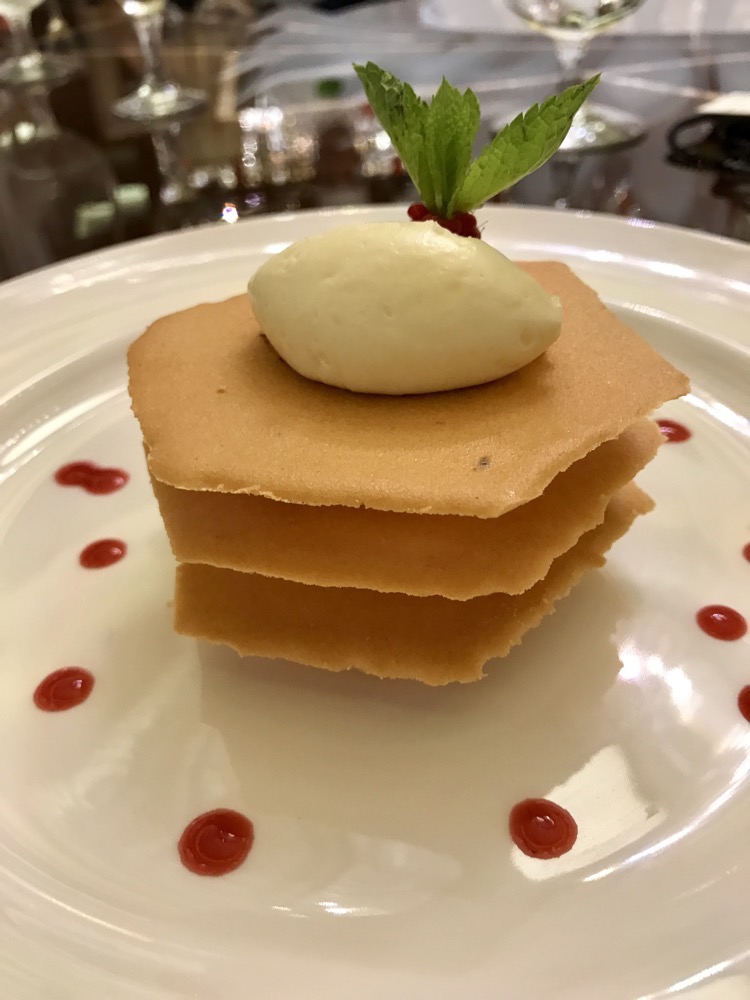 And of course, Chef Giovannis’ Homemade Gourmandises…
And of course, Chef Giovannis’ Homemade Gourmandises…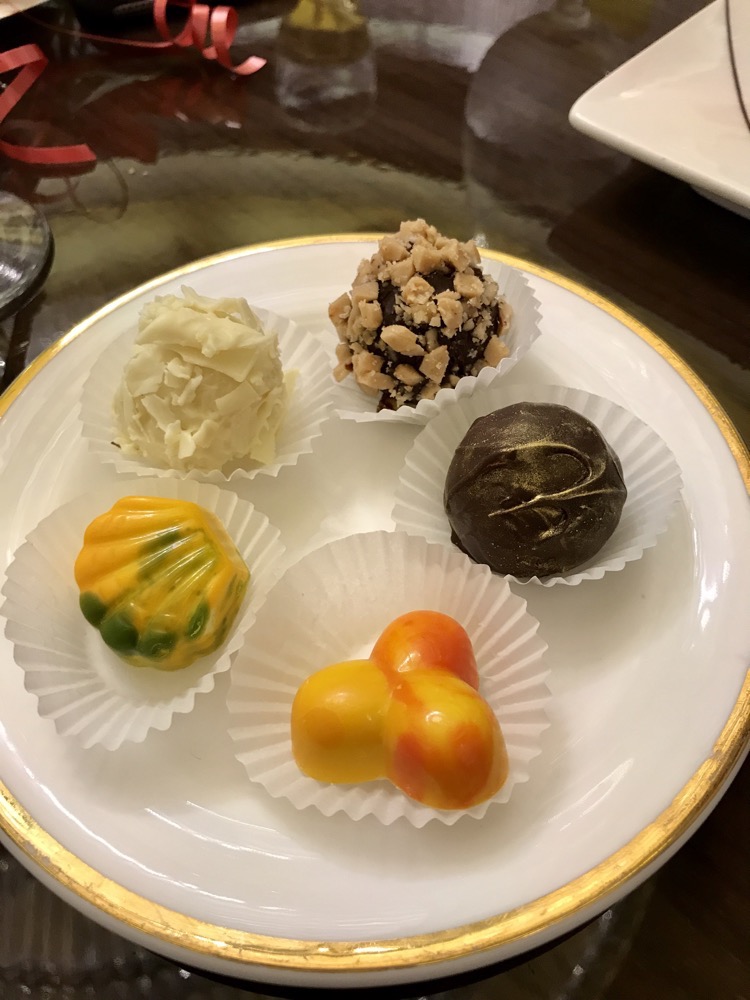
It was a lovely evening, we met some lovely people, felt thoroughly spoiled by the staff and tried some truly delicious things.
This trip, is the first time we have been invited to the ‘Most Travelled Lunch’. Each cruise, the Princess Captain’s Circle host arranges a lunch for the 40 most travelled people on the ship – these invitations go out to people according to those in the program who have the most days at sea with Princess. And this trip out of 3800 passengers on the ship, we were lucky enough to be invited. The luncheon was held in the Sabatini’s restaurant, and we were seated with Ralph, who is the Customer Service Manager of the entire ship – he is repsonsible for the purser’s desk, the shore excursions department, photography department and more.
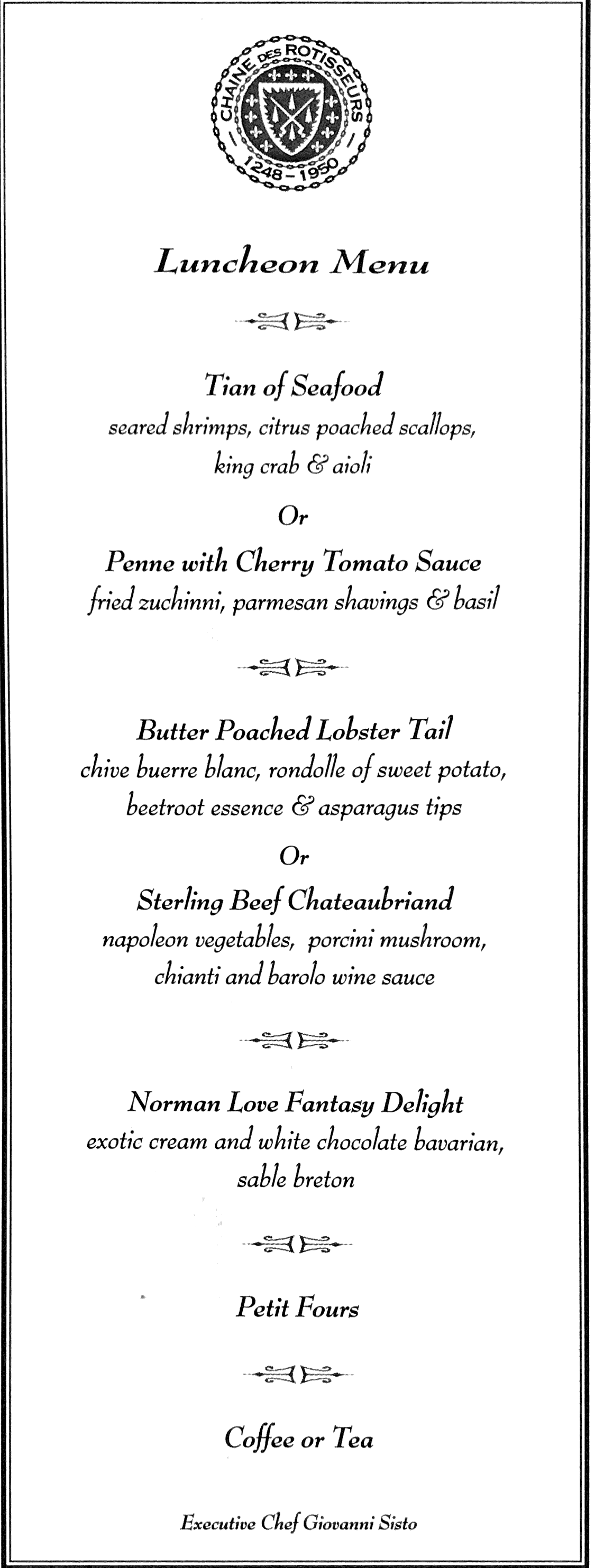 Lovely custom napery…
Lovely custom napery…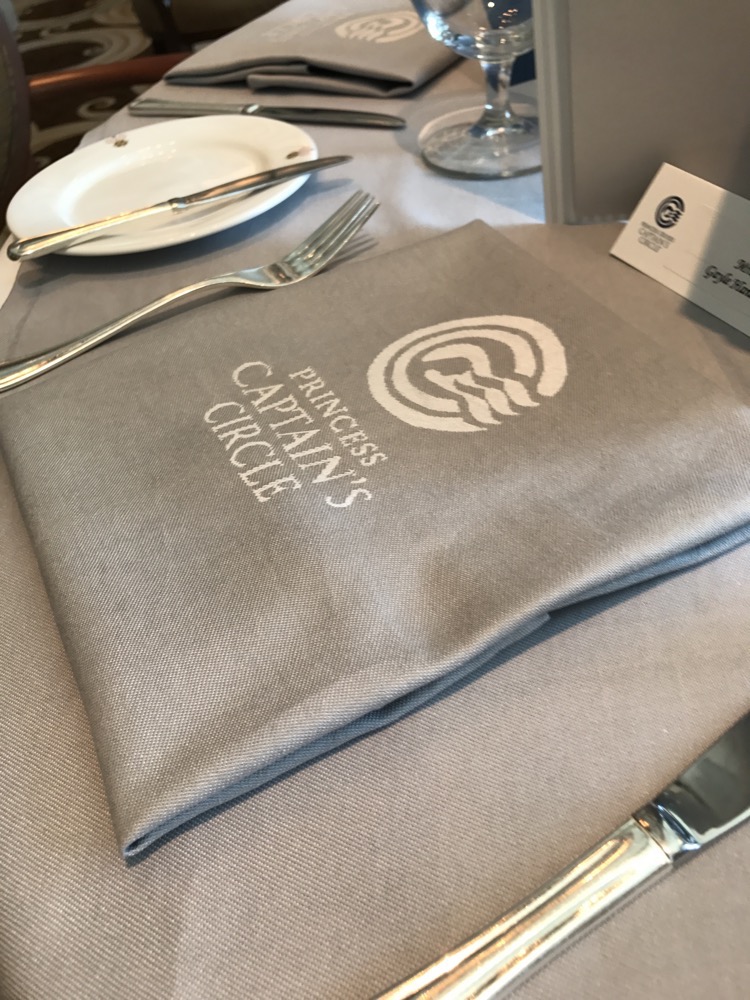 Personalized menus…
Personalized menus…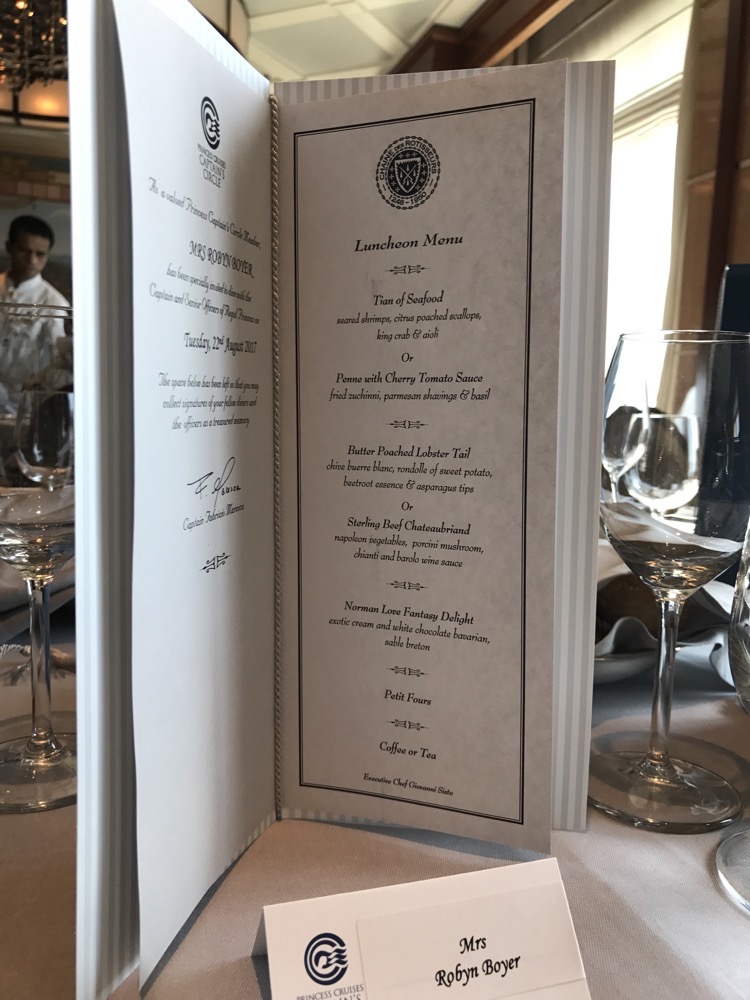 Tian of Seafood…
Tian of Seafood…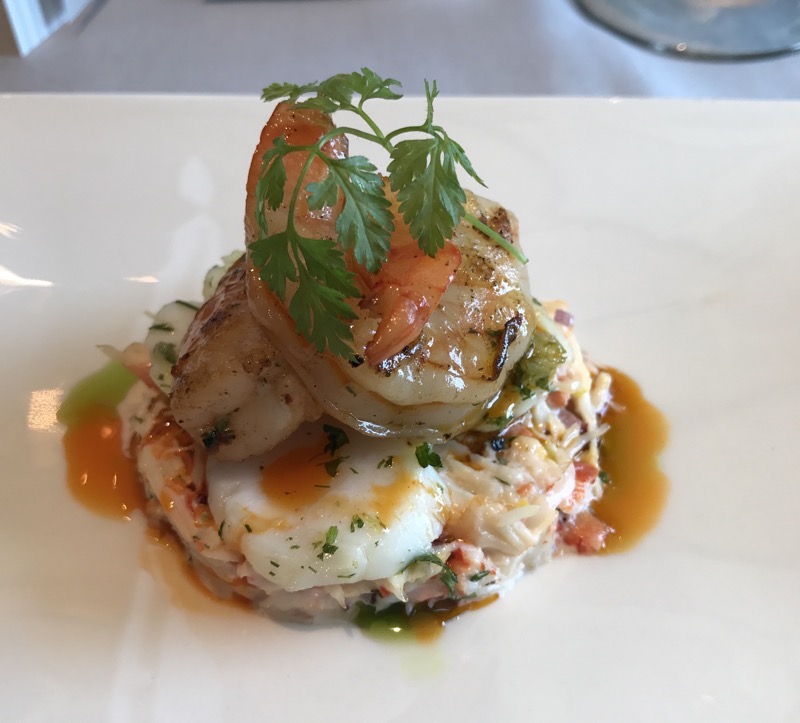 Butter Poached Lobster Tail…
Butter Poached Lobster Tail…
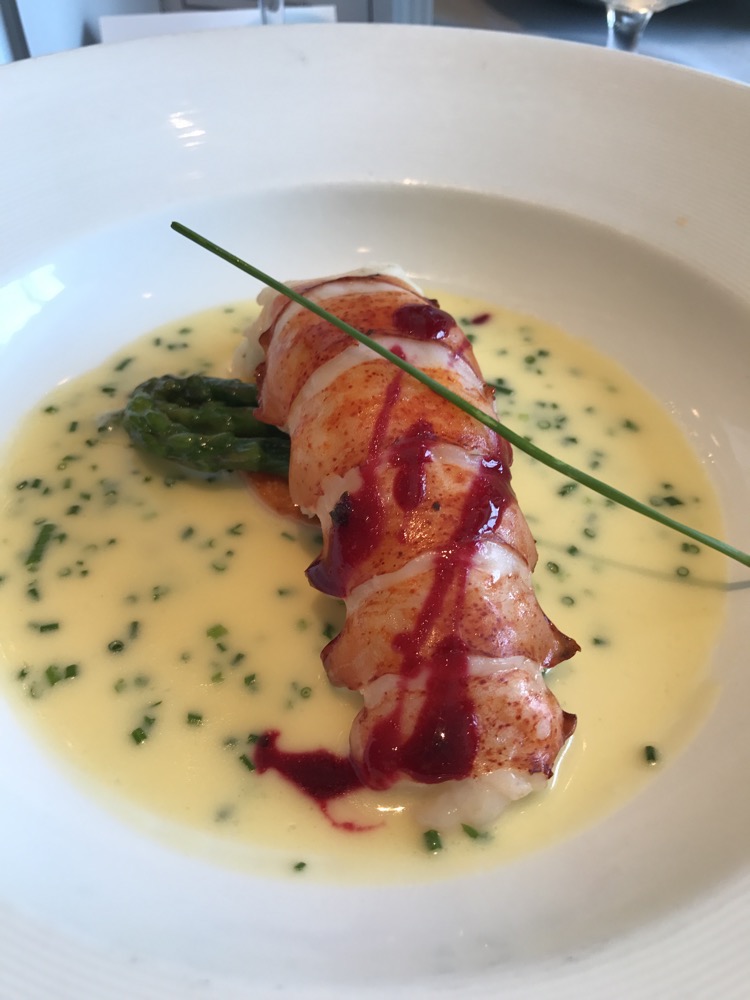 Norman Love Fantasy Delight…
Norman Love Fantasy Delight…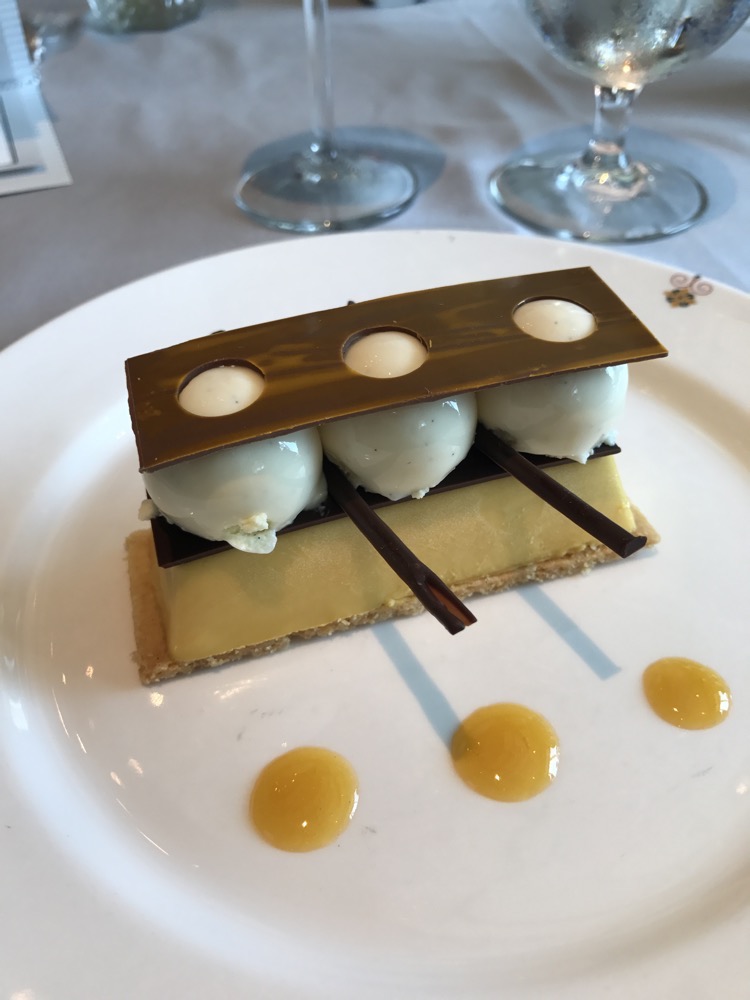
It was a lovely luncheon actually, and a wonderful opportunity to discuss ship related things with a knowledgeable member of the staff. Ralph was intimately involved in the launching of the last three Royal Class ships, and is back on the Regal getting ready to launch of the Ocean Medallion innovation. We had very interesting conversations.
All up the dining has been superb!

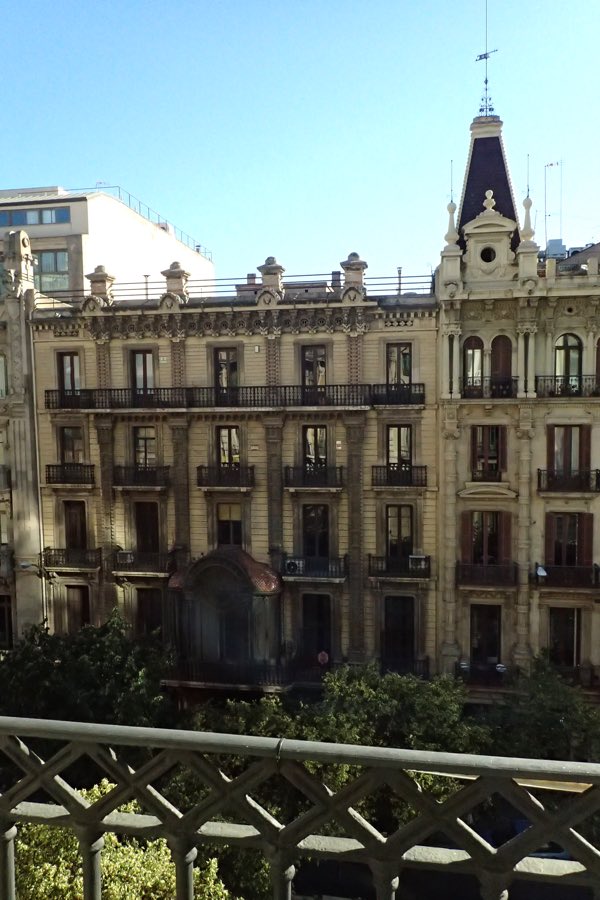 Okay, so I am pretty well travelled I guess, but for some reason, I have never found myself on a Hop On Hop Off Bus. Most cities have them and they’re designed to mass transport tourists directly to the sights, but I have somehow managed to avoid them, either by just going places on foot or by using public transport. Today, feeling rather tired after yesterday’s stressful and exhausting adventures, we decided to get on the HOHO bus and just potter around Barcelona and see where we ended up.
Okay, so I am pretty well travelled I guess, but for some reason, I have never found myself on a Hop On Hop Off Bus. Most cities have them and they’re designed to mass transport tourists directly to the sights, but I have somehow managed to avoid them, either by just going places on foot or by using public transport. Today, feeling rather tired after yesterday’s stressful and exhausting adventures, we decided to get on the HOHO bus and just potter around Barcelona and see where we ended up.
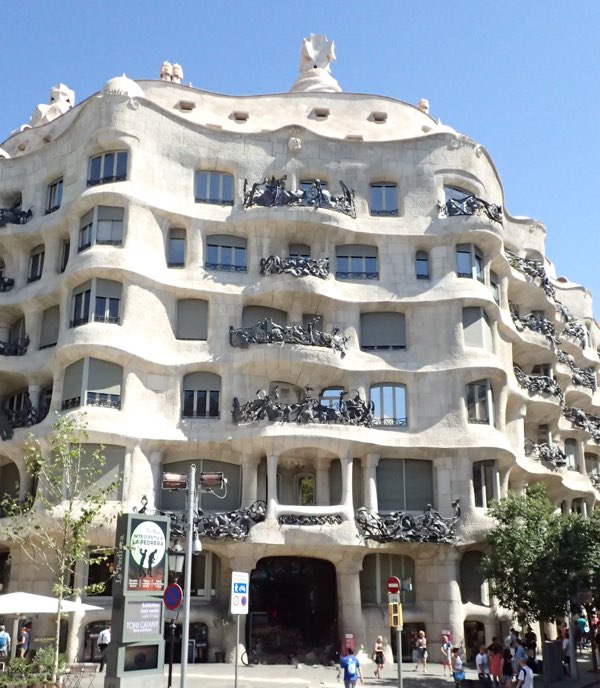
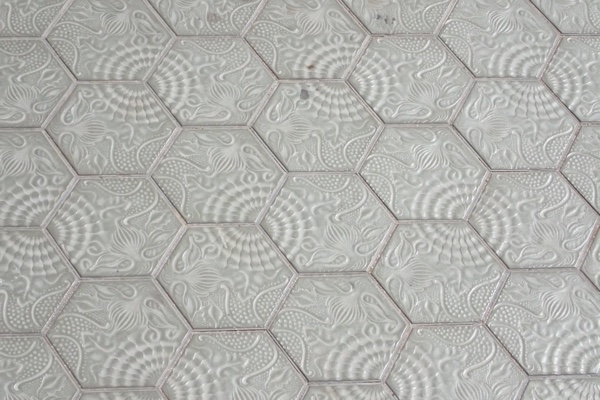 This building was a personal residence owned by some very rich earl – it takes up an entire block and the family typically lived on the bottom floor and rented out the top floors.
This building was a personal residence owned by some very rich earl – it takes up an entire block and the family typically lived on the bottom floor and rented out the top floors.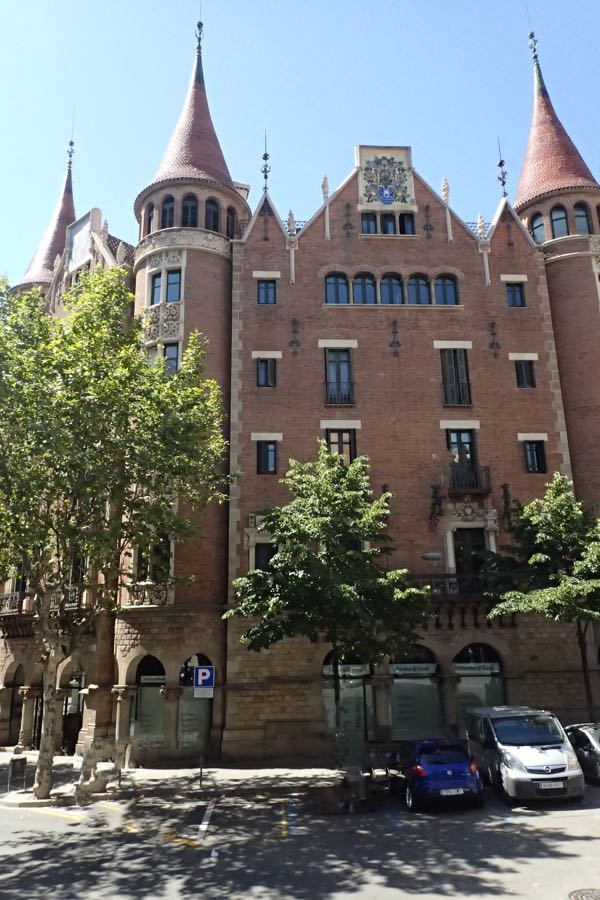 The Segrada Familia in all it’s be-scaffolded and be-craned brilliance. This is such a beautiful building and it is much further completed than when I was here 20 years ago, I dare say a trip back when it is finished would be well worth it…
The Segrada Familia in all it’s be-scaffolded and be-craned brilliance. This is such a beautiful building and it is much further completed than when I was here 20 years ago, I dare say a trip back when it is finished would be well worth it… 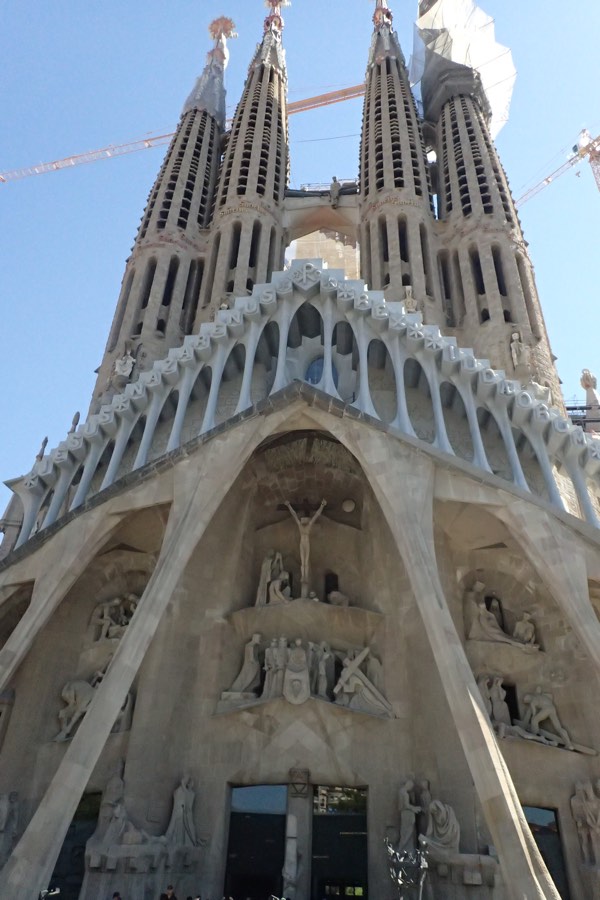
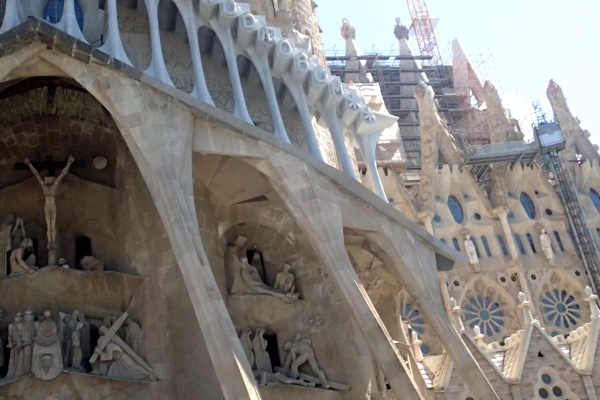
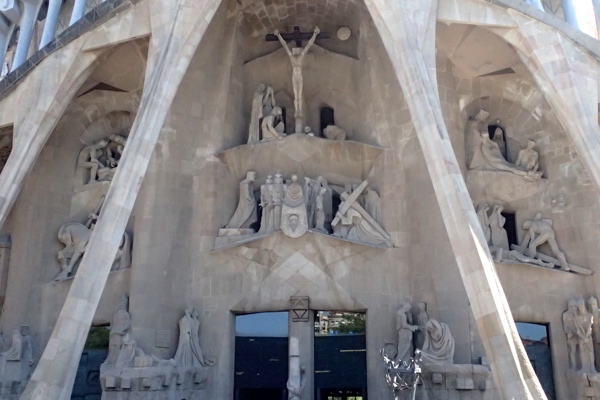
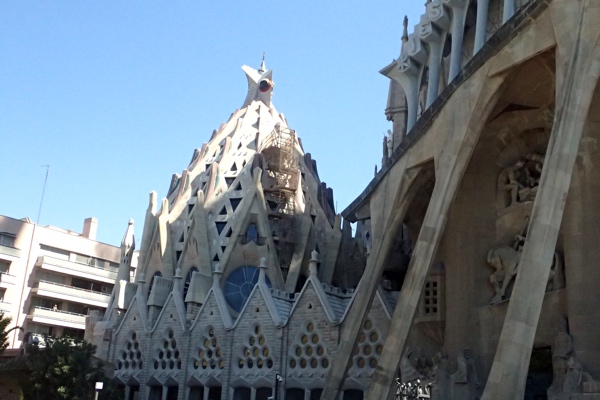
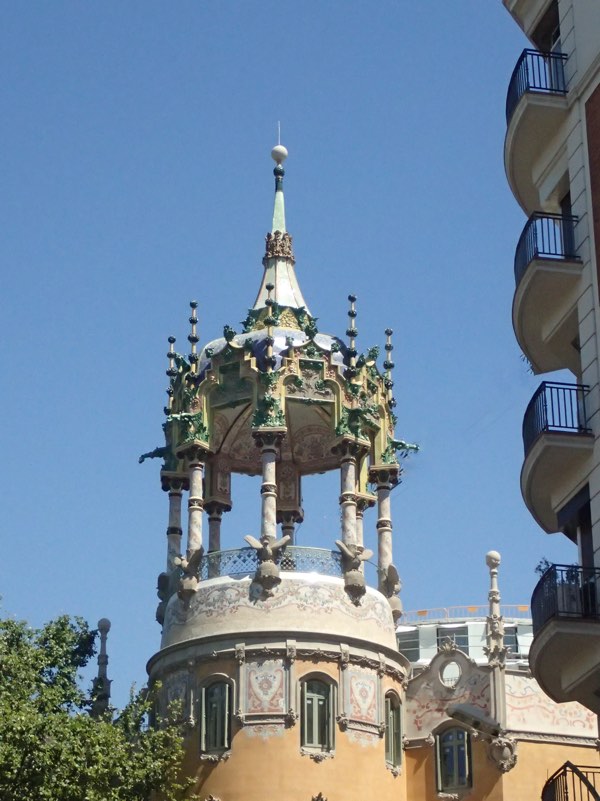
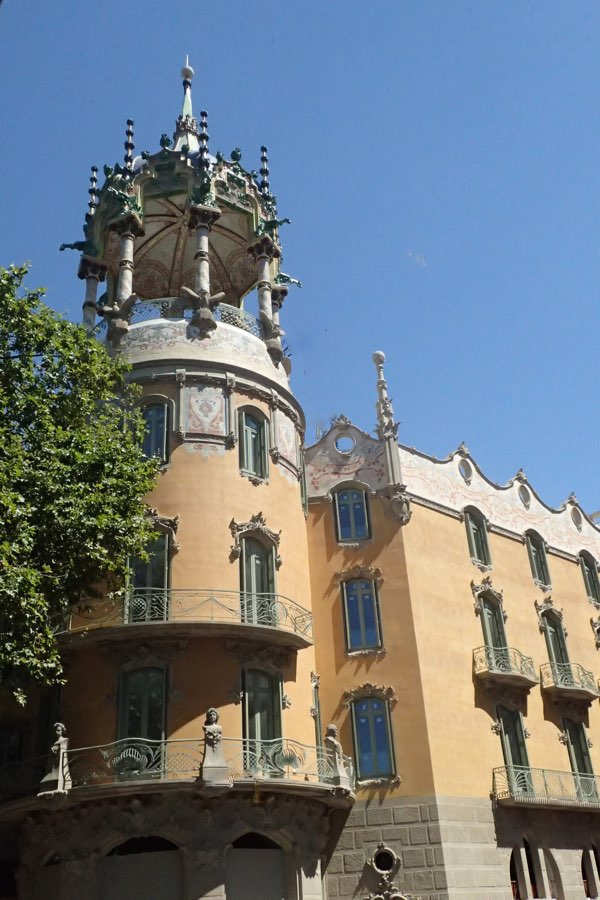 Sarria
Sarria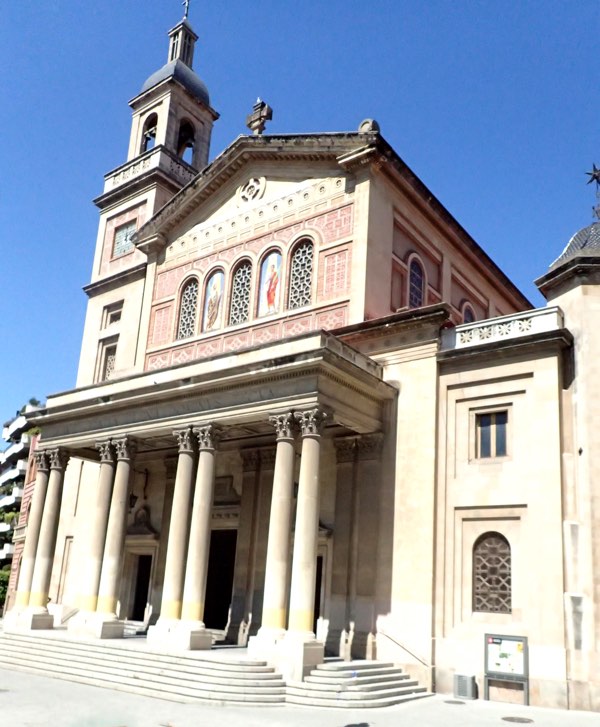
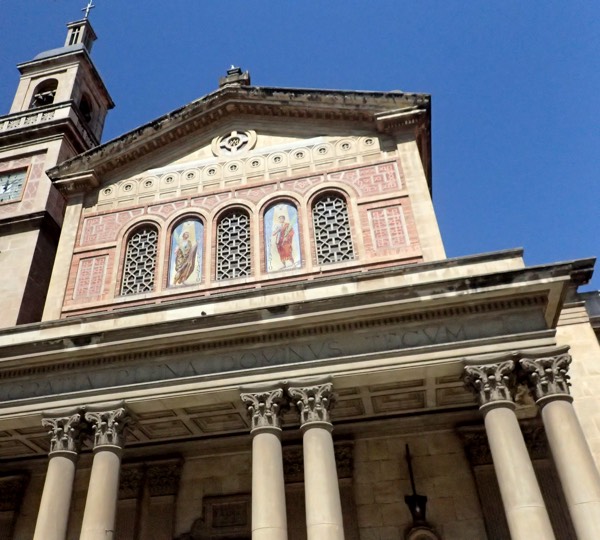
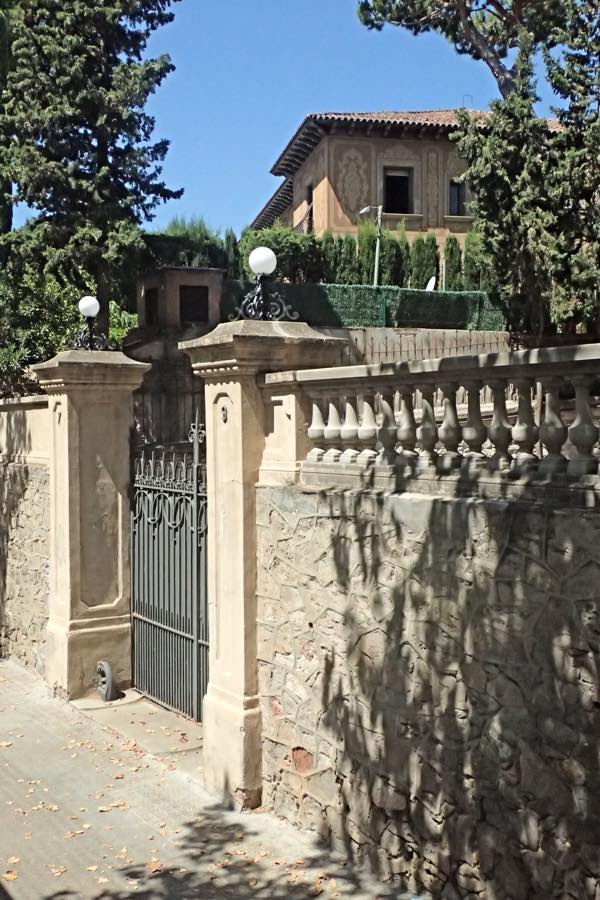
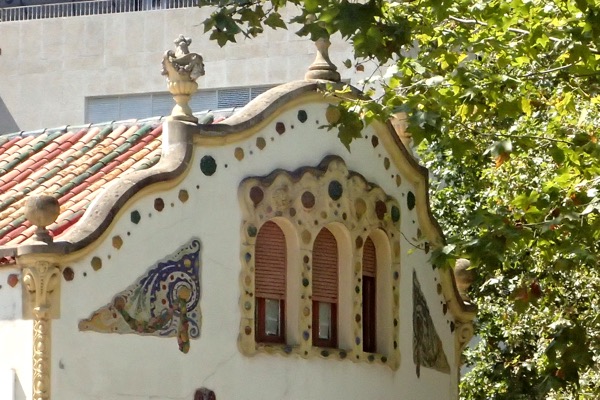 The Monestir de Pedralables
The Monestir de Pedralables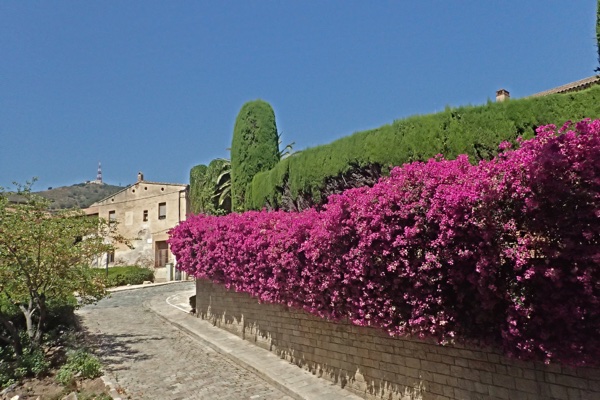
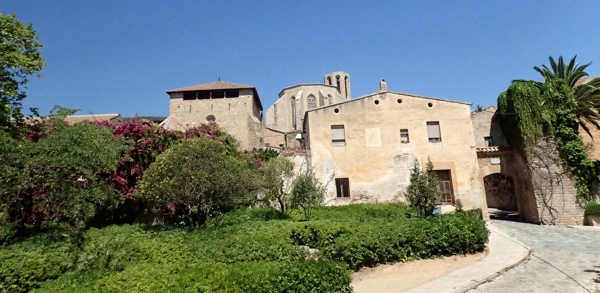
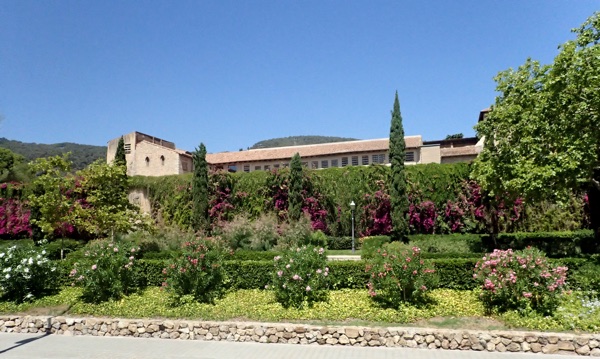
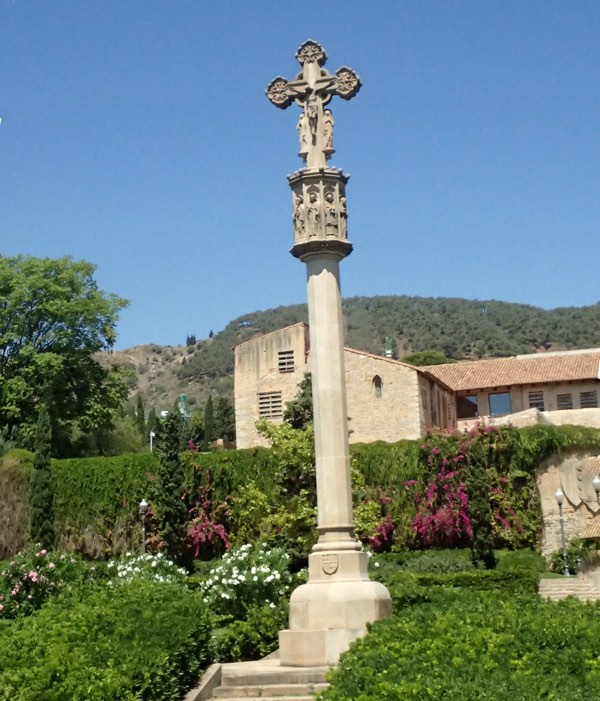 The Palau Reial-Pavellions Guell – but unable to get a decent photo of the famous dragon gate… more Gaudi.
The Palau Reial-Pavellions Guell – but unable to get a decent photo of the famous dragon gate… more Gaudi.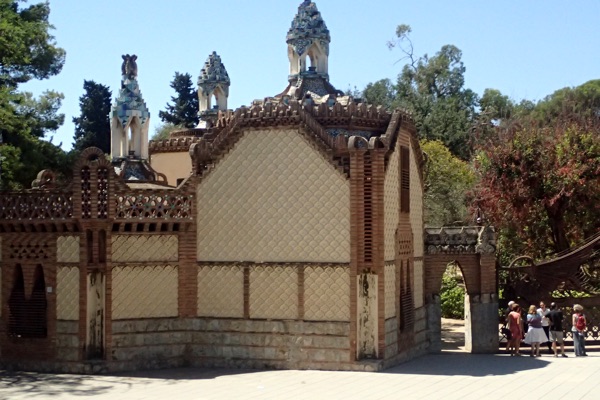 Futbol Club of Barcelona
Futbol Club of Barcelona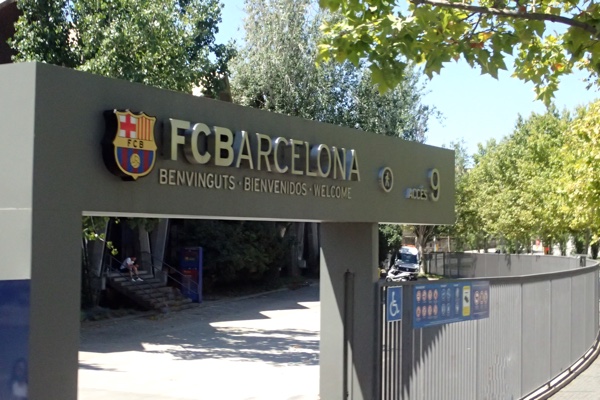
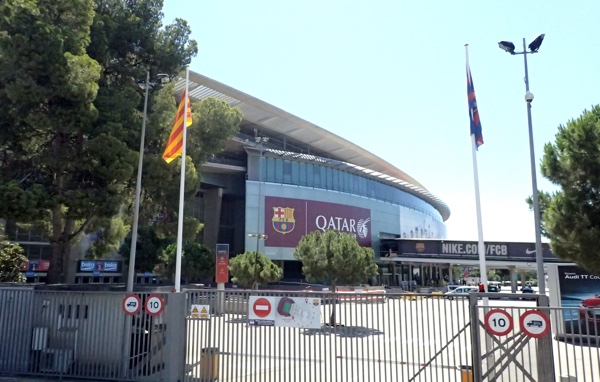
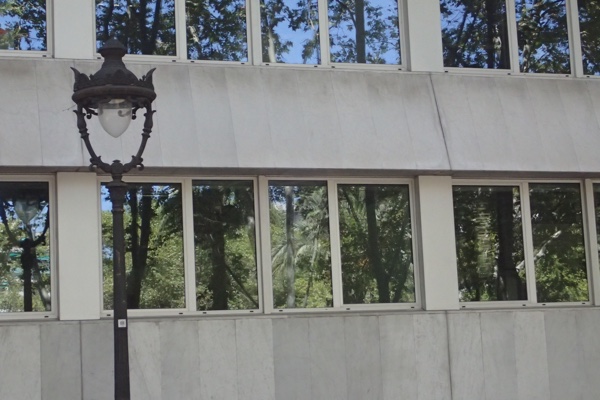
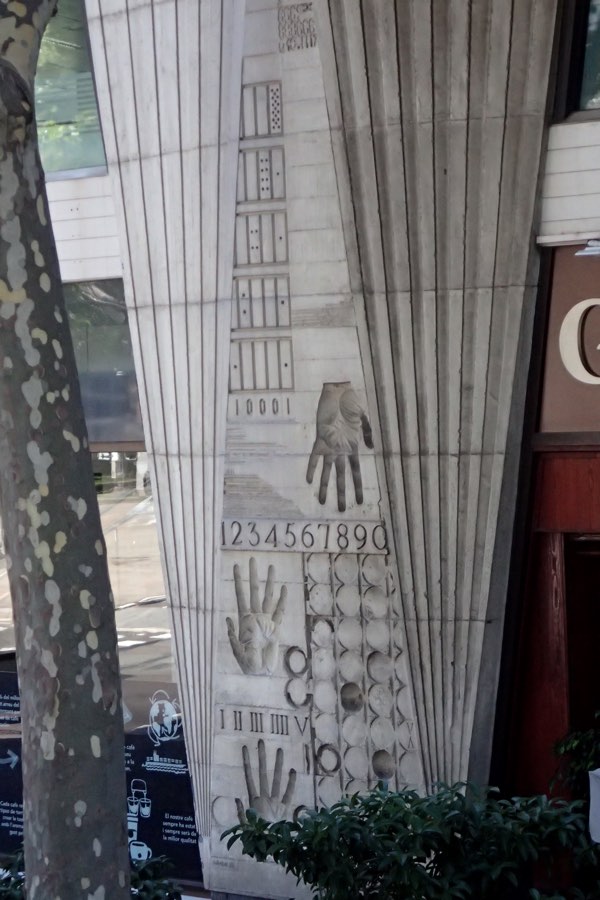
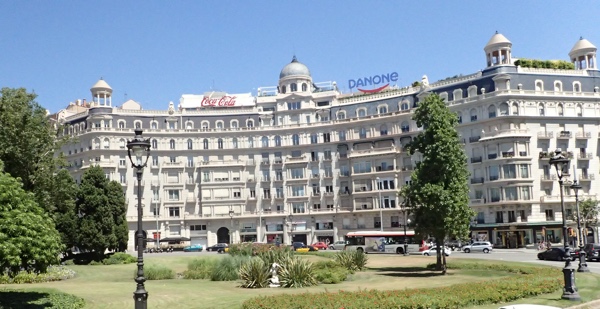
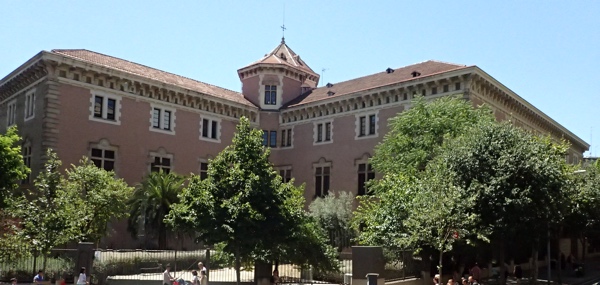 Pg. de Gracia – More Gaudi
Pg. de Gracia – More Gaudi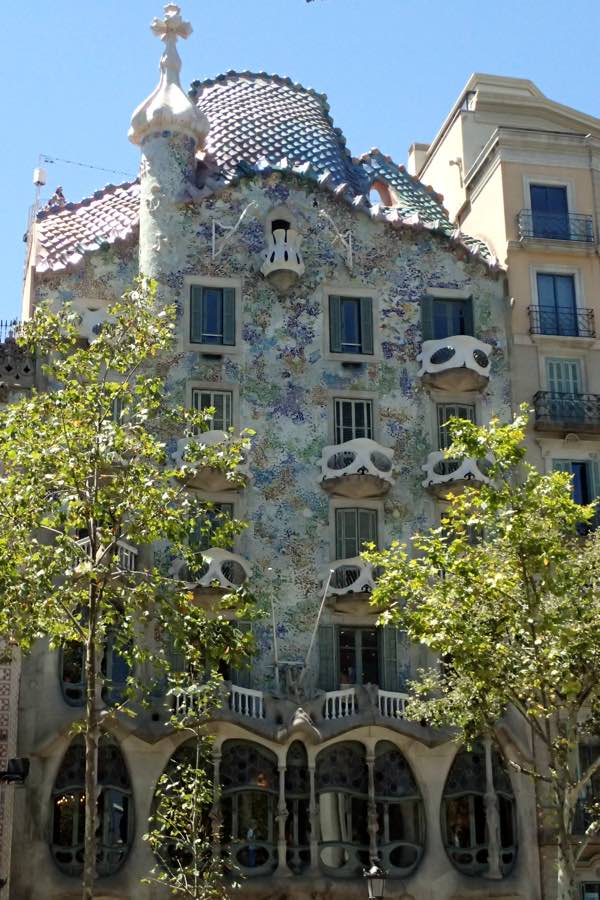
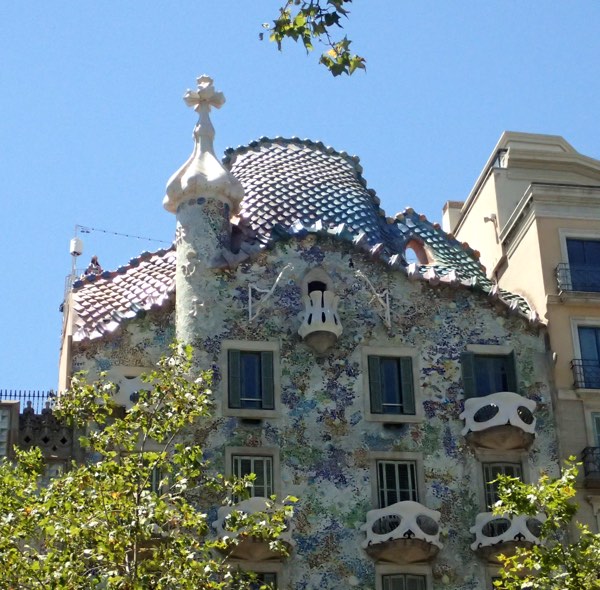
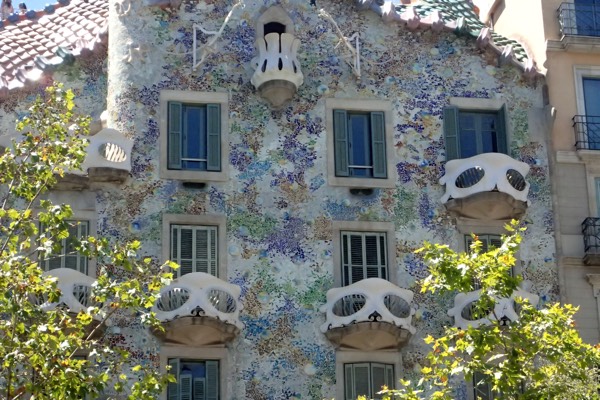 Painted under a street awning.
Painted under a street awning. In the pavement.
In the pavement.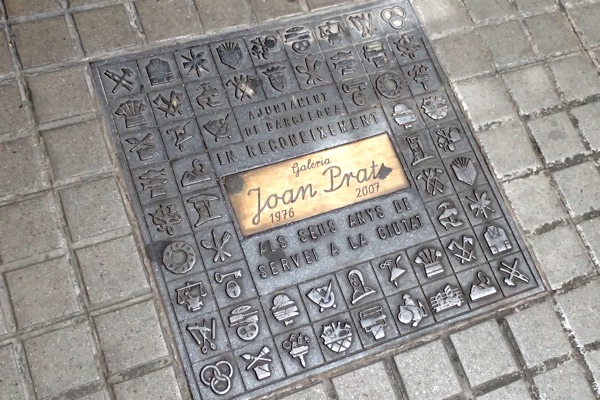 We drove around for about two hours – most of my photos were crap. Too many people, cars, lamp posts, trees in the way. The commentary was good, but if I can’t move to a better vantage point or wait for people to leave my shot, I can’t take a decent photo. So I guess HOHO buses are not for me.
We drove around for about two hours – most of my photos were crap. Too many people, cars, lamp posts, trees in the way. The commentary was good, but if I can’t move to a better vantage point or wait for people to leave my shot, I can’t take a decent photo. So I guess HOHO buses are not for me.
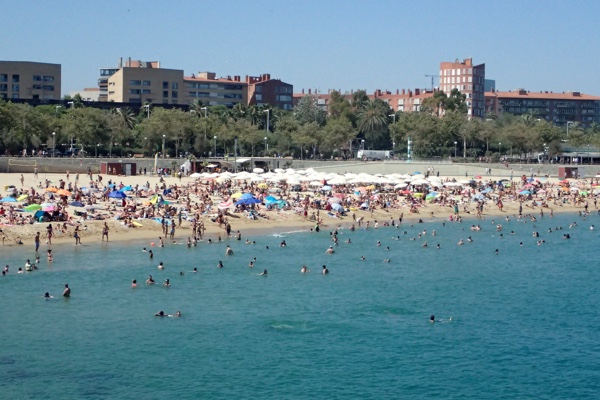
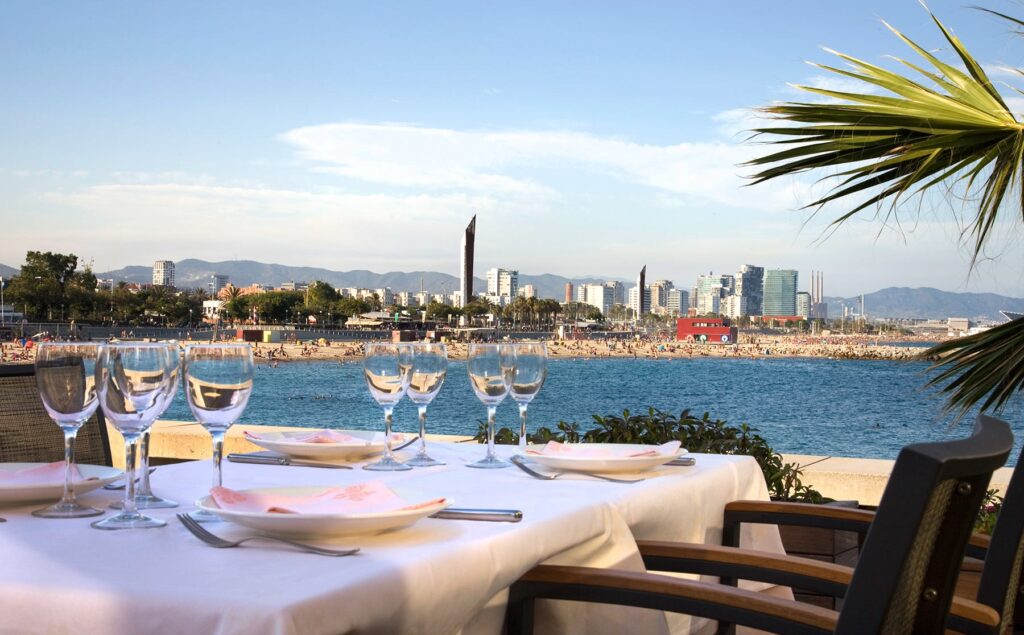 Duck breast lasagne
Duck breast lasagne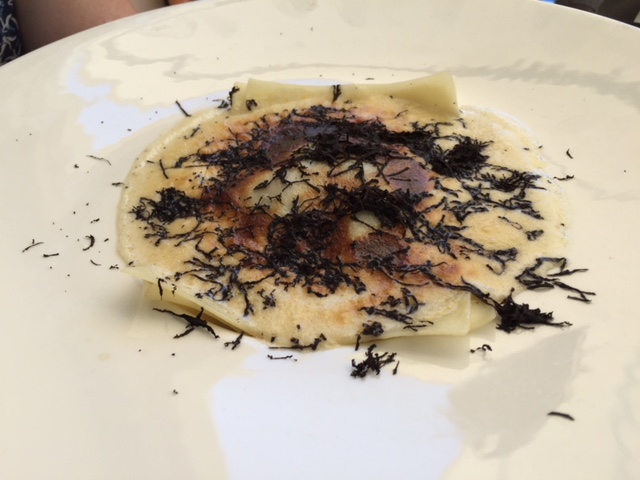 Seafood paella.
Seafood paella.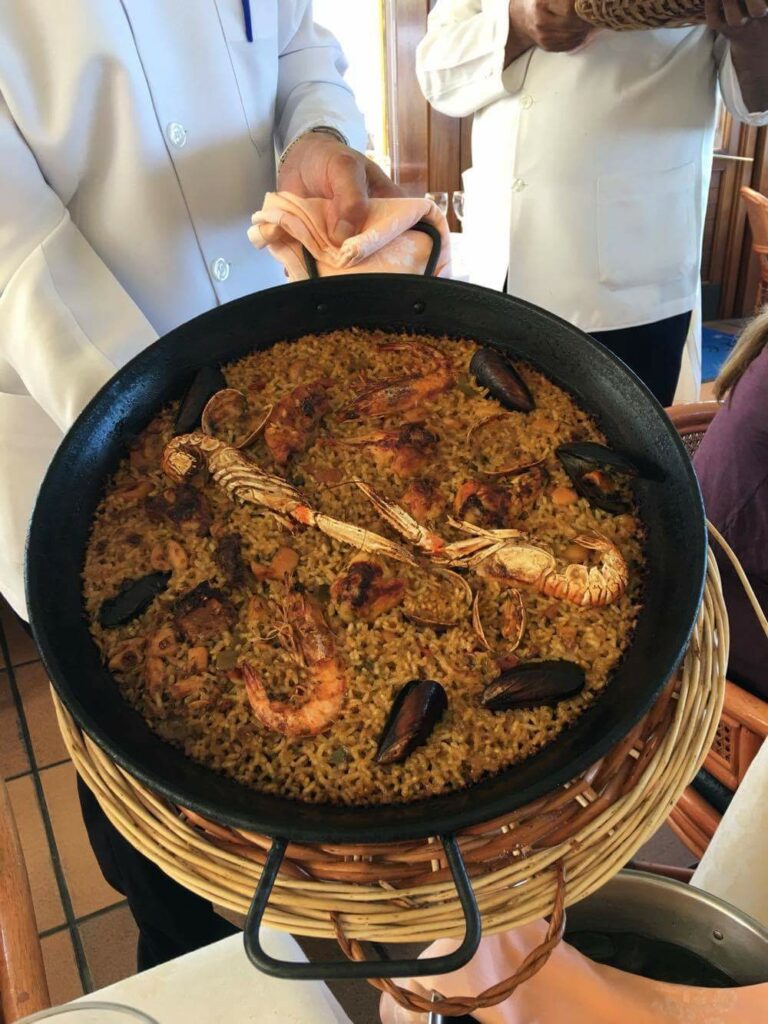
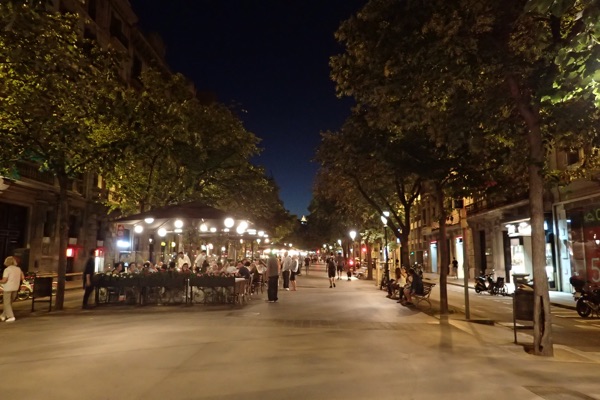
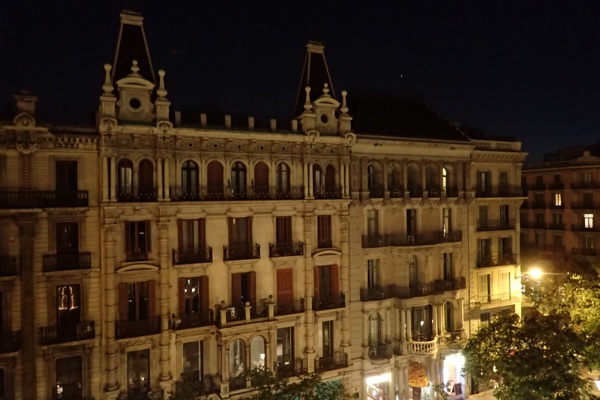
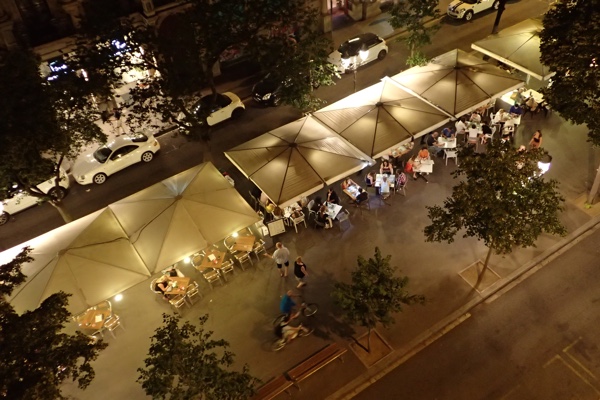
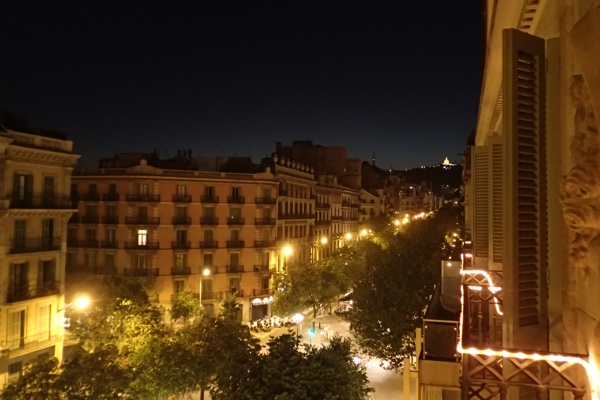 So tired. Going to have an easy sea day tomorrow in my hotel room, I think!
So tired. Going to have an easy sea day tomorrow in my hotel room, I think!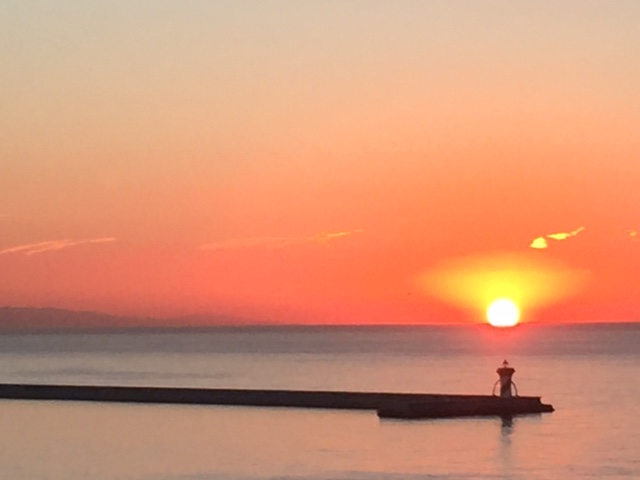
 Also woke up to the news of a violent military coup in Turkey affecting Istanbul and Ankara and oh shit – Mum is supposed to be flying to Istanbul in less than 20 hours. So, of course that meant as soon as we got to decent wifi, I spent the better part of two hours trying to call travel agents, tour operators and travel insurance providers to find out how to cancel, rebook, claim a whole bunch of messy shit to change her plans. The tour operator – Peregrine for anyone who is interested – were originally adamant that the tour was still going ahead. That once they got out of Istanbul that everything would be safe enough for their passengers. They did seem to be overlooking the fact that there were tanks in the streets in Istanbul, citizens rising up against the rouge military, a President holed up at Ataturk airport, and orders to shoot down planes that were not following lawful military commands! There were over 80 people killed and hundreds injured when I was doing this, and later in the day some 3000 soldiers arrested and court judges exiled. So yeah, saying you’re going to continue with your tour in a country with no stable government seems a bit well, fucking stupid to me.
Also woke up to the news of a violent military coup in Turkey affecting Istanbul and Ankara and oh shit – Mum is supposed to be flying to Istanbul in less than 20 hours. So, of course that meant as soon as we got to decent wifi, I spent the better part of two hours trying to call travel agents, tour operators and travel insurance providers to find out how to cancel, rebook, claim a whole bunch of messy shit to change her plans. The tour operator – Peregrine for anyone who is interested – were originally adamant that the tour was still going ahead. That once they got out of Istanbul that everything would be safe enough for their passengers. They did seem to be overlooking the fact that there were tanks in the streets in Istanbul, citizens rising up against the rouge military, a President holed up at Ataturk airport, and orders to shoot down planes that were not following lawful military commands! There were over 80 people killed and hundreds injured when I was doing this, and later in the day some 3000 soldiers arrested and court judges exiled. So yeah, saying you’re going to continue with your tour in a country with no stable government seems a bit well, fucking stupid to me.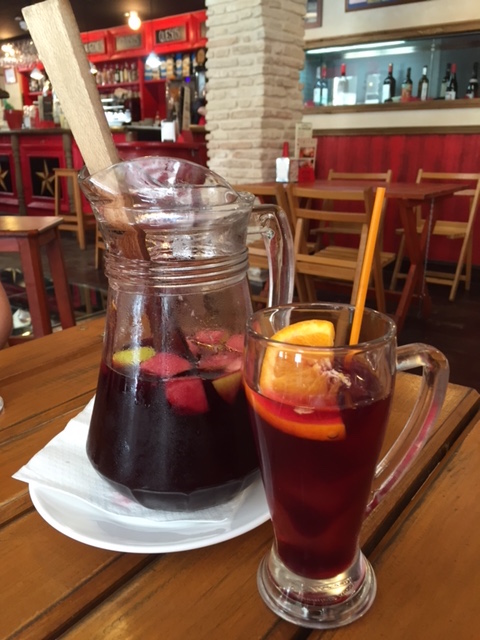 Public fountain on the corner of some building… so cool.
Public fountain on the corner of some building… so cool.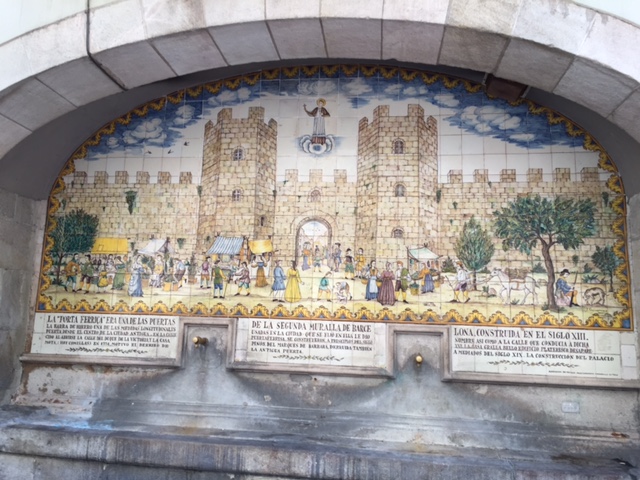
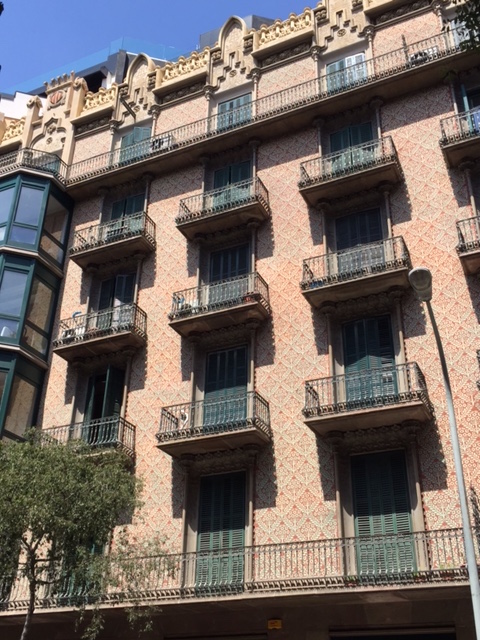
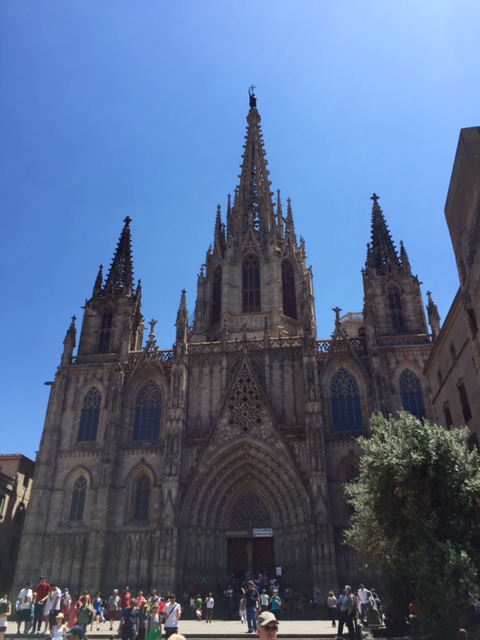
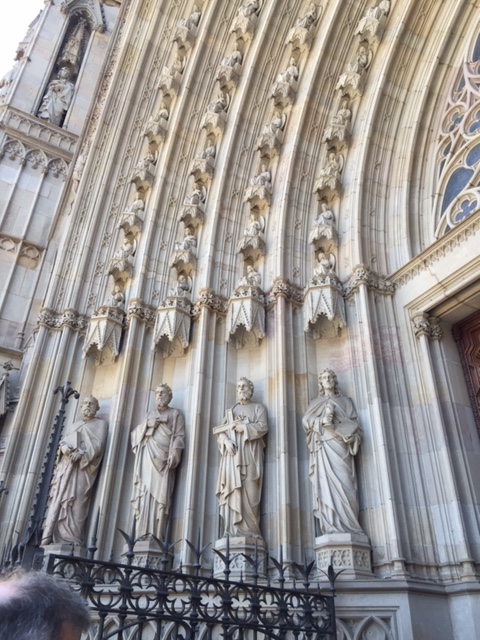 Above the doorway into the cathedral…
Above the doorway into the cathedral…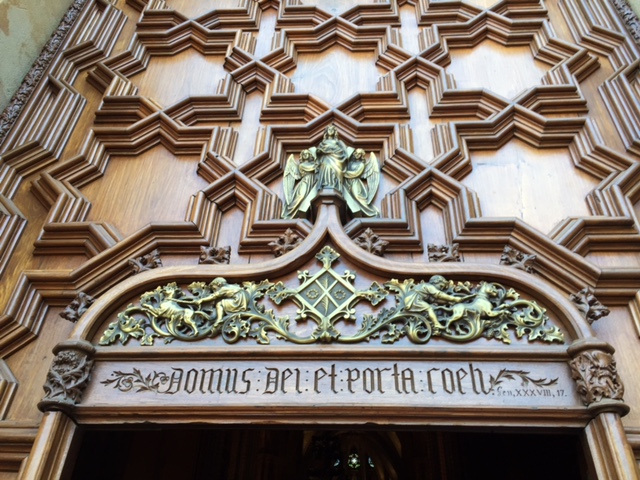 This cathedral has the typical high vaulted gothic arches and is lined with little naves on either side of the main part of the church. Each one is dedicated to another saint and holds a scene with elaborate paintings, statuary, tapestries, and ornate gold painted carvings.
This cathedral has the typical high vaulted gothic arches and is lined with little naves on either side of the main part of the church. Each one is dedicated to another saint and holds a scene with elaborate paintings, statuary, tapestries, and ornate gold painted carvings.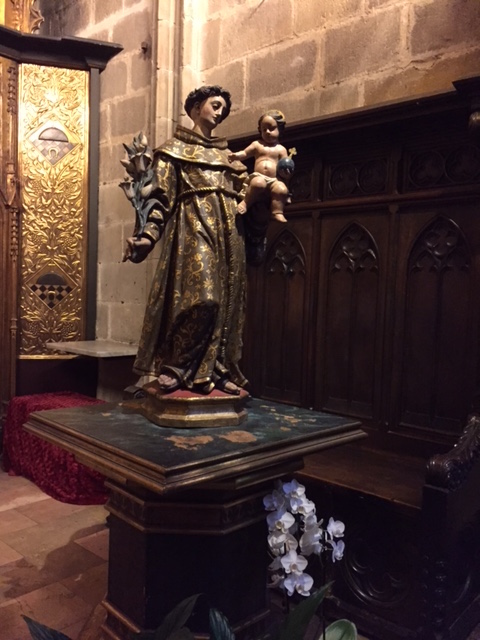
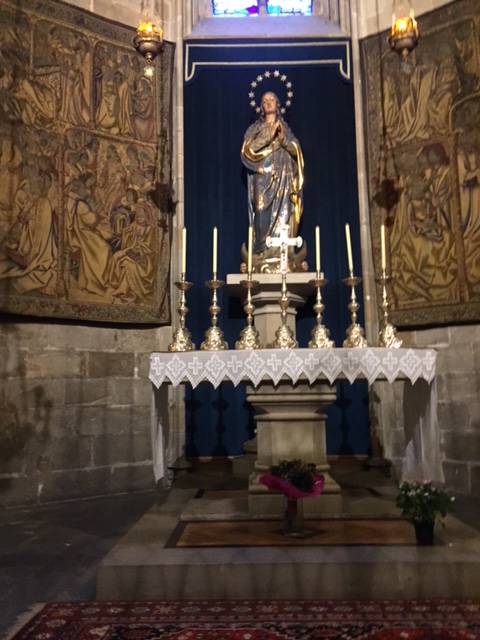
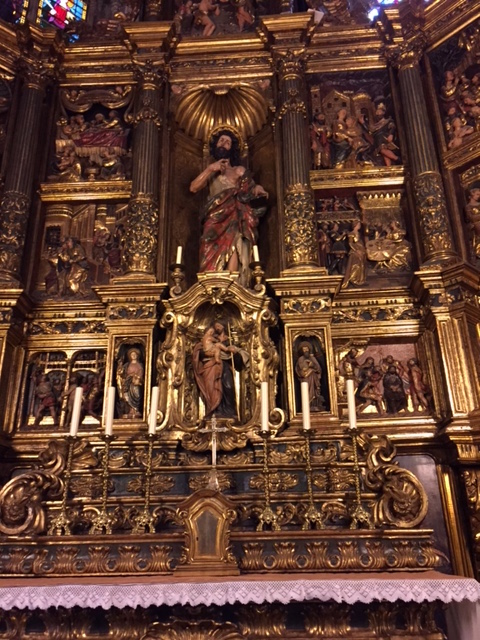
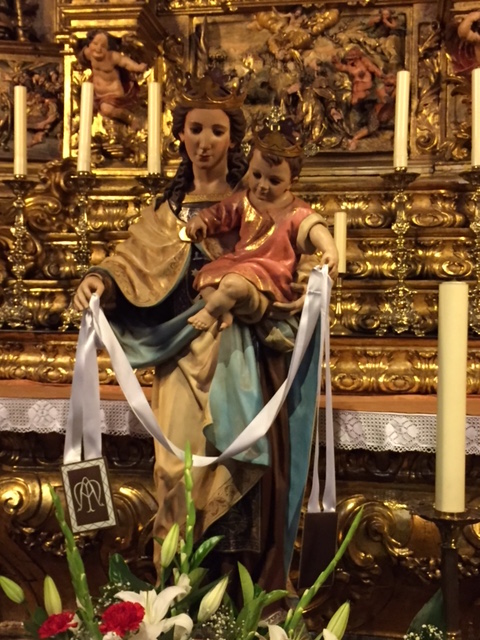 There’s a lift that goes up to the roof, so we got a chance to go up and have a look at the city roof tops, as well as see some of the restoration efforts that are happening as they repair the roof.
There’s a lift that goes up to the roof, so we got a chance to go up and have a look at the city roof tops, as well as see some of the restoration efforts that are happening as they repair the roof.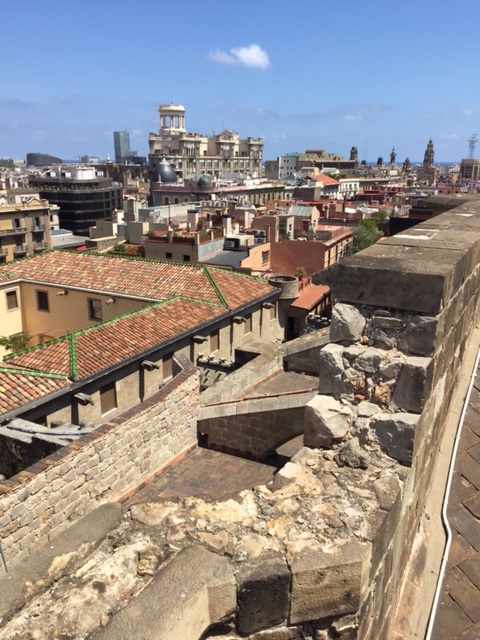
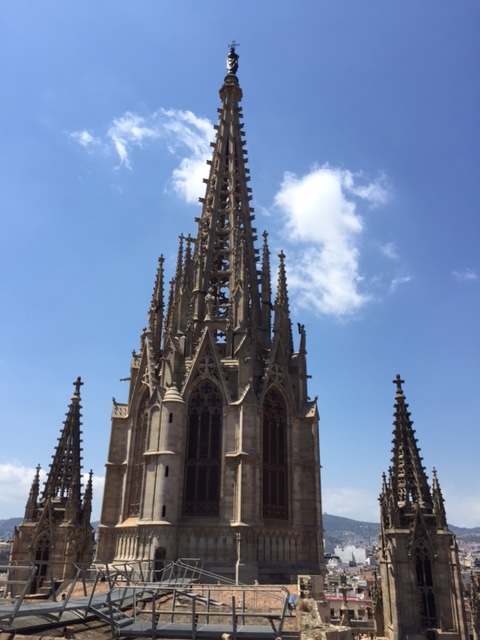 The outside of one of the stained glass rose windows – there are many of these above the buttresses, but from the ground inside you can hardly notice them they are so high off the ground.
The outside of one of the stained glass rose windows – there are many of these above the buttresses, but from the ground inside you can hardly notice them they are so high off the ground.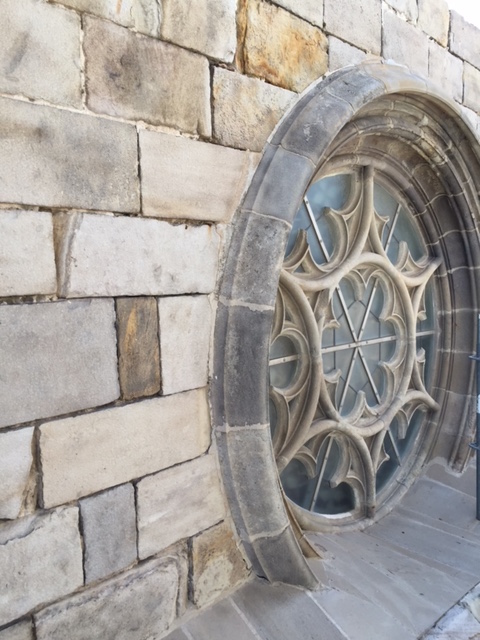 We also had a chance to go out the side where there is a huge cloistered courtyard, with many tombs of important cardinals and bishops, as well as more naves dedicated to saints. This beggared belief to me – there were 13th-15thC paintings out in the courtyard naves that were not protected, not in humidity controlled environments and just outside! Bizarre.
We also had a chance to go out the side where there is a huge cloistered courtyard, with many tombs of important cardinals and bishops, as well as more naves dedicated to saints. This beggared belief to me – there were 13th-15thC paintings out in the courtyard naves that were not protected, not in humidity controlled environments and just outside! Bizarre.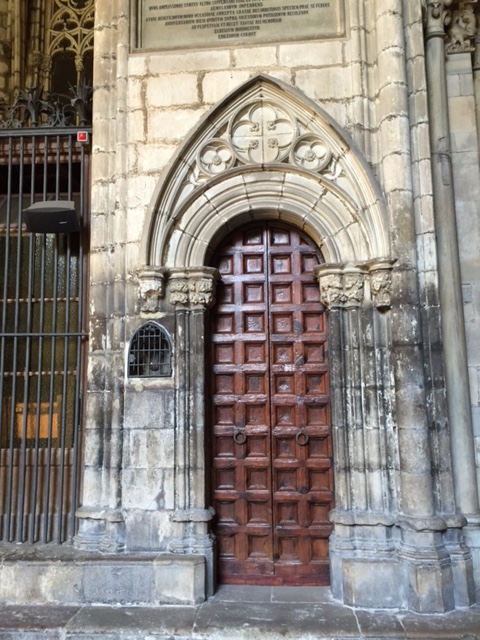
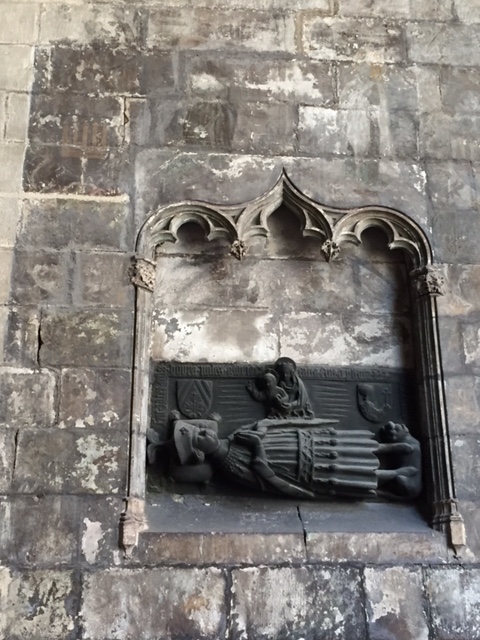 Naves in many nooks to the right…
Naves in many nooks to the right…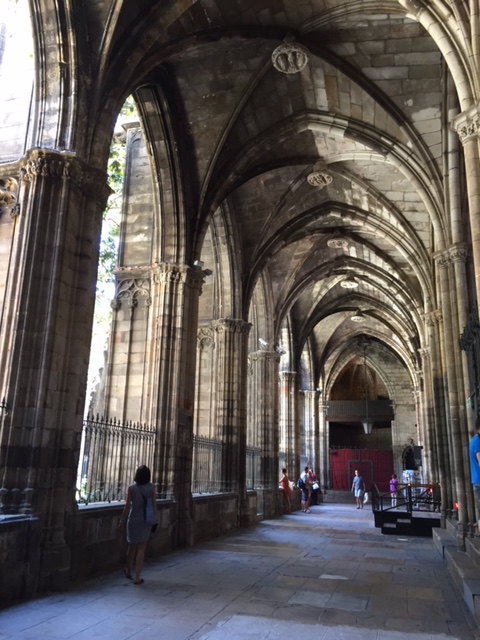 This nave is OUTSIDE! Paintings and all.
This nave is OUTSIDE! Paintings and all.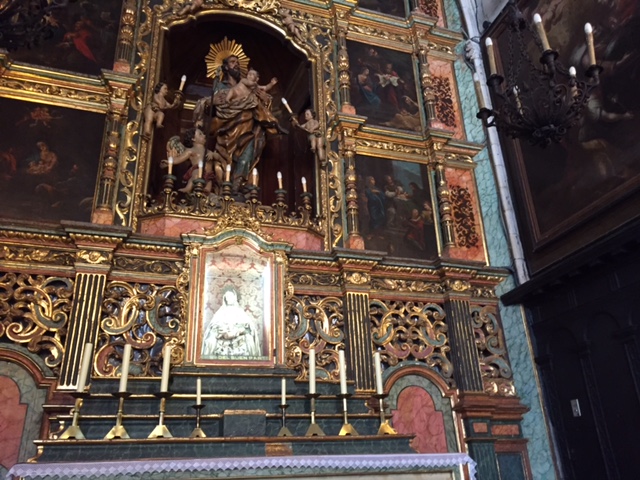 Centre of the courtyard.
Centre of the courtyard.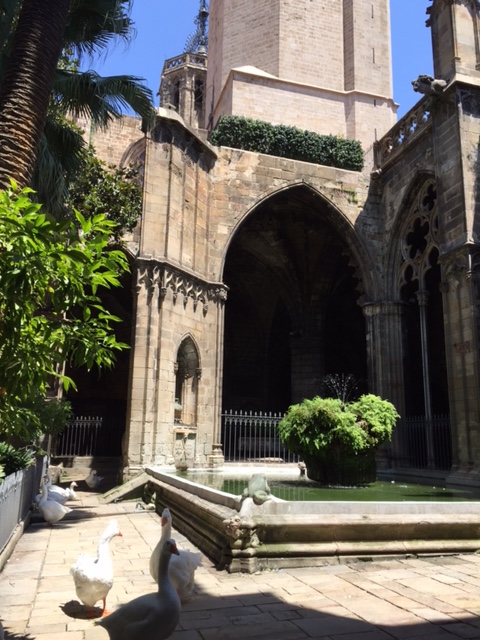
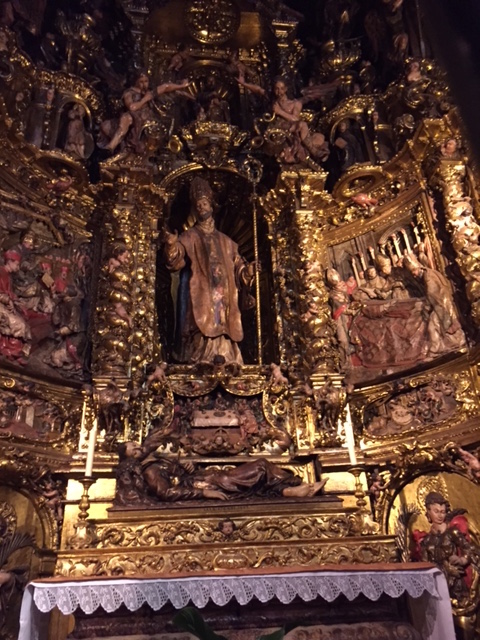 There was also a museum area within the complex, which was a ‘no fotos’ area. But we still managed to get a snap of this Rowan Atkinson look alike on the ceiling…
There was also a museum area within the complex, which was a ‘no fotos’ area. But we still managed to get a snap of this Rowan Atkinson look alike on the ceiling…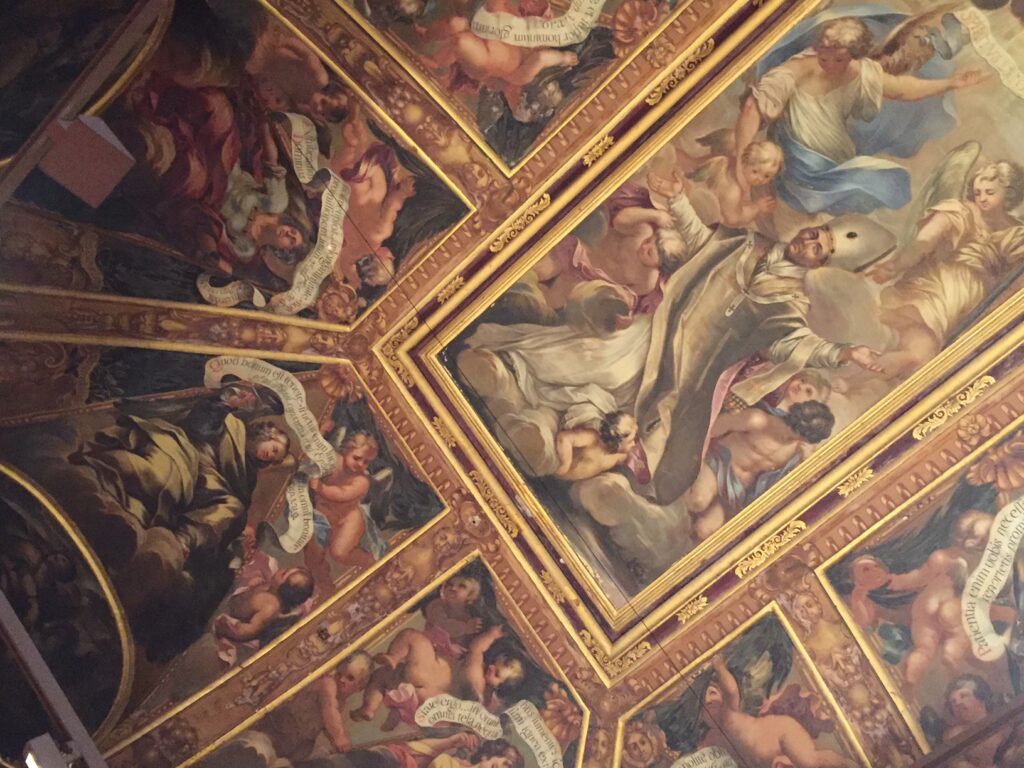
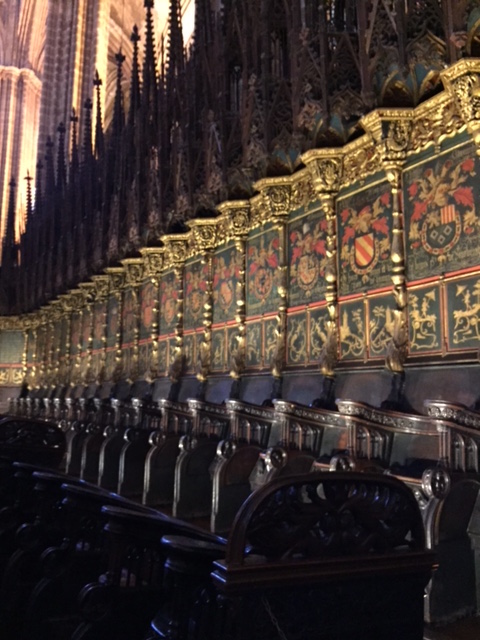
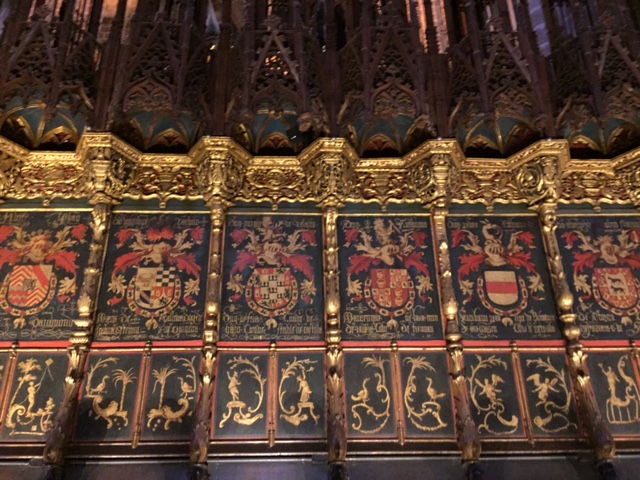
 Last nave as we were leaving the cathedral.
Last nave as we were leaving the cathedral.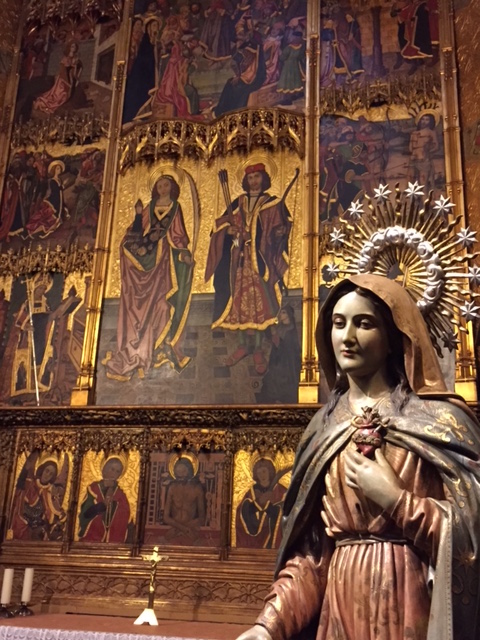 We eventually got back to the hotel, picked up our luggage and then went to find our own hotel. By happy coincidence – or just me being forgetful – it turns out we have a rooftop pool, and nothing could have been more welcome this afternoon. We went up for a quick swim, cooled right down, and came down for a bit of a nap before meeting back up with the others for some dinner.
We eventually got back to the hotel, picked up our luggage and then went to find our own hotel. By happy coincidence – or just me being forgetful – it turns out we have a rooftop pool, and nothing could have been more welcome this afternoon. We went up for a quick swim, cooled right down, and came down for a bit of a nap before meeting back up with the others for some dinner.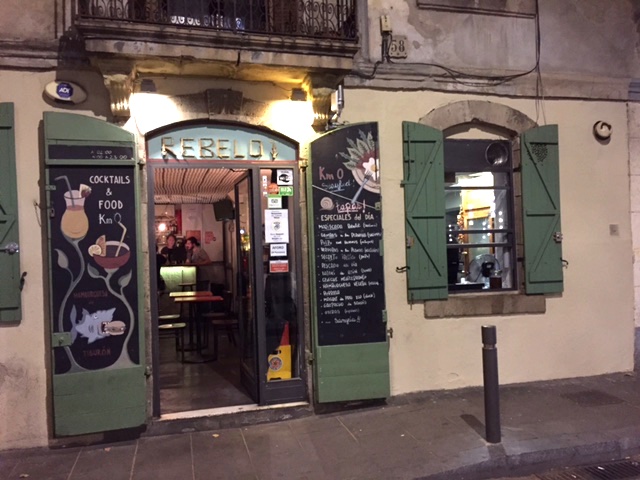
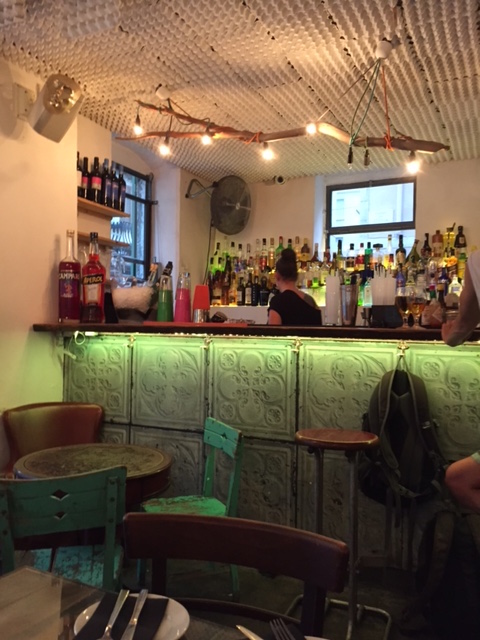 Grilled octopus with chorizo on hummus.
Grilled octopus with chorizo on hummus.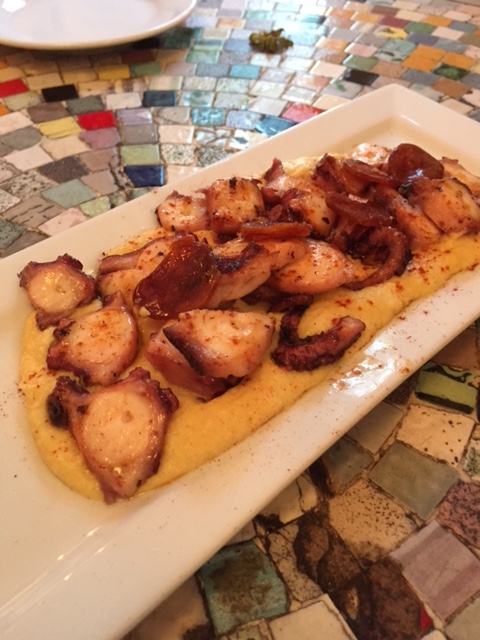 Marinated duck breast with asparagus and orange flavoured puree something? 😛
Marinated duck breast with asparagus and orange flavoured puree something? 😛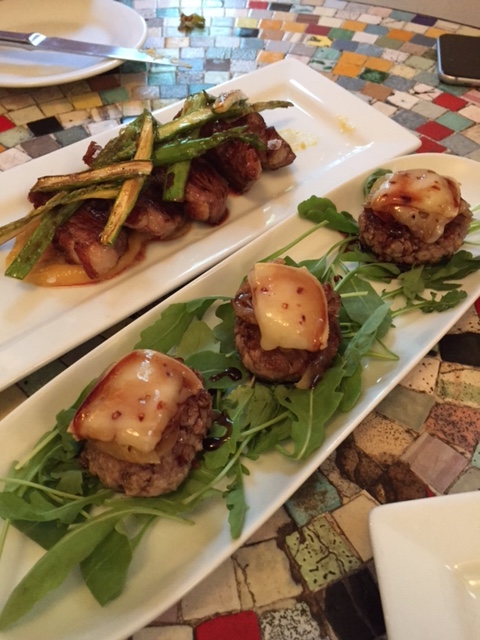 Scallops carpaccio with avocado and tomato salsa with dill or something.
Scallops carpaccio with avocado and tomato salsa with dill or something.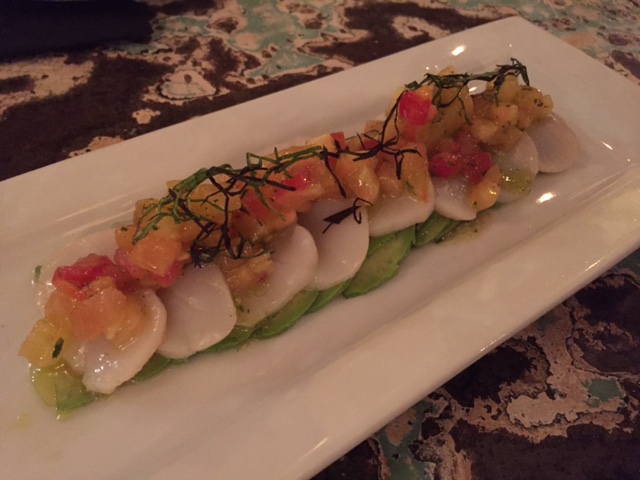 All fantastic – 10/10. Would go again.
All fantastic – 10/10. Would go again.